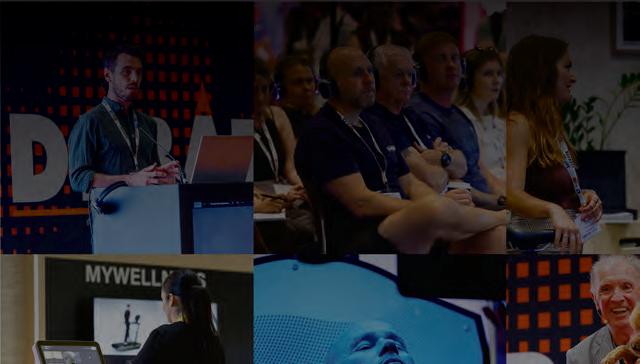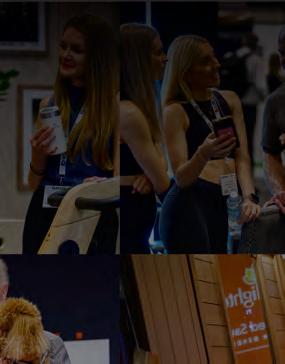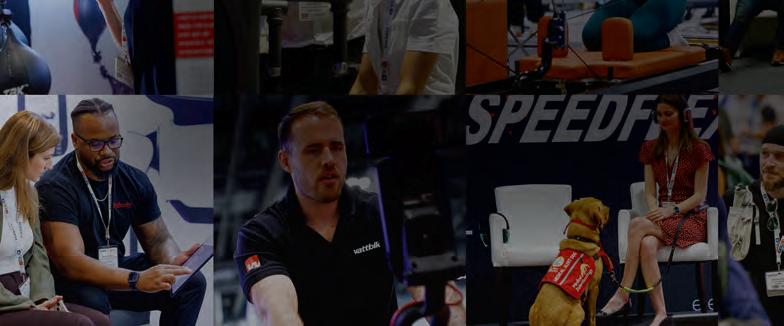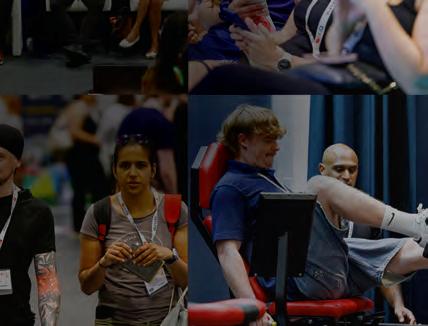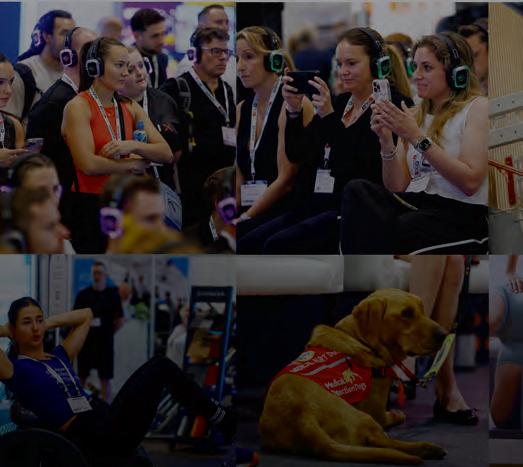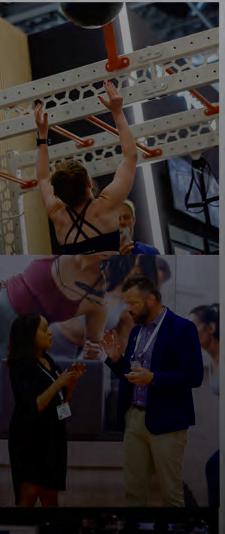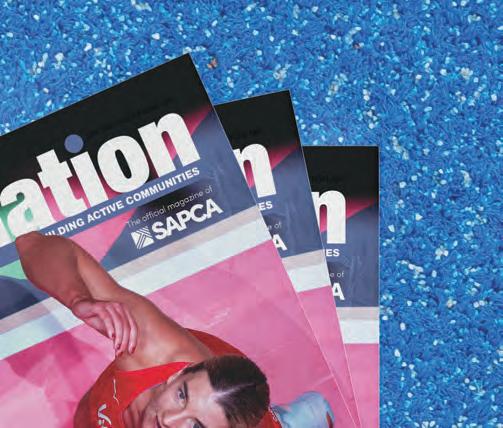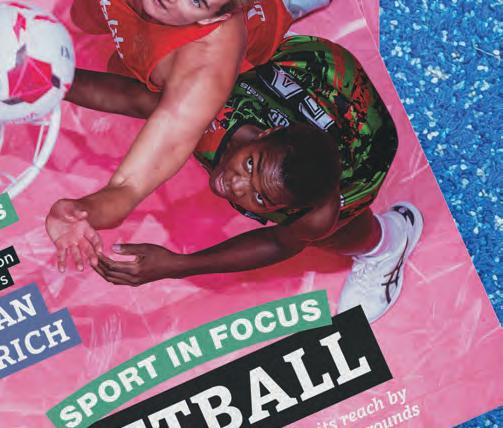INTERVIEW
DAVID JAMES PROFESSOR
In conversation with








INTERVIEW
In conversation with







How England Netball is growing its reach by engaging players of all ages and backgrounds
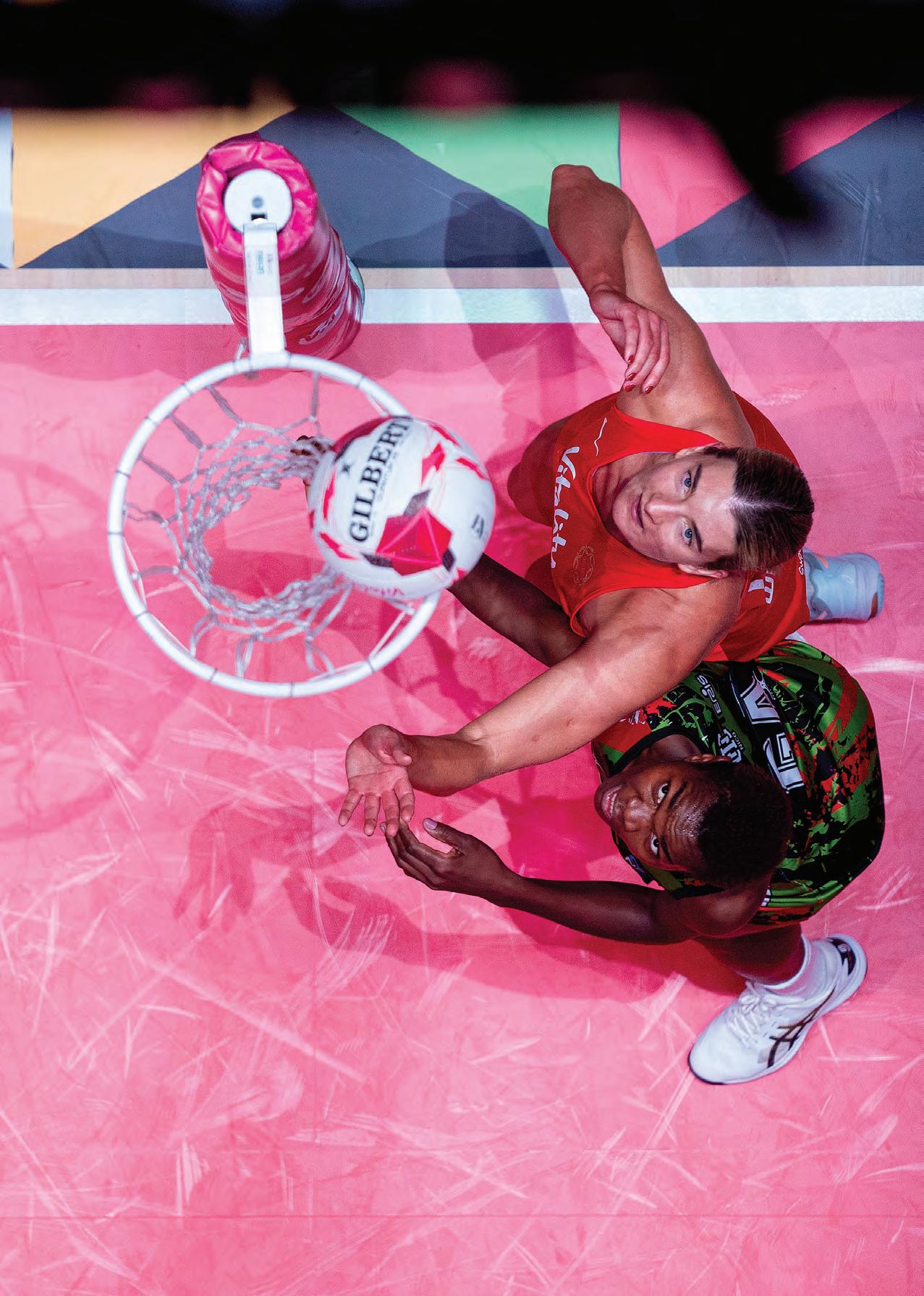






A passion for creating the ultimate quality turf for a wide range of sports applications
Backed

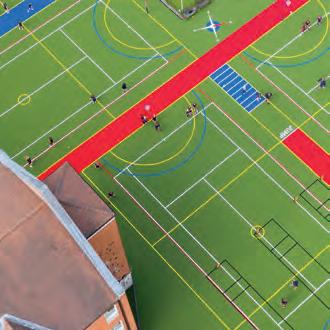
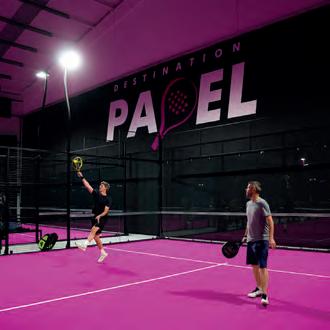







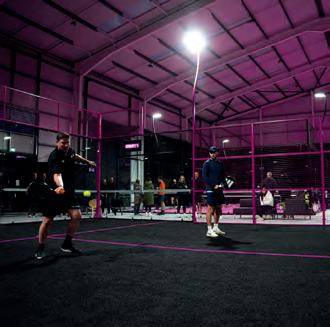

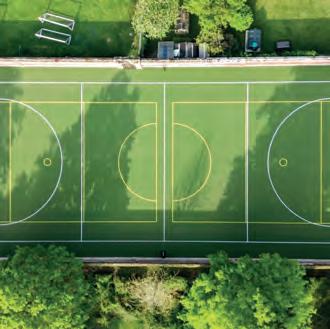



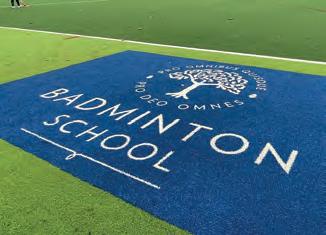







































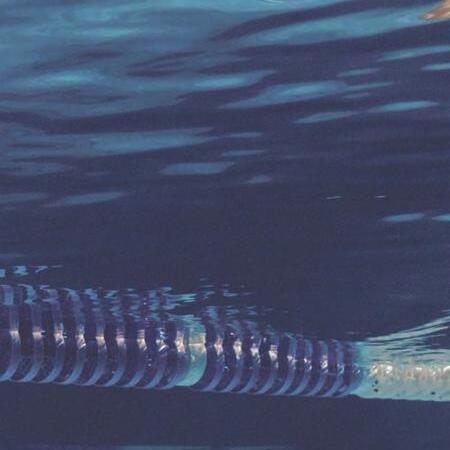


SPATEX represents all sectors of the water leisure industry from pools, spas, saunas to hydrotherapy, steam rooms and play equipment, in both the domestic and commercial arena.



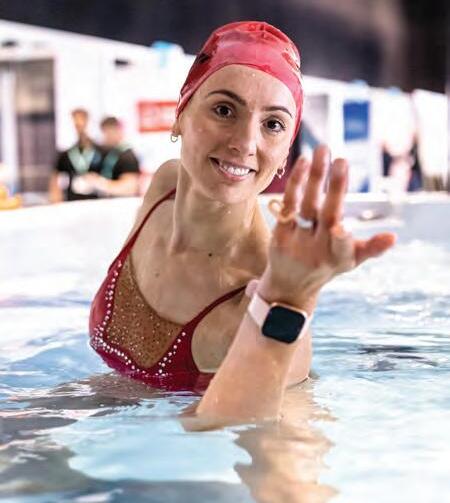





















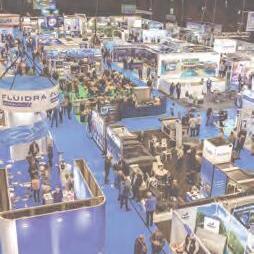

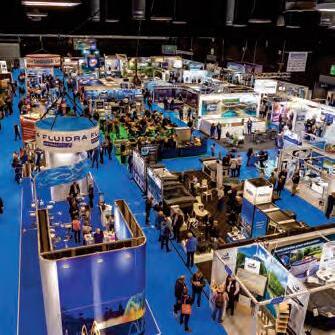







Few areas within the UK sports construction industry are evolving and growing faster than the padel sector. Each week seems to bring new, exciting developments – from partnership announcements and new competitions being launched to l arge new venues being built and planned. This issue of SportsNation also features Issue 2/2026 of PadelNation – so you can update yourself with what has been happening.

Diderich (p. 30) and Labosport’s CEO, Professor David James (p. 48).
As padel expands its reach, SAPCA is keeping a close eye and recently updated its code of practice for padel court construction. You can read more about the updates on p. 124.
Another area that is rapidly evolving is the synthetic sports pitch sector. Across the UK and Europe, companies are working at pace to develop new, sustainable alternatives to traditional rubber crumb infill. The sheer range of materials now being trialled and specified – from cork and olive pits to other organic and mineral options – is impressive (read more about these on p. 60).
There is real scientific rigour behind this work: engineering and environmental research are now central to how we design and build sports facilities. We discuss all of these aspects through two wide ranging-interviews with ESTC’s Stefan
The spirit of progress was also evident at October’s FSB trade show in Cologne. As always, the event proved to be a meeting point for the global sports surfaces and equipment community – a place to connect, exchange ideas and see innovation up close. Walking the halls, it was impossible not to be struck by the value of collaboration in this industry. Whether it’s manufacturers partnering with universities, contractors teaming up with designers, or governing bodies setting common standards, our sector moves forward most effectively when we work together.
Trade shows like FSB are a reminder that networking isn’t just about business cards and conversations — it’s about shaping the future of sport. SAPCA CEO, Richard Shaw, touches on this in his column on page 24.
As we head into winter, there’s one more thing to look forward to: the return of the Ashes. Few contests stir the sporting imagination quite like England versus Australia. While I will personally be hoping that the urn is returned to these shores, I am sure that, whatever the result may be, the contest will again demonstrate sport’s impressive power to inspire and to stir emotions…
Tom
Walker, Editor
Tom
Walker Editor
John Challinor Publisher


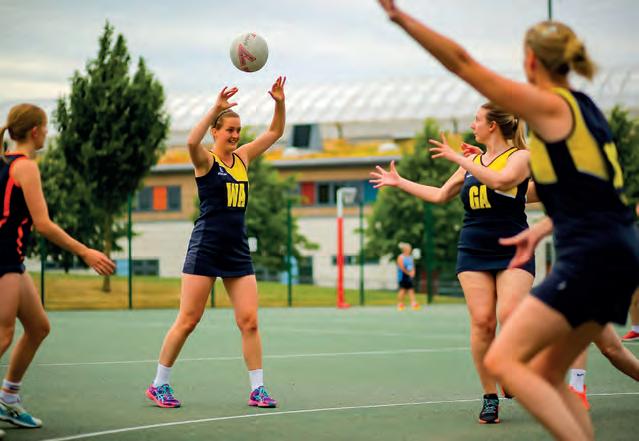





05 From the Editor
From padel to pitches, our industry is evolving
09 News
The latest industry news from around the sports and physical activity sector
22 Column: Lisa Wainwright (SRA)
The CEO of Sport and Recreation Alliance reflects on the organisation’s 90th anniversary
24 Column: Richard Shaw (SAPCA)
Visiting the FSB, the SAPCA CEO is reminded of why face-to-face networking still matters
26 Column: Yvonne Harrison (WIF)
Women in Football CEO says that football benefits when every woman feels they belong in it
28 Column: Huw Edwards (ukactive)
In her November budget, the chancellor needs to back our growing sector, not whack it with taxes
30 Interview: Stefan Diderich
The CEO of ESTC says that sustainability has become central to the synthetic turf sector
38 Sport in focus: netball
Netball is booming, with more than 3.05 million people take part in the sport annually. SportsNation looks at how England Netball is successfully engaging people from all backgrounds
48 Interview: Prof David James
Labosport’s global CEO explains how research-based innovation can shape sports – and why he doesn’t want a world where every sports surface is the same
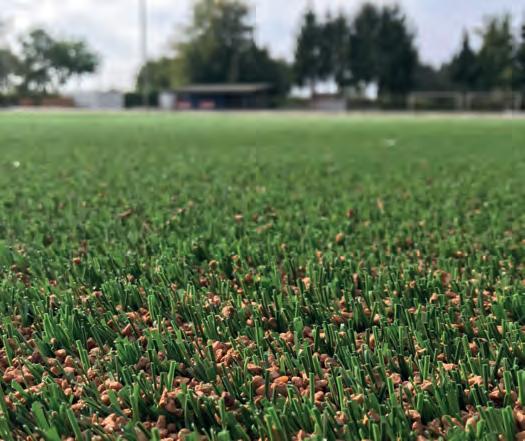







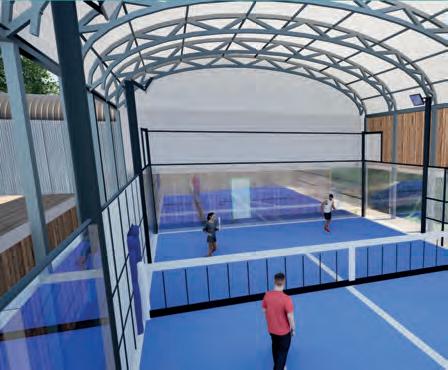

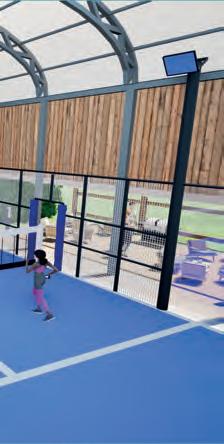


Stefan Diderich CEO
EMEA Synthetic Turf Council @EMEA_STC

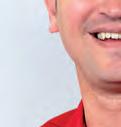
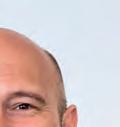
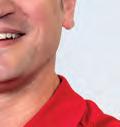
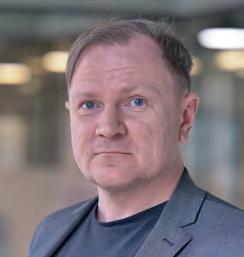
Huw Edwards CEO ukactive @_ukactive
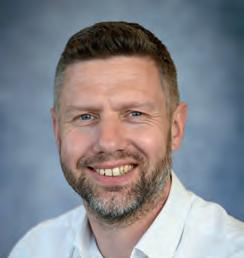
David James CEO Labosport Group @Labosport Richard Shaw CEO SAPCA @SAPCA

Yvonne Harrison CEO Women in Football @WomeninFootball

Tom Walker Editor SportsNation tom@nationmedia.uk
SportsNation is the single, authoritative voice for the provision, delivery, maintenance and management of sports and physical activity facilities. Published bi-monthly, the magazine focuses on the people, places, policies and products that help to build active communities throughout the UK. Subscribe now and we will email you a complimentary copy of the magazine every two months.
As the official magazine of SAPCA (the Sports and Play Construction Association), every issue of the magazine will also include information about technical guidance, funding, standards and product innovations.
www.sportsnation.uk
FOLLOW US:
Advertising opportunities Contact John E: john@nationmedia.uk www.linkedin.com/company/sportsnation @SportsNationMag
SportsNation is published by SportsNation Ltd in association with the Sports And Play Construction Association (SAPCA). www.sapca.org.uk
This publication is protected by copyright and no part may be reproduced, transmitted or stored in any print or electronic format without the written permission of the publisher. Every effort has been made to ensure the accuracy of the contents of this publication and SportsNation accepts no responsibility for any error or misrepresentation. Opinions expressed by the contributors and advertisers are not necessarily those of the publisher and we do not accept responsibility of losses or damages arising from them.
Printed by Bigwave Marketing Ltd. ISSN 2755-0621 (Print) ISSN 2755-063X (Online)
The Football Foundation has launched a new fund designed to provide more welcoming and inclusive facilities for women and girls.
The new Lionesses HERe to Play Fund will provide clubs and organisations the chance to apply for grants of up to £25,000 for items that will make their facilities more inclusive such as:
l Better lighting
l Clearer signage
l Sanitary bins
l Conversion of open showers to cubicle showers
l Private spaces for baby change and breastfeeding
l Officials’ changing spaces
l Changing room improvements
In the last four years the number of girls participating in football has more than doubled – from 1.2m in 2020-2021 season to 2.7m in 2024-2025.
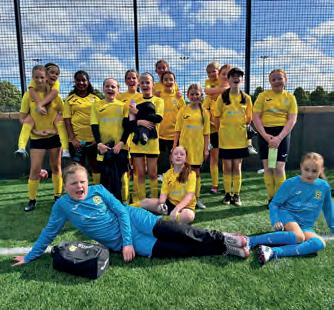

As a result, grassroots clubs are under pressure to provide facilities that can accommodate the increased numbers – while also making venues more welcoming and inclusive to cater for female players.
Robert Sullivan, Chief Executive of the Football Foundation said: “In recent years we’ve seen the women’s
and girls’ game going from strength to strength, particularly following the Lionesses’ inspiring victories.
“The Lionesses HERe to Play Fund will enable even more women and girls to get down to their local pitch, whether they dream of following in their heroes’ footsteps or just want to enjoy the game with their friends.”
Sports clubs and community sport facilities across Scotland are set to benefit from £1m of new investment from sportscotland.
The cash from the Sport Facilities Fund will be shared by 10 projects which have successfully applied for funding to help improve access to sport in their areas. The aim behind
the Sport Facilities Fund is to support capital projects which create or improve the places where people take part in sport and physical activity in their local community.
Priority is given to projects that widen access to participation or allow people to progress further within their chosen sport.
Women’s Super League (WSL) club, London City Lionesses, has secured planning approval for what is described as one of the “most advanced women’s football training campuses in the world”.
Tonbridge and Malling Borough Council’s planning committee unanimously voted to approve plans for the centre at Cobdown Park, in Ditton, Kent. Designed by F3 Architects, the new centre will be built on the site of the current Cobdown Sports Ground and will become the dedicated home for the club.
Plans include the construction of a new Performance Campus building with facilities for both the first team and academy, designed to remove barriers for women and with a focus on performance, recovery and wellbeing. A dedicated academy building will feature a 3G football pitch, which will also be made

available to the community for local Kent FA initiatives, the Kent Girls and Ladies League and for local SEND schools and the Kent disability mixed league. It will play a significant role in growing the girls’ game in Kent, providing new pathways for U12-U21 and enabling better outreach to
schools, grassroots clubs, aspiring female coaches and referees.
The Campus will create more than 50 new permanent jobs across the London City Lionesses’ operations. According to the club, it will also generate £1m per year of investment in the local economy.

A grassroots football hub with seven small-sided 3G pitches has reopened in Wednesbury, Black Country, thanks to a £1.3m redevelopment. Originally opened in 2011, the small-sided 3G pitches, gym and community pavilion at the site – formerly called Friar Park Hub – had fallen into disrepair, severely limiting their use by the local community.
Thanks to £1.1m grant funding from the Football Foundation, alongside additional investment from Sandwell Council, the site has been transformed into an inclusive hub for sport, fitness and community activity. Works at the hub, which involved SAPCA member, SIS Pitches, included the refurbishment of existing pitches to provide a total of seven small-sided 3G surfaces, replacement of 23 sets of floodlights with LED units and a revamp of the gym.

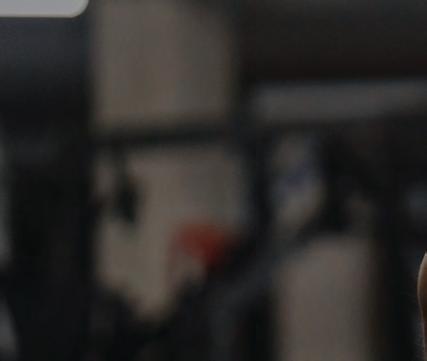




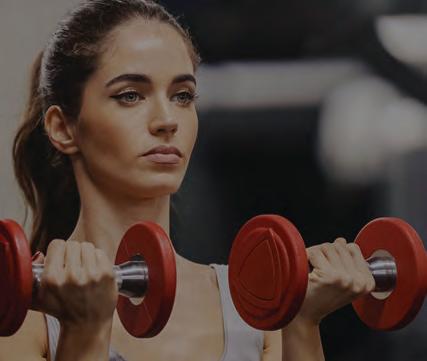
In an industry where cost is often the focus, Active IQ stands apart by delivering more - more quality, more support, more value. We know that price matters, but when it comes to qualifications, reliability, and long-term success, quality is non-negotiable. That’s why we offer:
Industry-leading qualifications – Designed with employers to meet workforce demands


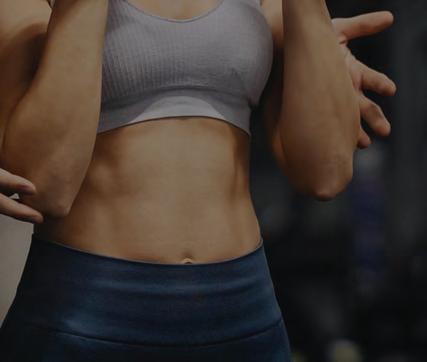
Comprehensive support – A dedicated team invested in your success
Added value – Free CPD, FitPro membership with eLearning purchases, and extra resources at no cost
A trusted partner – Transparent pricing, no hidden fees, and a gold-standard reputation.
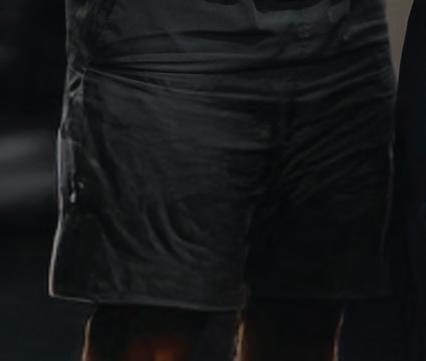
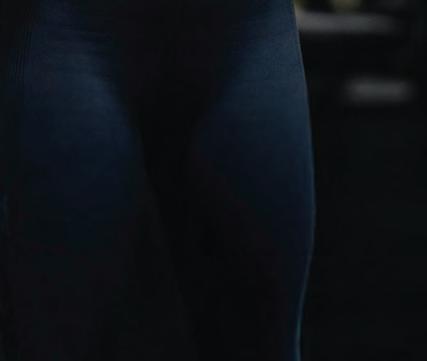
Why settle for less?
Begin with better. Choose Active IQ. Find out more

UK Sport and the four home country sports councils have appointed Nick Pink and Neil Cooper to lead the Safe Sport project across the UK. The project seeks to “redesign sport” to be safer for everyone and follows the publication of the Safe Sport report in June.
Pink, a former CEO of England Hockey, has been named project chair and will oversee the project through an oversight group, bringing together voices from across the sporting sector as well as independent contributors.
SAPCA member company, S&C Slatter, has appointed Avi Natan as its new Head of Sports Estimating. Natan joins S&C Slatter from another SAPCA member, Blakedown Sport & Play, where he spent more than 10 years as estimator and director.
“We’re delighted to welcome Avi Natan to the team,” S&C Slatter said in a statement. “Avi brings over a decade of experience from Blakedown Sport & Play, where he progressed from Estimator to Director. His expertise further strengthens our team as we continue to deliver first-class sports facilities across the UK.
“Avi’s appointment reflects our commitment to providing unrivalled client service in sport, while supporting our continued growth in the placemaking sector. We’re excited to see what the future holds with Avi on board.”
On joining S&C Slatter, Avi said: “I’m excited to join a best-in-class

contractor with the resources, personnel and expertise to consistently secure and deliver large scale sports construction projects from concept to completion.”
S&C Slatter is a sports construction specialist with nearly 30 years’ experience in designing, building and maintaining artificial sports facilities – from synthetic sports pitches and tennis courts to large-scale projects.
Meanwhile, Cooper – currently serving as Triathlon England’s independent non-executive director for welfare and safeguarding – has been appointed project director. He will lead the delivery of the feasibility phase, which will run until spring 2026.
Safe Sport’s mission is to establish a comprehensive and integrated approach to safeguarding in sport and emerged from a shared recognition of the challenges faced by the sport sector in keeping people safe.
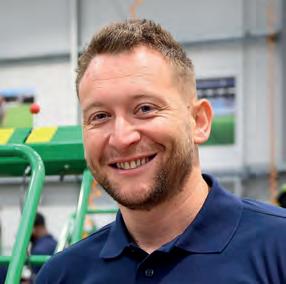
Howardson Group has appointed Scott Reynolds as Key Account Manager, bringing over a decade of experience in the turfcare industry and an extensive knowledge of professional grounds maintenance products. He began his career in turfcare at RT Machinery Ltd, progressing through roles from Area Sales Representative, to General Manager.

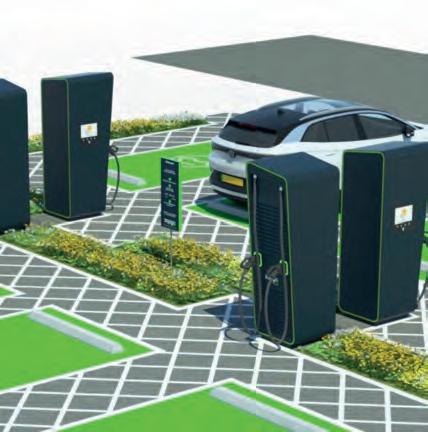






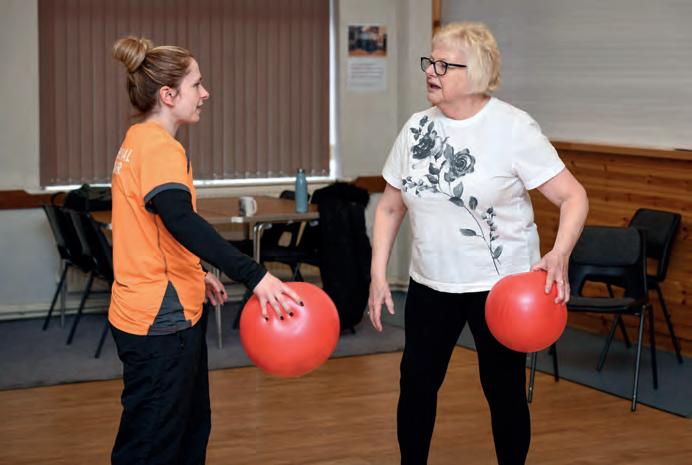
Activity Alliance is partnering with Leeds Beckett University for a research project that looks to better understand how intersectionality impacts disabled people’s exercise participation at a local level.
The project will survey place-based practitioners to find out how they are working to diversify participants in sports and physical activity.
It will also look at how intersectionality is integrated into the local systems that
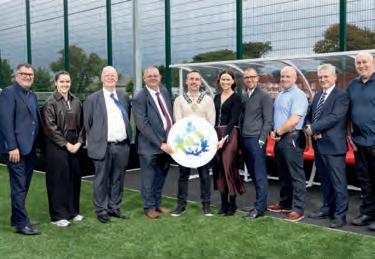
The project is part of the council’s multi-sports facility strategy
drive place-based work across sport and physical activity.
Activity Alliance hopes that the findings from the research will help it to develop co-designed intersectional resources and improve its support offer for organisations.
The disability charity is now asking all those working in sport and activity to offer their experiences (and best practice) regarding intersectional place-based work in relation to disability inclusion.
West Ham United FC has announced the launch of Track Nights, a dedicated run-club aimed at all runners, of all abilities in the local community.
The first Track Night will take place on Friday 14th November at London Marathon Community Track, which overlooks the Premier League Club’s iconic London Stadium home.
East London running club, Mackyard Events, which supports community events, will help West Ham United by leading the 5K run, including providing pacers to support those looking to break their PB.
With popularity in running across London and the UK soaring in recent years, the club hopes to host many track nights in the future, to promote active lifestyles, help runners achieve their own personal goals and continue to have a positive outlook across its local community beyond matchdays.
New £1.2m 3G pitch unveiled at Newcastle, County Down
Newry, Mourne and Down District Council in Northern Ireland has unveiled its newly redeveloped 3G sports pitch at Donard Park in Newcastle.
The £1.2m investment included replacing an old 2G surface with a modern 3G pitch, resulting in a community sports hub that forms
part of the council’s multi-sports facility strategy for the Mournes area. The new surface will also allow football to be played to a competition standard at the site, thanks to a new seating area for 400 spectators. The pitch was funded in partnership by the council, the Department of Education and the Irish FA.
Across the UK, the biggest names in sports, fitness and leisure are turning to us to create show-stopping padel facilities that perform rain or shine.



The results?
Nothing short of game changing:
✔ Memberships up
✔ Court bookings up
✔ Year-round occupancy up
Why not join them?
Whether you’re about to launch your first ever padel facility or are looking to upgrade existing facilities, we’ll help you create a padel destination your community will love, and your balance sheet will thank you for.
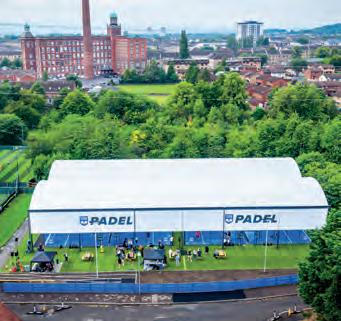


Download our new padel brochure and discover how to serve up success:
• Get inspired by real projects in every shape, size and design
• Learn the key design and ROI questions to ask
• Book your complimentary site visit today
Because when the weather stops mattering, the game changes completely…
Swim England has launched a comprehensive governance review to evaluate and shape the organisation’s governance structures and procedures.
According to the national governing body for swimming, the objective of the review will be to address some of the recommendations within the Listening Report, and to ensure the organisation is in “the best place” to deliver its One Swim England strategy.
“Starting with a blank sheet of paper, the governance review will explore what best practice governance structures and procedures could look like,” Swim England said in a statement.
“It will be rooted in the current sporting landscape with an eye on future challenges and opportunities rather than how things have always been done.”

The project will be guided by a Governance Review Steering Group, whose purpose is to provide strategic support and guidance, acting as a critical friend by advising and making suggestions regarding how to conduct the review and formulating recommendations.
In addition, there will be opportunities for key stakeholders to input into the review early in 2026 to ensure a range of views are heard as part of a consultation phase.
• To read a wide-ranging article on Swimming England’s plans to grow the sport, see Issue 4 of SportsNation.

Powerleague, leading provider of commercial small-sided football in the UK, is teaming up with London 3x3 to launch 3PT – brand-new, fast-paced basketball weekly sessions.
Launching at Blackheath High School in Greenwich, 3PT 3x3 gives players a new way to experience grassroots 3x3 in an organised format, played weekly at a single venue. This exciting pilot marks Powerleague’s latest step in making more sports accessible to local communities, building on its core football offering and recent expansion into padel.
3x3 basketball is a fast-paced variation of basketball, played by teams of three on a half-court with a single hoop. The winning team is either the first to score 21 points or the one with the most points at the end of the 10-minute game period.
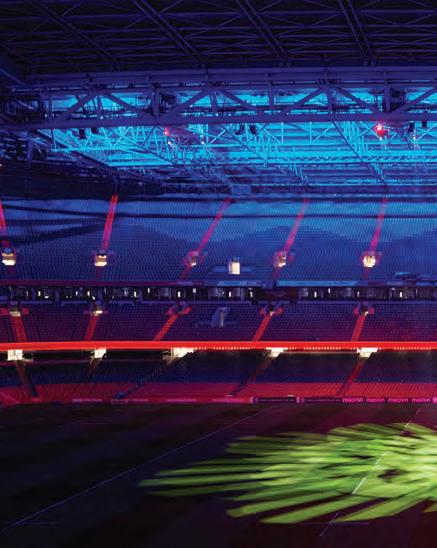





Musco’s sports lighting systems continue to be the solution of choice at major stadiums and arenas around the world, including Principality Stadium in Cardiff, Wales. They partnered with Musco
Learn more about Principality Stadium at www.musco.com/principality






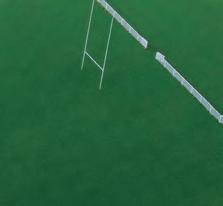








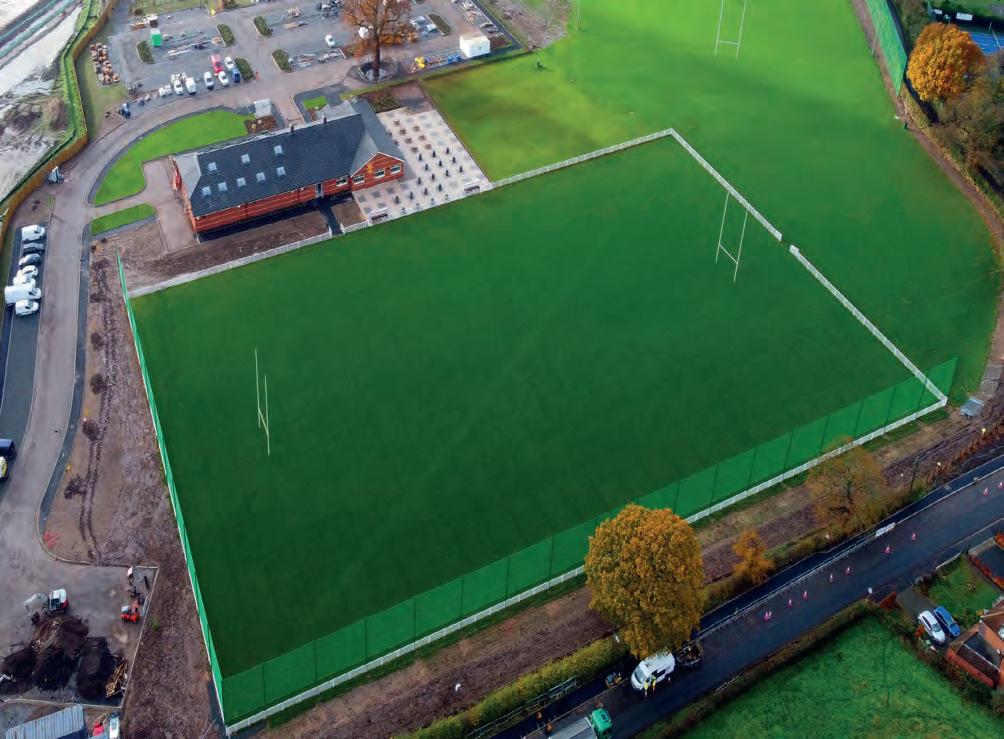






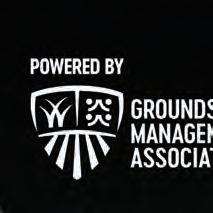



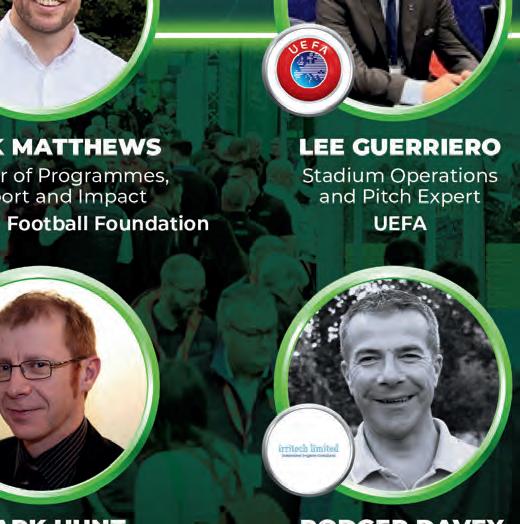





Wrexham AFC has appointed McLaren Construction Midlands and North for the development of a new 5,500-capacity stand at its Racecourse Ground. The project will see the historic Kop Stand at the club’s stadium – also known as SToK Cae Ras – being restored. The new stand will replace the temporary seating which has been in place since 2023.
Once completed, the new Kop Stand will restore the ground to its full four-sided structure. The stand will ultimately increase stadium

capacity to more than 18,000, delivering modern facilities and enable the Club to achieve UEFA Category 4 compliance and host more international matches. The Racecourse Ground is the world’s oldest international football stadium still in use – Wrexham has played at the venue since the club was formed in 1864.
Designed by architects Populous, the stand features a safe standing area, hospitality and accessible seating and will be visible from the city centre.
Work has commenced on a redevelopment project at Somerset County Cricket Club’s (Somerset CCC) Centre of Excellence.
SAPCA member, gcp Chartered Architects, has been working closely with Somerset CCC and the England and Wales Cricket Board’s (ECB) facilities team to reimagine and redesign the indoor training facility, located at the Cooper Associates County Ground in Taunton. The existing facility is being given a new lease of life to “better align with the modern game” and provide improved performance for both the elite level and pathway cricket.
Works will continue at pace through the autumn break with the centre returning to use for the winter training schedule.
Somerset CCC finished third in the County Championship and won the Vitality T20 Blast this season (2025).
Dynamik Sport has been announced as an Official Provider of Glasgow 2026 Commonwealth Games and an Official Supporter of Team Scotland.
The partnership will see Dynamik, a SAPCA member, deliver sports flooring, equipment and services across multiple venues as the Games return to Glasgow next year.
The announcement comes as phase one of redevelopment work at Scotstoun Stadium is completed with the installation of a new Mondo athletics track. Dynamik will also supply temporary 3x3 basketball and 3x3 wheelchair basketball, and netball flooring for the Games next summer.
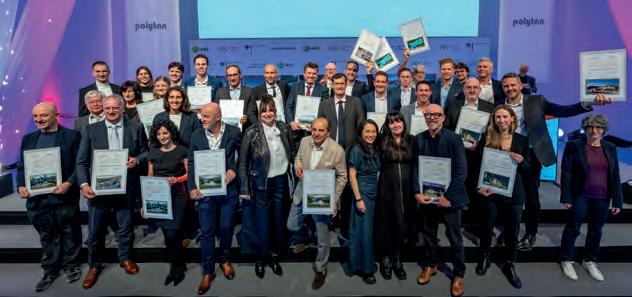
The International Olympic Committee (IOC) and International Association for Sports and Leisure Facilities (IAKS) have revealed the winners of this year’s Architecture Prize for sustainable, accessible and innovative sports and leisure facilities.
This year, there were nine winners, handed to facilities in Australia, Austria, Canada, Germany, Hungary, Liechtenstein and New Zealand. Canadian architect practice, hcma

The nine winners of 2025 are:
Atmosphere by Krallerhof, Leogang, Austria
DESIGNER • ARCHITECT: Hadi Teherani Architects
OWNER • OPERATOR: Hotel Krallerhof
Blue Square Balzers, Balzers, Liechtenstein
DESIGNER • ARCHITECT: Planungsbüro Wegmüller
OWNER • OPERATOR: Gemeinde Balzers
Hiwa, Recreation Centre, Auckland, New Zealand
DESIGNER • ARCHITECT: Warren and Mahoney with MJMA Architecture & Design
OWNER • OPERATOR: University of Auckland Waipapa Taumata Rau
architecture + design, was commended in two categories – one for its Rosemary Brown Community Centre and for the təməsewtxʷ Aquatic and Community Centre.
The annual awards recognise outstanding sports and leisure facilities for their design, functionality and sustainability and is jointly organised by the IOC, IAKS and the International Paralympic Committee (IPC).
“The jury was spoilt for choice, with 69 competition entries from 25 different countries,” IAKS said in a statement.
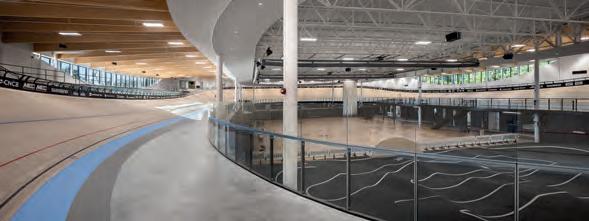
Lotto Thüringen Eisarena Oberhof, Oberhof, Germany
DESIGNER • ARCHITECT: Hoffmann. Seifert.Partner architekten ingenieure with Trabert Ingenieure
OWNER • OPERATOR: Zweckverband Thüringer Wintersportzentrum Oberhof
National Athletics Stadium, Budapest, Hungary
DESIGNER • ARCHITECT: NAPUR Architect, NÜSSLI Group
OWNER • OPERATOR: Magyar Atlétikai Szövetség
Parramatta Aquatic Centre, Sydney, Australia
DESIGNER • ARCHITECT: Grimshaw with Andrew Burges Architects and McGregor Coxall
OWNER • OPERATOR: City Parramatta
Rosemary Brown Recreation Centre, Burnaby, Canada
DESIGNER • ARCHITECT: hcma
architecture + design
OWNER • OPERATOR: City of Burnaby
təməsewtxʷ Aquatic and Community Centre, New Westminster, Canada
DESIGNER • ARCHITECT: hcma
architecture + design
OWNER • OPERATOR: City of New Westminster
Vélodrome Sylvan Adams – Centre Multisports Desjardins, Bromont, Canada
DESIGNER • ARCHITECT: ABCP architecture
OWNER • OPERATOR: Centre national de cyclisme de Bromont
IAKS was founded in Cologne, Germany in 1965 and is a non-profit organisation concerned globally with the subject of sports and leisure facility development. It has been awarded the status of a Recognized Organization by the IOC. IAKS consists of a global network of companies, professionals and organisations that work in the fields of design, construction and management of sports and leisure facilities.
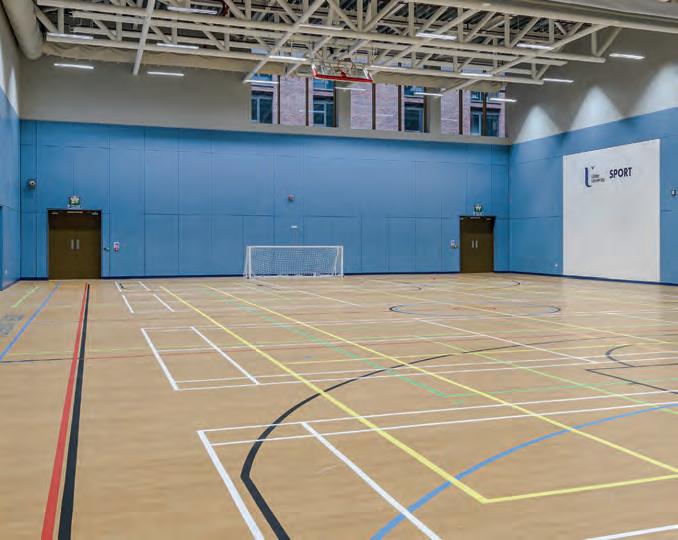

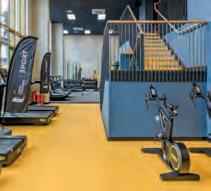



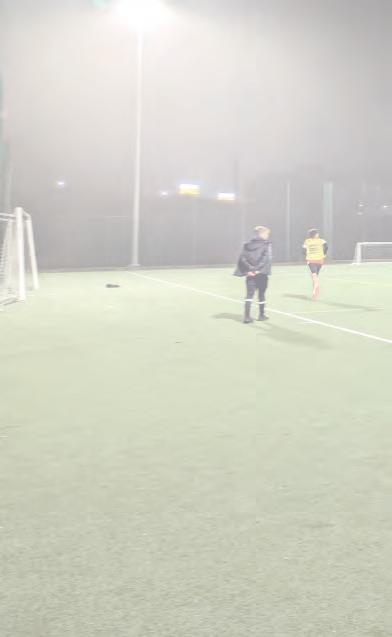







Lisa Wainwright MBE CEO Sport and Recreation Alliance
This month, the Sport and Recreation Alliance (SRA) celebrates its 90th anniversary, having shaped the sports sector since 1935. Founded on the vision of Phyllis Colson of a Great Britain in which every youngster has a chance to take part in enjoyable and health-giving physical activity, for the last 90 years, SRA has been at the forefront of protecting and promoting the transformational power of sport and recreation.
By bringing together a broad coalition of national governing bodies, organisers, volunteers, youth organisations and charities, SRA – called the Central Council of Physical Recreation (CCPR) when it was launched in 1935 – has provided a space for them to work together pooling their knowledge, expertise and resources to work towards this collective ambition.
Over the years, we have worked to drive up participation and access to grassroots sport and recreation, whether that be by hosting brilliant spectacles such as the Hampstead Heath Ski jump in 1951, or through the opening of series of National Sports Centres. The first was opened in 1946 at Bisham Abbey and is still in use today by both elite athletes and community groups.
Fast forward to 2010, we saw a significant change in the history of the organisation, as we rebranded as SRA to better reflect our work and what we stand for. We are an alliance of sport and recreation organisations, from NGBs to charities and work collaboratively to put forward the views of our members and provide them with the services they need.
The name change preceded arguably the biggest challenge the sector has faced collectively since the Second World War – COVID-19. During the pandemic, the alliance helped lead the
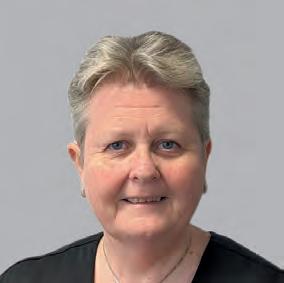
We remain committed to ensuring everyone can get active, regardless of age, gender or ethnicity
sector’s response, campaigning on behalf of our members to the government, which eventually culminated in £63m of relief funding for leisure centres with pools, saving several vital facilities. More recently, our campaigns like Reconomics, highlighting the enormous value of outdoor recreation and Let’s Dance!, getting the country dancing, have shown the enduring power and influence of SRA in encouraging and inspiring sport and movement. We are also delighted to be hosting the International Working Group on Women in Sport, which will culminate in a global summit in July 2026, leading on gender equality for the wider sport sector.
As we celebrate our 90th anniversary this year and reflect on our history, we also pay tribute to the pioneering work of our founder, Phyllis Colson and indeed HRH, the late Prince Philip, who served as President between 1951 and 2009. In that time, he was a brilliantly strong voice for the Alliance and the wider sector. His legacy continues to be celebrated today, with HRH Prince Edward, the Duke of Edinburgh, currently serving as our President. We are delighted to be celebrating a significant milestone for the SRA this year, but we’re also firmly committed to continuing our work into the future, making the case for more investment in grassroots sport and recreation, serving our wide variety of members and making sure everyone, regardless of age, gender or ethnicity can get active, and building on the vision first set out by Phyllis Colson 90 years ago.



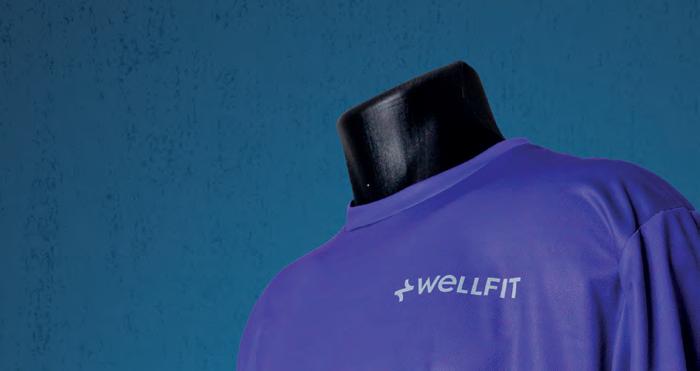


Pixel-perfect logos





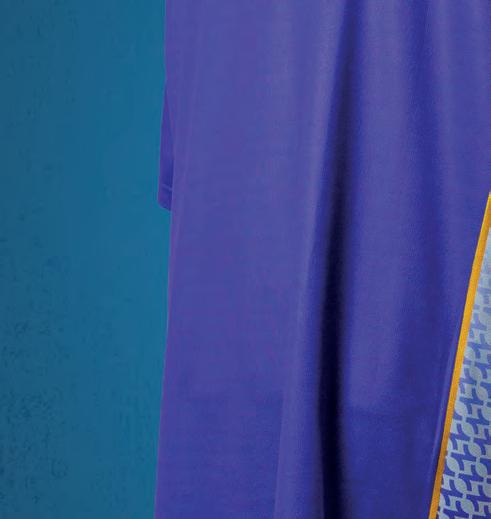












Perfect for gradients

Richard Shaw CEO SAPCA
In an industry that thrives on connection and collaboration, there are few occasions that bring together such a breadth of expertise as the FSB trade show in Cologne. Every two years, thousands of professionals from across the world’s sports and play sectors gather under one roof –manufacturers, contractors, architects, governing bodies and federations – all united by a shared goal: to raise standards and drive innovation in the places where people play sport and play.
The show floor itself is a unique environment. There’s something about the physical format of a trade exhibition that lends itself perfectly to our industry. You can spend up to four days meeting with new suppliers, catching up with long-standing partners and, in between, bump into a dozen familiar faces in the aisles. Conversations start naturally, often sparked by a quick hello, a shared observation, or a glance at an interesting new product.
In a world increasingly shaped by social media, virtual meetings and AI, a large-scale trade show might sound a little old hat. But in practice, FSB proves the opposite.
The show reminded me just how valuable – and irreplaceable – real, face-to-face contact can be. Digital tools are fantastic for efficiency and convenience, but they rarely recreate the spontaneity and openness that happen when people meet in person.
Over the four days in Cologne, I found myself talking to dozens of industry colleagues. Many of those conversations were ones I could have had on the phone – but almost certainly wouldn’t have. They were the kind of informal chats that don’t feel urgent enough to schedule, yet end up being incredibly worthwhile. A brief exchange in a corridor might lead to a new idea,

Digital tools can’t replicate the spontaneity and openness that happen when people meet in person
a partnership, or simply a clearer understanding of shared challenges. That’s something you just can’t replicate through emails or video calls.
Beyond the exhibition stands, the event also offered a valuable opportunity to strengthen international connections. I met with representatives from a number of organisations similar to SAPCA, all of whom share our mission to promote quality and professionalism in sports facility construction. One particularly productive meeting was with Fred Stringfellow, Executive Director of the American Sports Builders Association (ASBA). We discussed how our two associations can work more closely together, particularly in sharing knowledge and best practice around the rapidly growing sports of padel and pickleball – both of which are creating exciting new opportunities on both sides of the Atlantic. What became clear over the course of the show is that while our industry continues to evolve – embracing sustainability, new technologies and changing participation trends – the fundamental importance of human connection remains the same. Trade shows like FSB don’t just showcase products; they bring together the people who make progress happen.
As I returned home from Cologne, I was reminded that the real value of events like FSB isn’t measured in the number of business cards exchanged or meetings scheduled. It’s in the countless small interactions that collectively strengthen our industry’s community – and ensure that, even in a digital world, collaboration stays at the heart of what we do.








UK BUILT CORE GYM STRENGTH EQUIPMENT, REMANUFACTURED KIT AND CUSTOMISATION OPTIONS.
RELOCATION















NATIONWIDE
TRADE
Sales@pslt.co.uk
www.pslt.co.uk
01282






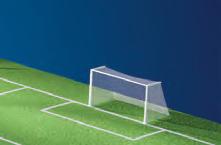







Yvonne Harrison CEO Women in Football
Women in Football (WIF) published its fifth annual industry workforce survey results last month. The survey results highlighted three indisputable realities for those working in the game:
l Discrimination is persistent and widespread. 78% of women had experienced discrimination based on their gender in the workplace.
l Systems for reporting discrimination are ineffective. 56% of women working in football said no action was taken after reporting gender-based discrimination.
l Workplace culture is a significant barrier. 86% of women working in football believe women must work harder than men to achieve the same recognition and benefits. 69% of men agree with them.
The data from the 2025 survey represents the lived experiences of people working in the game: they absolutely deserve better. Respondents of ethnic origins under-represented in the industry unequivocally demonstrated, through their feedback, that football’s diversity problems run far deeper than just gender, highlighting systemic exclusion.
If the industry is to change, we need to recognise these hard truths. We need women to be supported, valued, and recognised, ensuring a commitment to psychological safety in the workplace. Currently there is a clear perception gap between men and
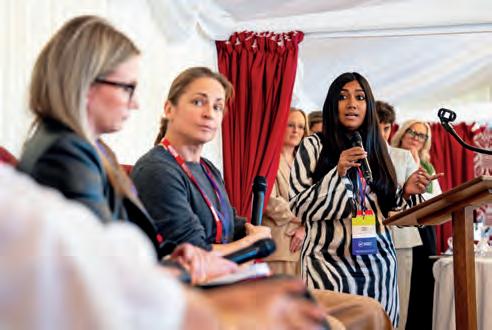

We can create a game where every woman belongs, where women’s voices inform solutions, and men show true allyship
women working in the industry. Just 52% of women working in football believe football is a sector where women can excel, compared to 81% of men.
Despite the manifold challenges, respondents also expressed optimism. At Women in Football (WIF), we believe that current gaps represent clear opportunities and remain steadfast in our belief that a more diverse workforce is a better workforce. We are determined to continue working with our industry partners to support more become truly gender-inclusive employers.
At an event WIF hosted at the House of Lords last month, governing bodies, leagues, clubs, players, media organisations, commercial brands, government and NGOs were all represented, showcasing the strength and breadth of our community.
I invited everyone present to not only listen, but to be part of the solution. By supporting the work WIF is doing, we can create a game in future where every woman belongs, where women’s voices inform solutions, and men, by being an active part of the conversation, can demonstrate true allyship in action.
For a full breakdown of the industry workforce survey data, visit: https://www.womeninfootball. co.uk/news/2025/09/24/breaking-the-silence-4-in5-women-report-workplace-sexism-in-football/
WIF is a membership organisation with 12,000 members of all genders. It works to support its members with their professional development; creating opportunities to network and to celebrate members’ success. WIF supports organisations to be more gender inclusive through club and corporate membership and brand partnerships and advocates for change across the football industry. For more, visit: https://www.womeninfootball.co.uk/join-us/
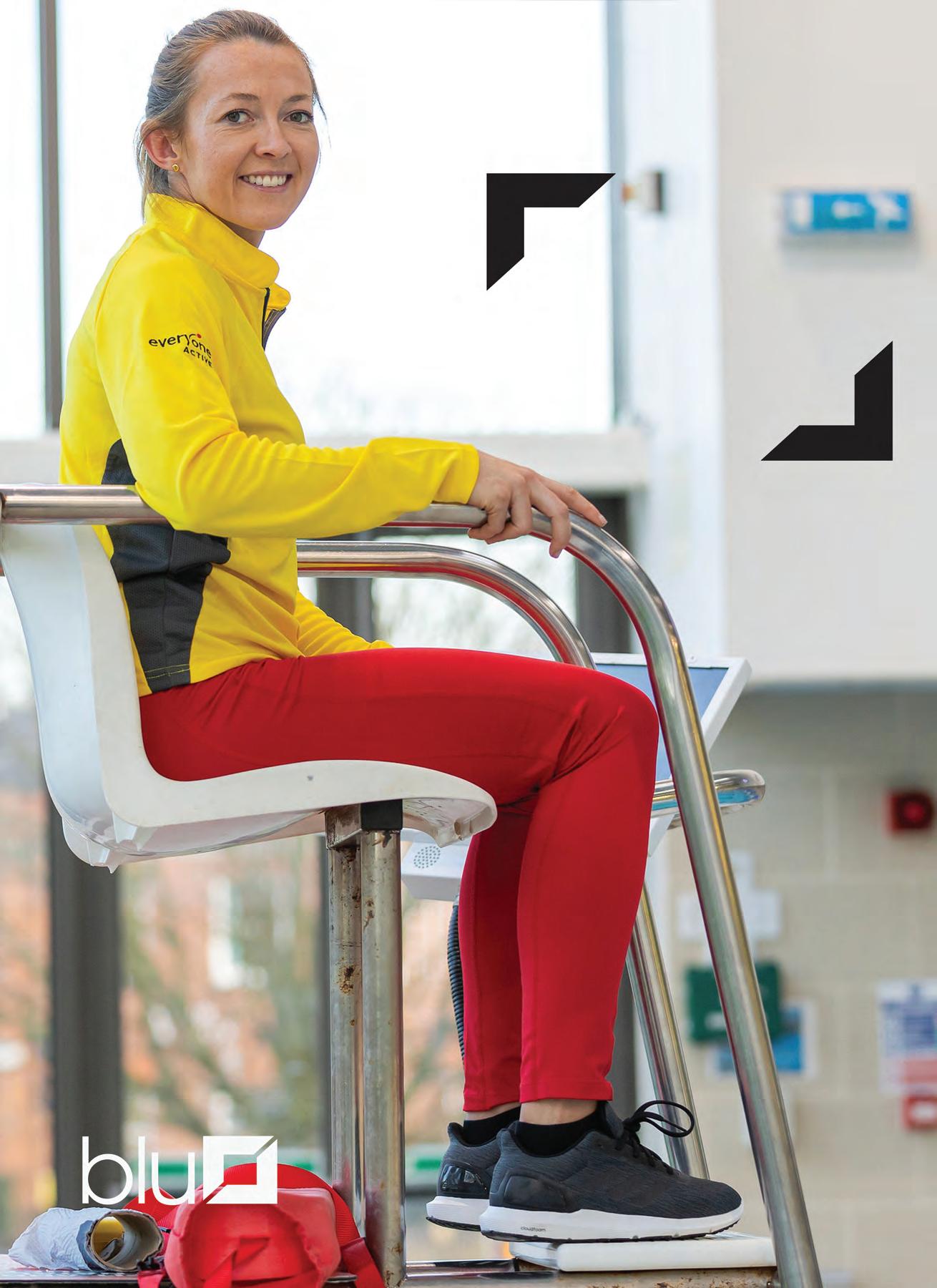


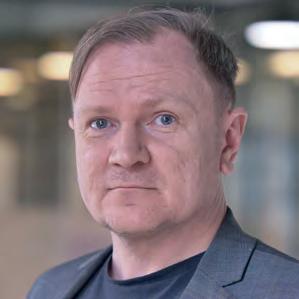
As the Budget looms at the end of November, the voice across all sectors is united and clear: there can be no more tax on business.
The fear is that there is a repeat of the 2024 Budget, which was a nightmare for business and saw sharp increases in operational and employment costs – and our sector was no exception. Lessons must be learnt from that and the Chancellor must not punish businesses any further. Instead, now is the time to make pro-growth decisions that encourage investment, improve productivity, and create business confidence.
This is especially the case for the physical activity sector. The post-pandemic growth of the market is a major UK PLC success story, with more than 600 million visits recorded last year to gyms, pools and leisure centres (UK Health & Fitness Market Report 2025). Revenue across the sector has also risen from £5.2bn in 2023 to £5.7bn in 2024 – an impressive 8.8% increase. All of this has been achieved against a difficult economic backdrop.
As reported earlier this year, our sector has successfully responded to the public’s changing attitude to health and wellbeing. More and more people are recognising the benefits of being more physically active and prioritising their time and money in pursuit of their own physical and mental health. To support this, ukactive’s Consumer Engagement research shows that Britons are spending up to three times more on their health and fitness than they are on drinking socially (15% vs 5%), with options such as eating out (9%) appearing lower on people’s spending priorities, suggesting many are choosing to invest their money in gym memberships for their long-term health and wellbeing.
Creativity
isn’t about waiting for inspiration; it’s about showing up and making something, even when it’s messy
That said, this growth cannot be taken for granted. The Government needs to place significant focus and care on our sector as there are still some areas of fragility. Demand remains strong for our sector’s services, but the ability to meet that demand and secure investment into the sector is being threatened by low investor confidence and a lack of clarity on how to afford replacing ageing facilities, especially swimming pools. Higher taxes would stall expansion plans, delay redevelopments, reduce reinvestment in ageing facilities and undermine the chances of any long-term growth.
Imposing further business taxes on our growing sector would place more pressure on operators who are already working on low margins, and risk service reduction, especially for non-commercial and socially valuable programmes that keep people out of hospital. Our message will continue to be clear to the Government and MPs across the UK whose constituents depend on the gyms, pools, and leisure centres in their communities. The Budget needs to back our sector, a growing sector, and not whack it with more business taxes. Failure to heed this concern would lead to a continued stalling of economic growth, suppress consumer demand and employment into the sector and reduce services that keep people out of hospital. Do not repeat the mistakes of the 2024 Budget and instead, back this sector to help drive economic growth and take pressure off the NHS.
Leisure DB’s Monthly Market Tracker lets you quickly identify and respond to new opportunities in the market and on your doorstep.
Each month, we round up key developments in the UK gym market: openings and closures, planning updates, proposed expansions, rebrands, management changes and more.
Keep your finger on the pulse and your business one step ahead.
Find out more and download a free sample report: leisuredb.com/market-tracker
SportsNation sat down with Stefan Diderich, Director General and CEO of EMEA Synthetic Turf Council.
Stefan Diderich has been involved in the turf industry since 2004, working for (and with) several companies, including TenCate, Bonar Yarns and Mattex. Through gaining a reputation for professionalism and dedication, he became involved in a number of sector organisations globally – including as member of the Board of Directors at the North America-based Synthetic Turf Council (STC) from 2015 to 2017.
When the European synthetic turf industry recognised that a new direction was needed for the sector, Diderich was asked to take on and drive the re-organisation of the then European Synthetic Turf Organisation (ESTO). He was named Director General/CEO in June 2018 and has since overseen its transformation into a modern trade association – which included rebranding the organisation as the EMEA Synthetic Turf Council (ESTC).
There was a clear need for an organisation to serve and protect the general interests of the synthetic turf industry. Back in 2018, the companies were going in different directions. As a result, they were unable to join forces and, on one hand, stand up to defend the industry against unjustified allegations and, on the other, to accomplish objectives that
no one single company could achieve by itself. Today, the motivation of the members to work together, through ESTC, to strive towards a sustainable industry is tremendous and makes my role very rewarding.
For those readers who might be unfamiliar with ESTC, what is it and what does it do?
It is the industry association for synthetic turf in the regions of Europe, Middle East and Africa. It is our mission to represent a turf industry which embodies excellence, sustainability and innovation. Through advocacy, education and collaboration, we drive responsible practices and evidence-based progress, ensuring the enduring positive influence of turf solutions on communities and the environment.
I often say, “I have as many bosses as there are members”. On the basis of the input from our members, it is my responsibility to determine the overall strategic direction of ESTC and monitor the progress towards achieving our objectives. With the help of the rest of the staff and the members, my key task is to represent ESTC to the outside world, such as legislative bodies, sports governing bodies and other trade bodies.

The motivation of our members to work together towards a sustainable industry is tremendous

Environmental care is not a separate pillar – it’s the central theme in everything we do
What are the main areas of work of ESTC at the moment?
There are three key priorities. One is to ensure the synthetic turf sector becomes a sustainable industry. For this, we work on items like yarn durability, end-of-life solutions and PEF (product environmental footprint).
Another one is to strive for a fair competitive playing field for the industry, where companies have the opportunity to strive for high quality turf and innovation. The third, perhaps most important, is to show and demonstrate the positive impact synthetic turf makes in the world. Synthetic turf allows for a significant increase in playing hours and, as a result, increases physical activity and improves societal health. This often gets forgotten and needs a lot more emphasis.
And what about the future – what will the main focus areas be in 2026 (and beyond)?
After getting on track with sustainability, with several projects ongoing, we have ensured that environmental care is and will remain at the centre of the strategy of ESTC. For the future, though, it is

important that we all realise what the impact is of synthetic turf on society, health and environment.
It is often forgotten that turf is a solution to problems, such as the lack of public sports facilities in regions that have unfavourable climatic conditions to growing natural grass. The ultimate goal is to have sustainable synthetic turf, allowing for increased activity and health, inclusivity and welfare in society.
ESTC’s vision is to develop a circular strategy with “four pillars” – could you tell us more about that?
The four pillars on which our strategy is built are knowledge, advocacy, networking and communication. First of all, it is important that ESTC understands what is going on in the turf market. We collect data about key topics, such as yarn durability, water permeability, playing hours, health benefits and the environmental impact of synthetic turf. In the knowledge committee, we collect data and ensure that this is being transformed into valuable information.
This information is the basis for our dialogue with regulatory bodies, such as the European Commission and sports governing bodies. By close collaboration,

we ensure they have access to the proper information that they need to make the right decisions on laws and regulation. This is what we refer to as advocacy.
Sharing the information with both members and non-members takes place by means of the communications committee, which advises on the website, ESTC Times, social media and more.
An important objective of ESTC is to bring people together to network, during which business discussions will take place and major topics of the industry are being tabled. Our major events are the ESTC Congress in the spring and the Technical Day in the autumn.
Centrally placed, in the middle of the pillars, is environmental sustainability. Environmental care is of such importance that it should not be tucked away in a separate pillar, but is the central theme in everything we do.
What do you think will be the main challenges faced by the synthetic sports turf sector over the next few years?
Synthetic turf has found its place in the sports facilities market as it provides significant solutions, such as an increased number of playing hours, reduced surface area, lower maintenance cost, water savings and the elimination of chemicals used for natural grass – to name just a few. In the 3G/4G space, we are at the beginning of a transition to new synthetic turf designs and systems – whether all-yarn, non-infill systems or those with natural infills – which will require some adjustments of the players (ie. users). The same goes for the transition to dry hockey pitches. These are all necessary changes, but knowing that the industry is innovating with the player welfare and sports technical characteristics of the fields in mind, I am confident all will be better off at the end of the day.
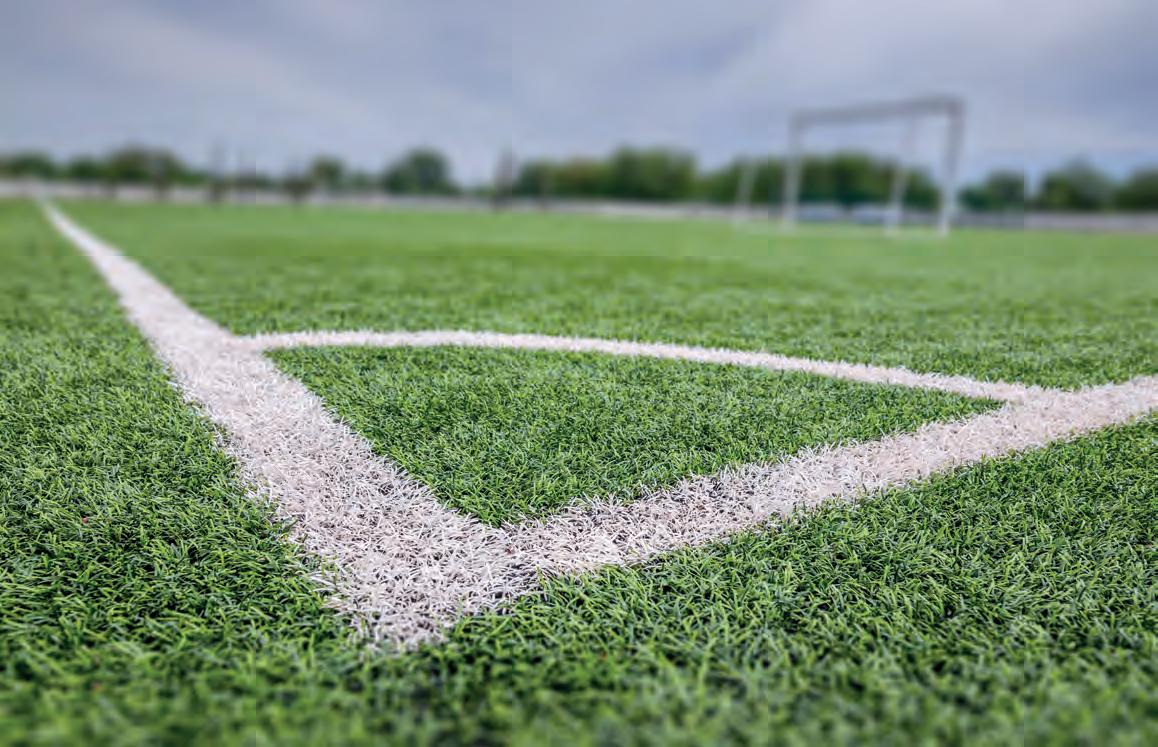
And what about the biggest opportunities for the sector?
The biggest opportunity is to ensure that turf systems being developed and brought to the market place are easy to be recycled and can be transitioned into valuable resources for future turf products. Making people more aware of the benefits of synthetic turf will further grow their popularity and the recognition of the need for them, in order to enable more physical activity in society.
What would you describe as the biggest strengths of the sector?
In the UK, the sector is blessed by strong support of powerful organizations, like Sport England, The Football Foundation and the individual national governing bodies of sport. They all see the benefits of synthetic turf and embrace it as the preferred surface for the respective sports. The innovative strength of the industry will help to further satisfy the players and increase the player performance even further in the future.
What is the latest in the development of non-infill 4G pitches?
4G pitches are already being offered today and form an important part of the solution for the ban on polymeric infills in Europe, alongside a wide range of systems with vegetal and mineral based infills. It is
important to take a system approach here and to look at the performance of the pitch system, rather than just at the individual components. New systems will have to prove that they fulfill the technical requirements set by the governing bodies of sports. Different applications may end up with different turf systems.
How much do you think the EU decision to phase out the sale of intentionally added microplastics (including rubber infill) will change the sector?
Before, with the polymeric infills, there was a onesize fits all approach possible for contact sports such as football and rugby. Now new systems are being brought to the market that may work very well in one area, but less in another, depending on the climatic conditions. But the options are plenty and a solution can be found for every climate. The innovation taking place in the sector is enormous.
How has the synthetic turf sector changed since you started in your first role more than 20 years ago?
For one, the industry has experienced double digit growth rates throughout my time working in it and back in 2004 sustainability did not really play a role. That is totally different now. The industry has embraced sustainability and is increasingly being pro-active, providing sustainable products to the market place.



















































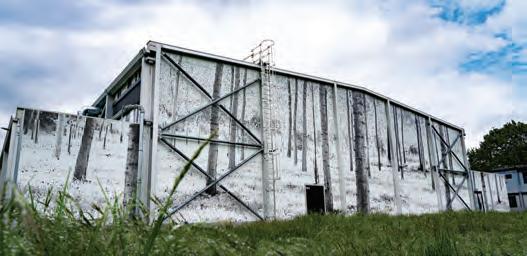
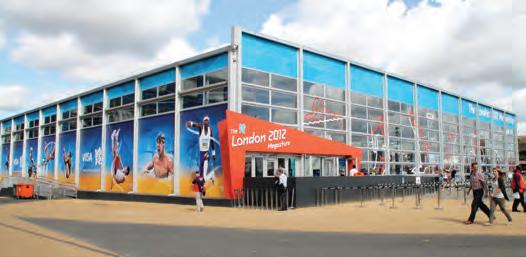



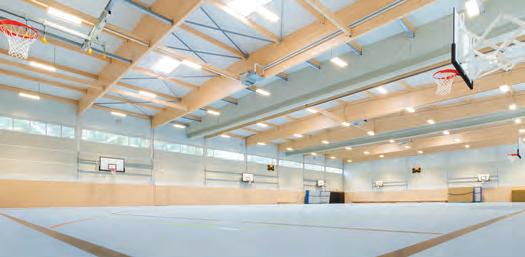
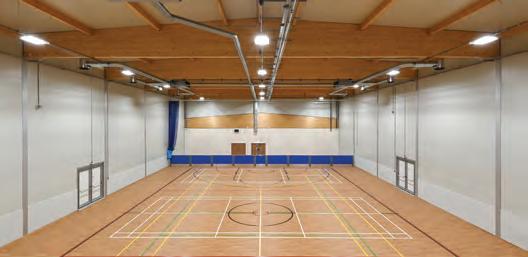
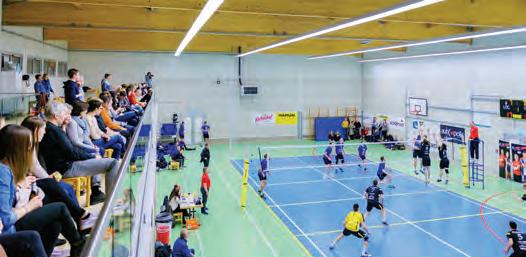









Neptunus is a renowned leader in the temporary structures sector thanks to groundbreaking technological advancements which mean the company can offer short-term, long-term and even permanent solutions for all of your space requirements
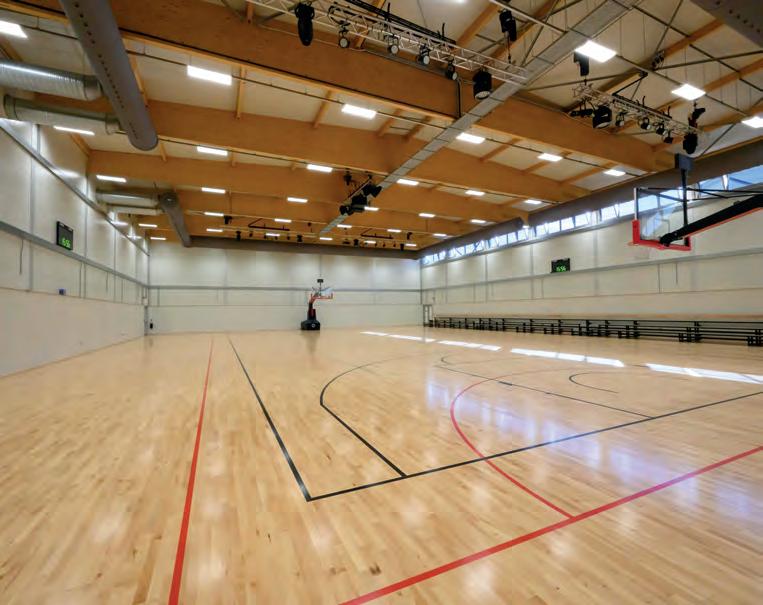
Temporary structures specialist, Neptunus, has a superb reputation for innovation, reliability and quality. State-of-theart modular products, designed and manufactured in-house, provide space solutions with robust, environmentally friendly temporary buildings that look and feel like a permanent building.
One of the most popular structures is Flexolution, which can be erected and fitted out quickly and efficiently to provide flexible temporary space while building work or renovations are being carried out; to replace or extend existing facilities; or to offer emergency solutions following disasters, such as a fire.
Neptunus’ sports halls can be operational within a few weeks from being ordered. They are fast and simple to install and can be adapted for any requirement, with everything you would expect to find in a permanent sports hall including lighting, heating, air conditioning, changing rooms, spectator seating, sports floors and fixtures and fittings for sports equipment.
For the Ministry of Defence, Neptunus built a bespoke sports hall at The Defence Academy of the United Kingdom, Shrivenham, Wiltshire which provides professional defence and security education
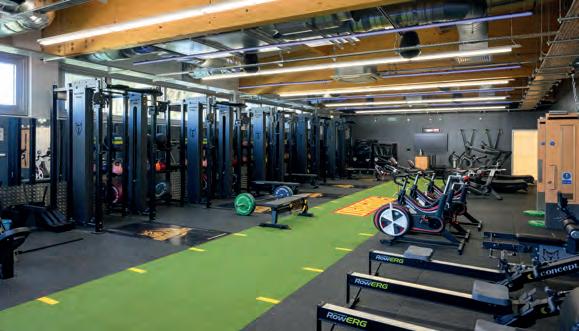
to students from the MoD, wider Government, UK industry and overseas. Previously, Neptunus had provided a semi-permanent Evolution sports hall to the Academy and were again appointed to build an ultra-modern new sports facility that would ultimately be purchased by the MoD. The brief was to provide a multi-purpose, relocatable sports hall for sports including badminton, basketball, five-a-side football and volleyball in accordance with Sports England standards. Technicians took just four weeks to complete the assignment which also included an adjoining structure incorporating changing rooms, equipment storage areas, an activity zone for yoga, circuit training and a spinning studio plus an office.
Last year, Neptunus undertook its biggest sports hall assignment in the UK at the University of Westminster’s campus in Harrow, which is home to basketball, netball and volleyball teams. The university required a new sports hall to meet the growing needs of their clubs and to provide facilities for ‘Dragons Active’, the Student Union’s programme of social sport and fitness activities which are open to all of UOW’s students. Neptunus technicians designed a bespoke sports hall alongside a strength & conditioning gymnasium using a 27m clear span Flexolution structure. Measuring over 1,500sq m, it took just six weeks to construct with a gymnasium, changing rooms, showers, toilets, storage rooms and a lobby with reception area and office. Called ‘Dragon’s Den’, the main hall also has a 180-capacity spectator seating – essential for Westminster Dragon’s basketball team, one of the top sides in the London Metropolitan Basketball League. The facility was purchased by the university on completion. For more information, vist: www.neptunus.co.uk
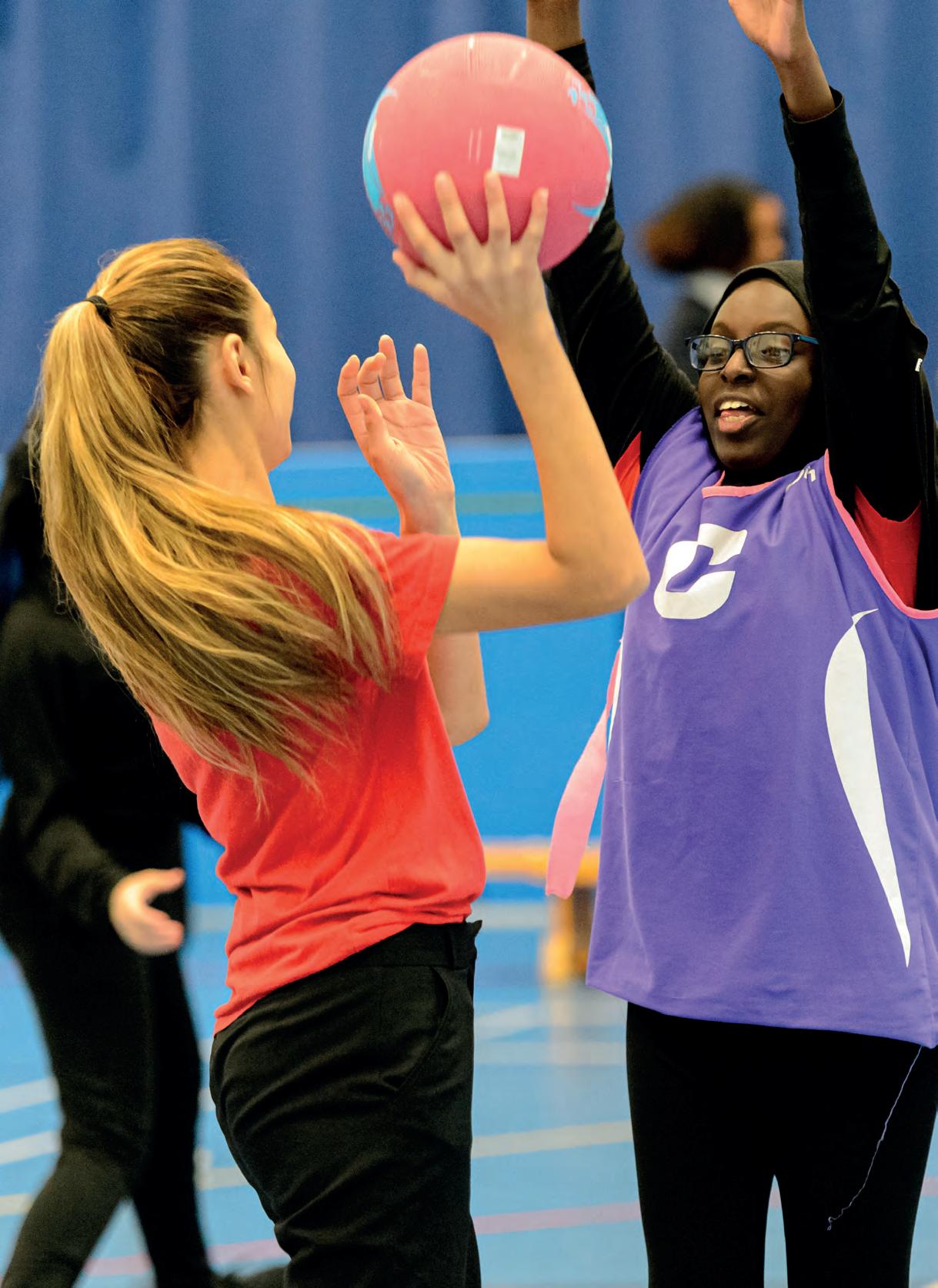

Netball is growing and increasing participation numbers. SportsNation looks at how the sport is growing its reach by focusing on engaging players of all ages and backgrounds
Netball in England offers a true game for life – with an offer for all communities, at every life stage and every life age
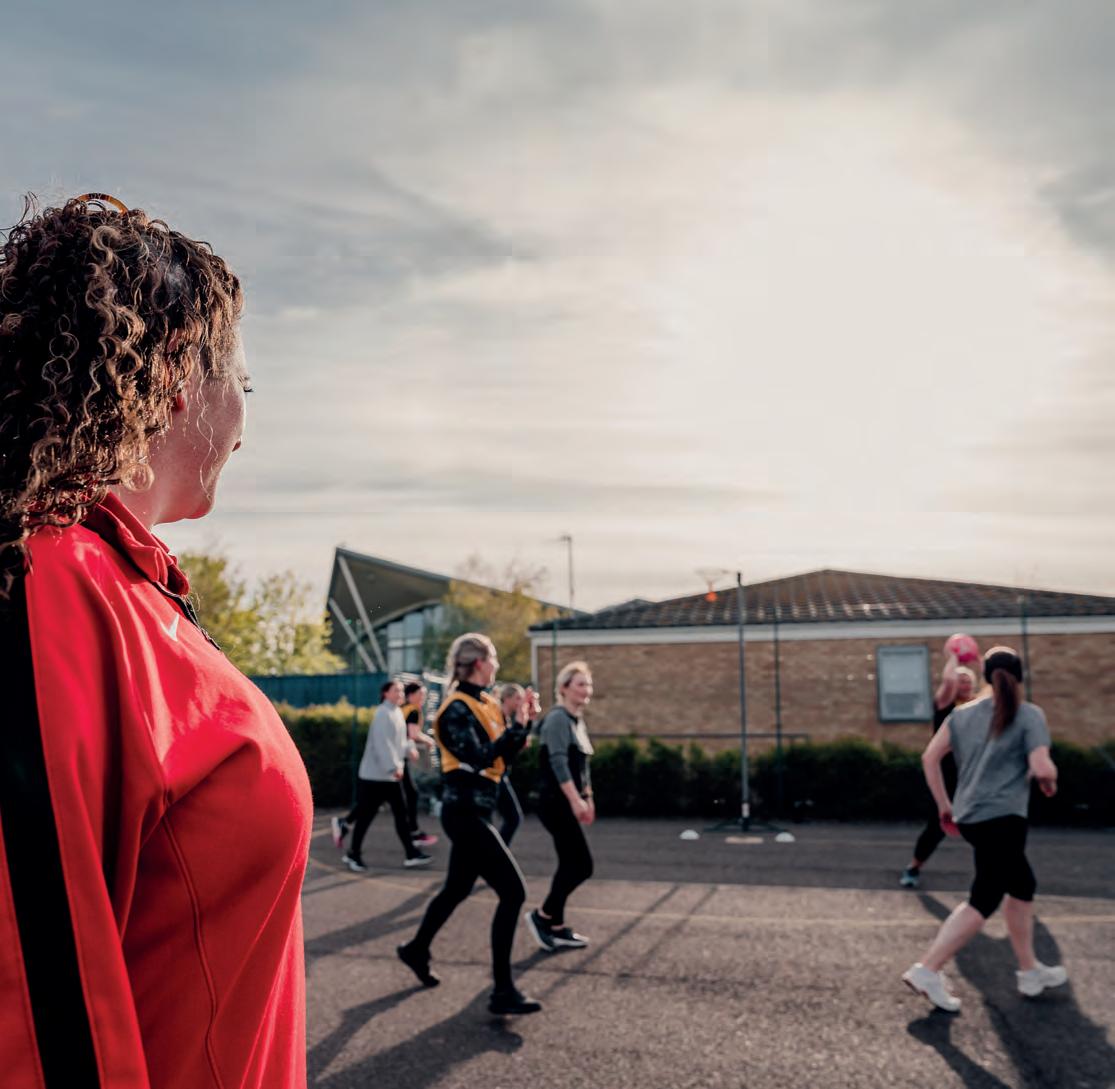
Netball is booming. More than 3.05 million people take part in the sport annually, with around 819,600 adults and children playing netball on a weekly basis. It is also the only team sport in which women have the upper hand in participation figures – of the regular, weekly players, 622,000 are women and girls.
The sport’s national governing body, England Netball, saw its membership reach an all time high of 123,000 members during the 2024-25 season. The figure marks a 71% growth since 2008-09 and a 6% growth since the end of the 2022-23 season. Encouragingly, most of the growth in England Netball’s membership numbers has been driven by
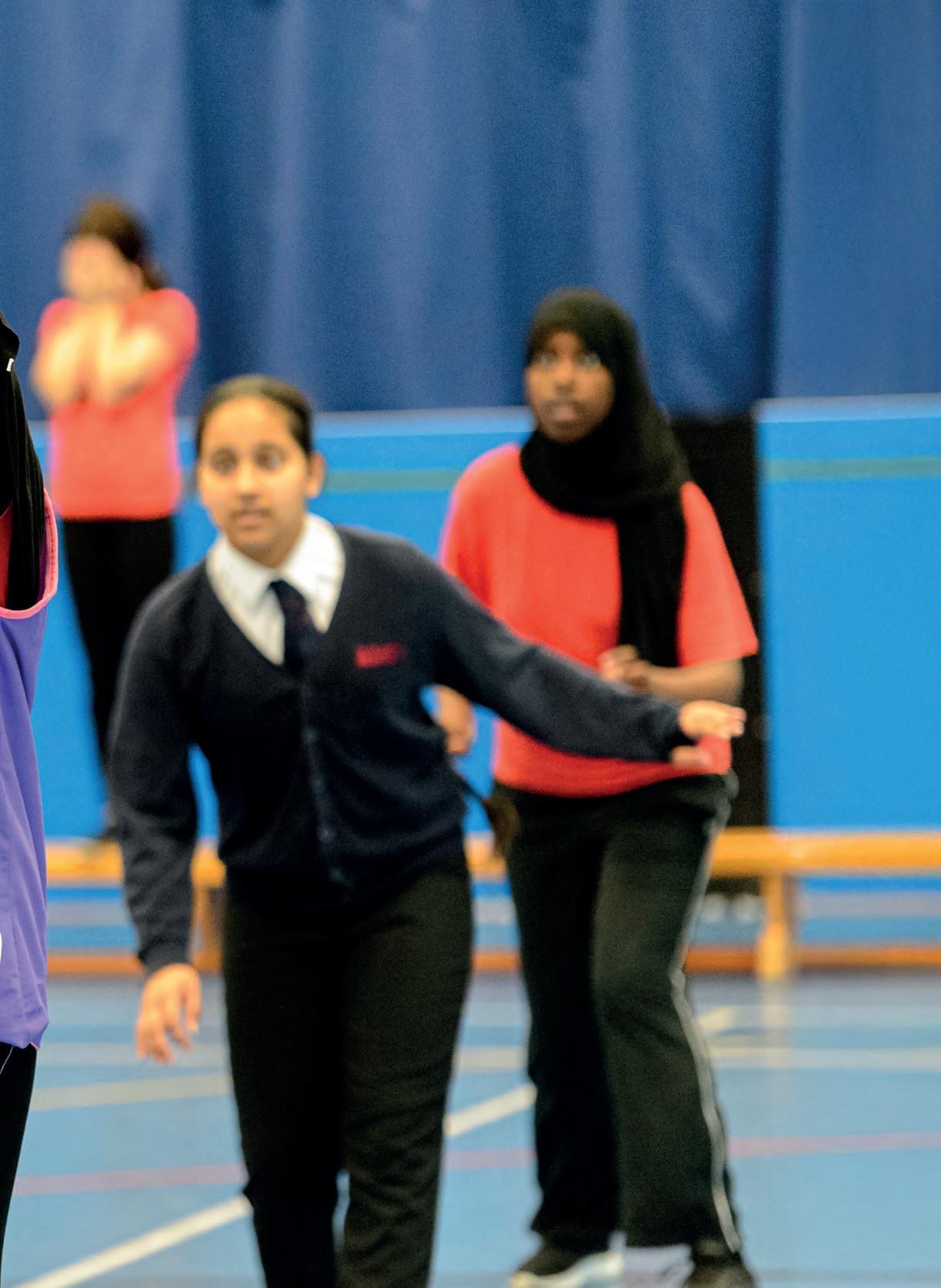
its U18 members – since the 2010-11 season, there has been an increase of 166% to 69,264 members. As a result, netball is one of only two team sports to see statistically significant increases since last year. The other is female football – another sign that women and girls are taking up sports at record levels.
Netball is now the third most popular team sport among men and women – behind football and cricket – and the most popular team sport for women. England Netball unveiled its 10-year Adventure Strategy in 2021, which outlined the intention to accelerate the development and growth of the game at every level. The goal is to elevate the visibility of the sport and lead a movement to impact lives on and beyond the court.
There is also a commitment to opening up the sport to new audiences and making it more diverse, in order to ensure the sport continues to evolve and adapt, creating a truly inclusive sport. Transforming netball for children and young people is another strategic priority, with plans to work closer with schools and policy makers to extend physical literacy within, and after, the school day with a focus on netball specific provision.
In total, there are six ‘destinations’ in the strategy, underpinned by 14 ‘game-changers’ that form the actions the organisation will take to bring it to life. Crucially, the strategy is grounded in feedback from what England Netball refers to as “the Netball Family”. More than 3,000 members and stakeholders were consulted as part of the strategic process to understand what they wanted netball to ‘look like’ in 2031.
Fran Connolly, CEO of England Netball, says: “The strategy is driven by a clear and unwavering purpose to inspire growth across the whole sport. It is our goal that by 2031 netball in England offers a true game for life, with an offer for all communities supported at every life stage and every life age, to be the sport of choice for women and girls for years to come.”
Connolly adds that, four years into the 10-year plan, the original goals are unchanged. “The destinations in our Adventure Strategy remain the same, though


our approach to achieving the outcomes we’re working towards is continually evolving through use of data, in line with our commitment in our strategy to remaining driven by insight.”





Across our School Games
network, over 30% of Bee Netball participants identified as being from ethnically diverse communities
As an example of this, Connolly outlines ways to open up the sport to new audiences and make it more diverse. “This year, we’ve put a significant focus on increasing our presence and extending our influence within primary schools through Bee Netball, designed for five to 11-years-olds,” she says.
“We’ve focused on Key Stage 2 children, many of which started school during the Covid pandemic so missed important, early social development opportunities. Bee Netball is the ultimate team sport as no one player can move from one end of the court to the other, really helping the social development of children. Continuing to work closely in partnership with the Youth Sport Trust, we have made significant progress, building some incredibly strong foundations to grow from and extending the reach and impact of our sport on large numbers of children.
progress, building some incredibly strong foundations

“Across our School Games Organiser network, 40% of Bee Netball participants identified as being from ethnically diverse communities, showcasing the power of netball in reaching and resonating with new and diverse audiences.
“Also, through the continuation of our strategic partnership with the England Men’s and Mixed Netball Association (EMMNA) we are committed to supporting the growth of

are men’s and mixed netball. The EMMNA National Championships held in August 2024 saw a record breaking level of participation, with 44 teams from 33 clubs taking part. This is the fourth








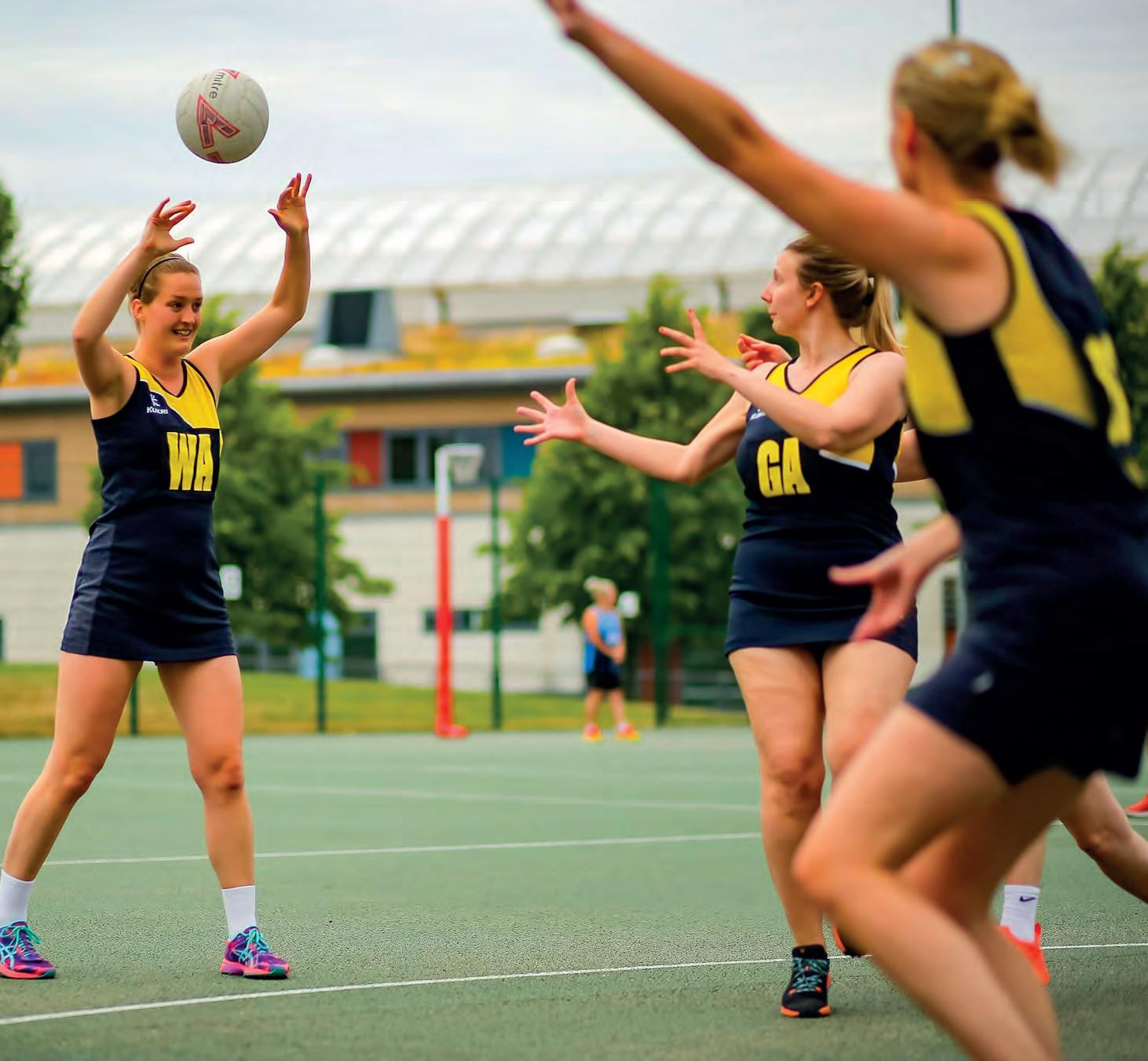
year England Netball has supported the event run by EMMNA, including with the selection, appointment and assessment of more than 40 umpires.”
The growth in memberships and players can be, at least in part, credited to a number of participation programmes run by England Netball to engage both new and returning players. One of these is Bee Netball, which introduces children to the basic skills of netball. More importantly, it supports every child’s personal development on and beyond the court, aiming to give each child a sense of self-worth, belonging and pride. But it hasn’t been just the future generation that England Netball has targeted when looking to increase the number of players. It also introduced walking netball, which has proven popular among a wide audience – but
especially those who want to be involved in netball, but who might find the fast-paced game a challenge. For Walking Netball, the rules have been tweaked and games and sessions are mostly held indoors.
England Netball has also created Netball Now, a flexible, non-competitive programme that allows adults to play social netball without commitment. Participants can simply show up for a casual game, pay a small fee and play with no coaching or recorded scores. It is designed for those who want to play more frequently or who are looking for a low-pressure way to get back into the sport, with no need to be a member of England Netball.
During the current 2024-25 season, a total of 31,000 people took part in England Netball programmes and festivals – of which around 20,000 people joined for the first time.
For those looking to build a netball court, there are several key factors to consider across design, specification, compliance and practical delivery. For the industry standards, always refer to SAPCA’s Code of Practice for the The Construction of Outdoor Multi Use Games Areas
A standard netball court is 30.5m long x 15.25m wide, with a minimum run-off area of 3.05m on all sides (for competition level). For community use, a reduced 1.5m
- 2m run-off is often acceptable. Multi-court layouts need clear separation (at least 2–3m).
Netball courts typically have open textured, porous macadam (bitumen) surfaces. They must be slip-resistant, well-drained, and capable of year-round use.
For recreational play and training, min. 200 lux outdoors and 300 lux indoors. For club fixtures, the min. 300 lux outdoors and 500 – 750 lux indoors, depending on the level of competition being played..
There are now approximately 5,900 outdoor and 2,600 indoor courts available in England. Due to the nature of the sport – it can be played in multi-sport spaces and areas which also accommodate other sports, such as tennis and basketball – the facility landscape offers both opportunities and challenges.
England Netball has a small facilities development team which provides advice and support to clubs looking to improve their facilities through Section 106 developers contributions and Community Infrastructure Levy schemes. For those looking to establish and create netball courts and facilities, there are also landfill tax schemes and private finance options.
Crowdfunding initiatives have become an increasingly popular way to fund facility developments. One recent example of a successful crowdfunding project saw Earlsdon Highway Netball Club secure enough money to build two, floodlit courts at Earlsdon Rugby Club.
As one of the nation’s favourite team sports, netball is also included in the DCMS’s multi-sport grassroots facilities investment programme. The England Netball team works closely with the Football Foundation on developing PlayZones in underserved communities and developing netball courts where 3G pitches are being built.

Next year, 2026 will mark England Netball’s centenary year. Celebrating 100 years of the sport will be a big focus for the NGB and the entire “Netball Family” over the 12-month period. The Centenary will be used to showcase the ways netball has been a platform for leadership, equality and national impact.
Another major central point will be the 2026 Commonwealth Games in Glasgow.
“We know that major events always bring a bigger spotlight to our sport,” Connolly says. “We made sure to capitalise on the increased visibility from the 2022 Birmingham Commonwealth Games and the relaunched NSL in particular. We will do the same as we build towards the 2026 Commonwealth Games in Glasgow next summer.”
We know that major events always bring a bigger spotlight to our sport
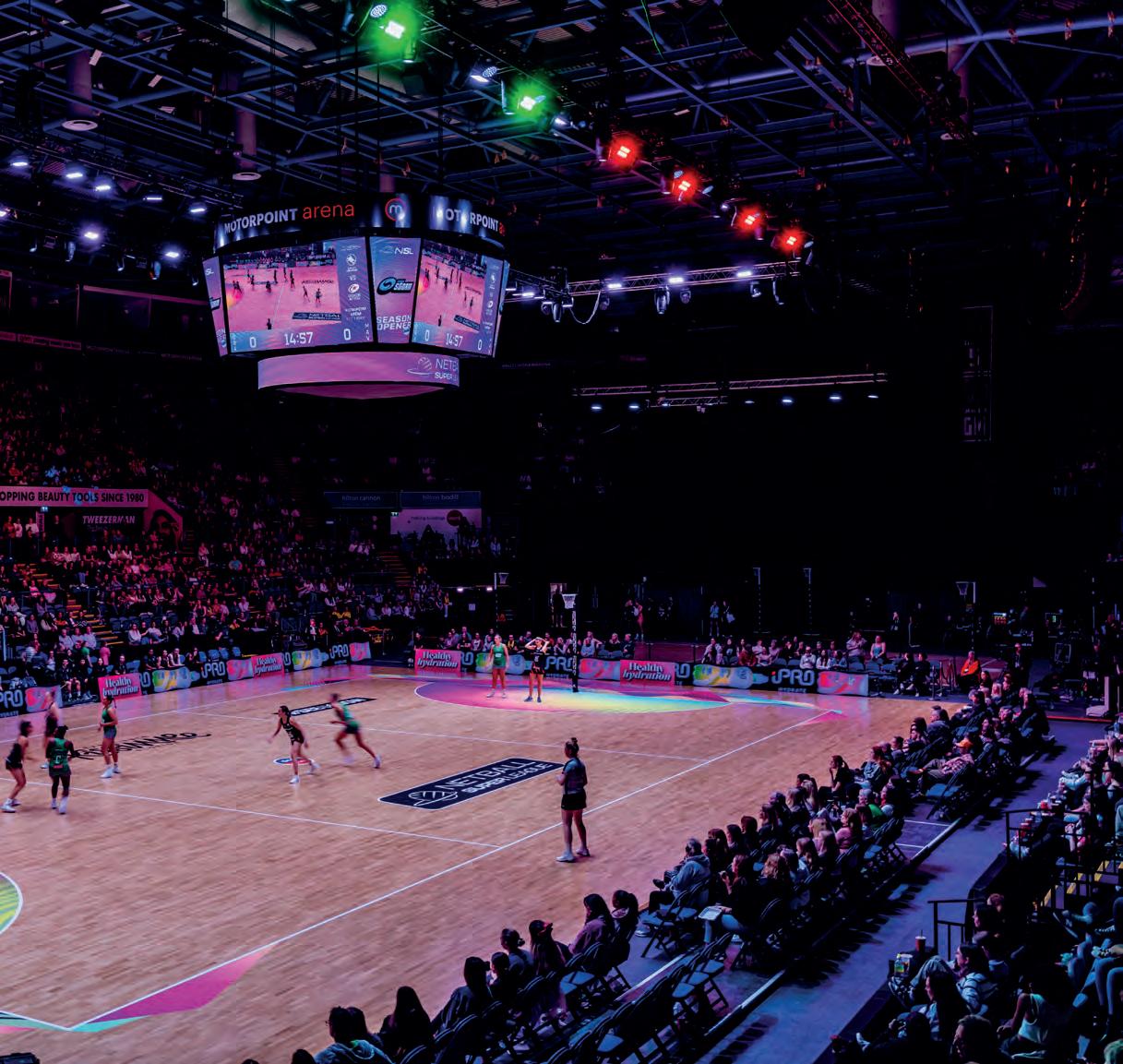
A crucial aspect which is too often overlooked when building and setting up netball courts is to ensure the surface is slip resistant. This is particularly important for line markings and other coatings/paint used on the surface. SAPCA’s Code of Practice for the The Construction of Outdoor Multi Use Games Areas states that the paint on asphalt/ macadam surfaces reduces the grip of the base surface in damp/ wet conditions. To control this grip reduction, paints and coatings should incorporate texturing agents to give an appropriate textured finish. Both


the SAPCA code of practice and England Netball’s Performance Standards for Outdoor Courts state that the minimum slip resistance value (SRV) on outdoor courts is 75 in wet and dry conditions.





David Johnstone, MD of SAPCA member, Britannia Paints – one of the leaders in tennis and netball court paints and coatings – says: “Manufacturers have been working hard over many years to improve the SRV of coatings on both aged and new courts. At Britannia Paints, we have created a specific



netball court paint which achieves an SRV of 75+ on suitable surfaces even in wet conditions. It is also algae and fungi resistant.




David Johnstone also has a tip for ensuring maximum SRV is achieved.
David Johnstone also maximum SRV is achieved.
“After spraying, courts are usually left for a week before play commences.
“It is advisable, however, to extend this period for a few days, depending on the prevailing weather, as optimum slip resistance is only achieved between 2-3 weeks after spraying. This is because the court surface has to bed in with use.”
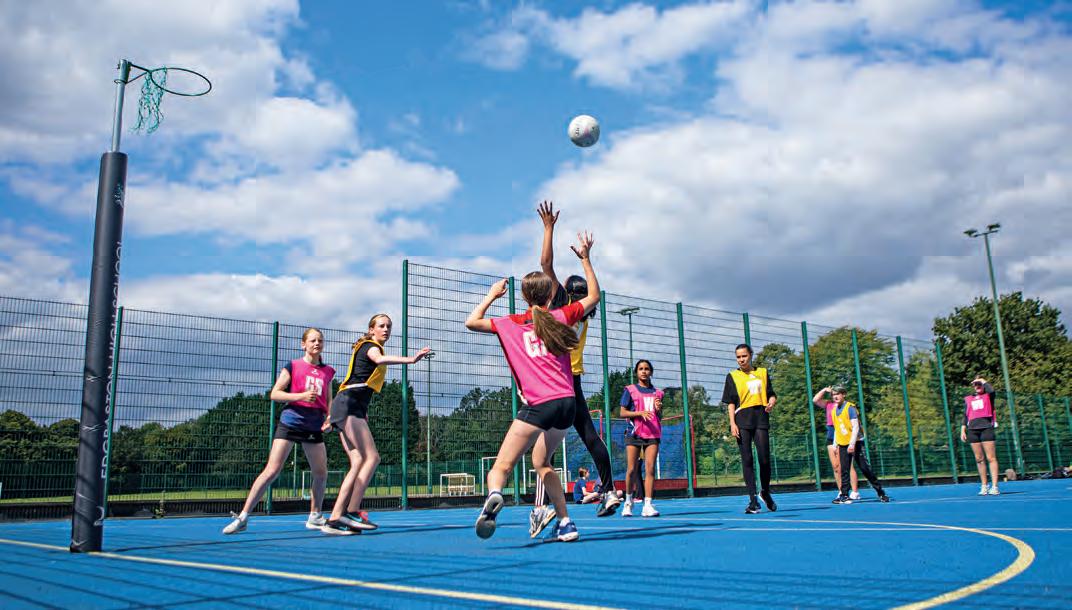
England Netball’s NETBALLHer initiative is quietly transforming how women and girls stay active – and setting a model other sports could learn from.
Now almost three years old, the initiative embeds female health and wellbeing into every aspect of the sport, from grassroots sessions to elite performance.
“NETBALLHer is about supporting women and girls through every life stage – from puberty and pregnancy to menopause and beyond,” explains Kelly Gordon, who leads the initiative for England Netball. “We want players to keep enjoying the game, but also to feel supported in their changing bodies.”
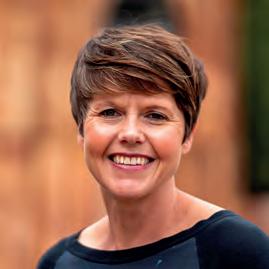
If other sports can use what we’ve done it’s a win for everyone
At its core is a rich online hub (netballher.co.uk), offering evidencebased content, infographics and real-life stories on all aspects of female health. Members can also access in-depth learning modules covering puberty, pre- and post-natal health, and menopause. To ensure accuracy and credibility, England Netball works with partners including Wellbeing of Women, Superdrug Online Doctor, Vitality, and Nixie Body, alongside medical experts on its own NETBALLHer Advisory Board.
But Gordon stresses that NETBALLHer is “not just a website — it’s part of our DNA.” The initiative is built into everything England Netball does: from Bee Netball, which supports young girls through puberty,
to Walking Netball, which integrates content on menopause and falls prevention. Every development officer and regional volunteer champion is trained to start female-health conversations and share practical tools. The approach is working. Impact studies show that 90% of those who’ve accessed NETBALLHer resources report increased knowledge and confidence about their health. Participation data and anecdotal feedback suggest fewer women drop out at critical life stages. “We heard so many ‘if only I’d known’ stories – women saying they’d have come back after pregnancy or felt more comfortable at school if they’d understood what was happening,” says Gordon. “Now, we’re helping them to be curious, to learn, and to keep playing. These reflections directly inspired the creation of the I Wish I Knew campaign, launched in September 2025, which encourages women and girls to ask questions, share experiences and build confidence through greater understanding of their bodies and health.” England Netball is also sharing what it’s learned. It has joined forces with the FA, RFU and ECB in a new female health collective, pooling insight and resources to help other sports embed similar principles. “We all want women and girls to stay active and feel supported,” says Gordon “If other sports can use what we’ve done and make it their own, that’s a win for everyone.”











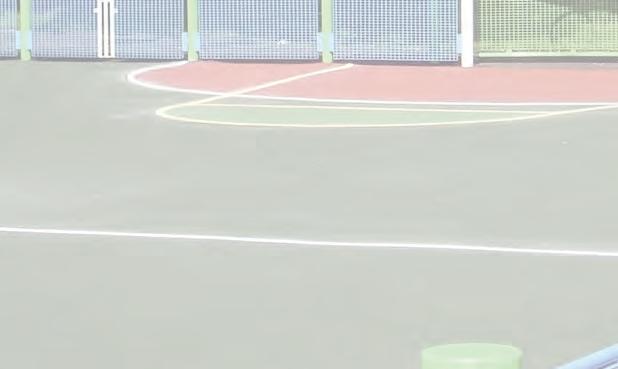


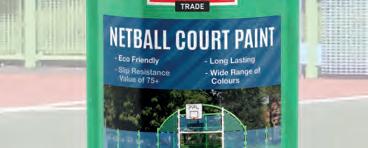





Lord Williams School in Thame has officially opened its newly resurfaced 8,000sq m, multi-use hockey pitch using Sterling Turf’s DuraMATCH synthetic turf system. The project provides a high-quality, all-weather facility designed to benefit both students and the wider community.
The project replaces an ageing surface with a modern, high-performance system. At its core is Sterling Turf’s DuraMATCH surface, which is engineered for durability, performance and consistency, with minimal maintenance.
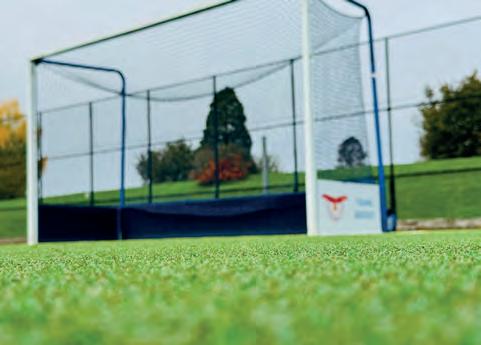
The DuraMATCH turf incorporates premium yarns from Schramm, a leader in synthetic fibre technology. The result is a surface that meets FIH National and Gen 2 Multi-Use standards, offering reliable performance for school sport and community activities alike. With an 18 mm pile height and a product weight of 2,534 g/m2, the pitch delivers both quality and resilience for long-term use.
The new facility is already enhancing opportunities for sport at Lord Williams’s School and for local clubs. Thame Hockey

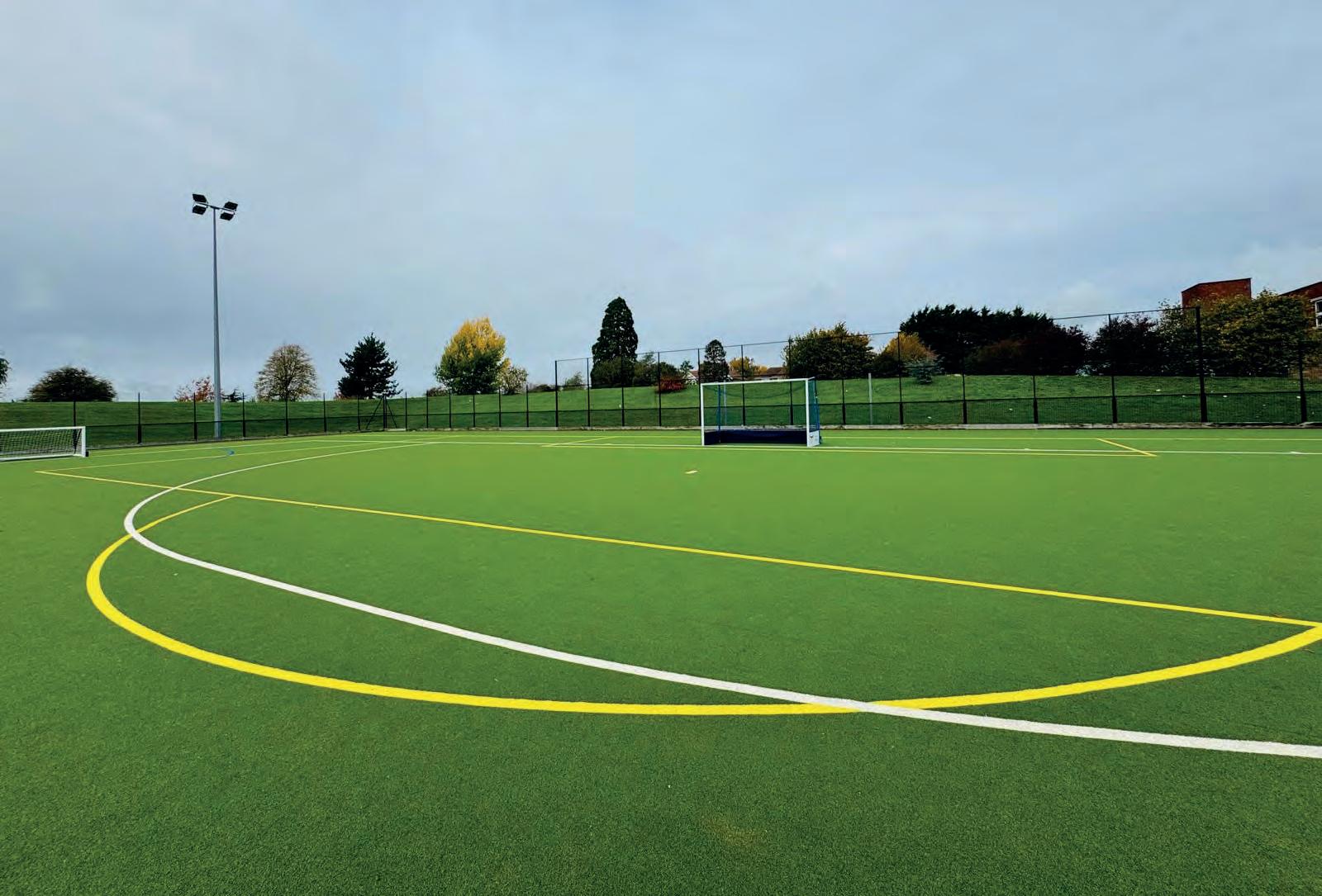
We are proud to reopen our pitch with FIH certification, confirming it as a top-quality facility for both school and community use
Club, which trains and competes on-site, now benefits from an elite-level surface that supports player development and future growth.
A school spokesperson said: “We are proud to reopen our pitch with FIH certification, confirming it as a top-quality facility for both school and community use. This upgrade provides a reliable, high-performing surface for sport at every level.”
The school’s Headteacher, Mr. Dimbleby, added: “This project is an investment in our students and our community.
“The FIH certification recognises the quality of the work delivered, but its real value lies in the opportunities it creates for participation and development in sport.”
Reflecting on the collaboration, Robbie Craven of Sterling Turf commented: “It’s been
a pleasure to deliver this project using highquality texturised yarn developed by Schramm, the original developer of this advanced yarn type. The product’s long-standing reputation for performance and reliability continues to set the benchmark for synthetic surfaces.”
The new pitch will host a full programme of school fixtures, training, and community sport, establishing Lord Williams’s School as a key venue for hockey and multi-sport activity in the region.
This project demonstrates effective collaboration across the UK sports construction industry, with McArdle Sport-Tec and Sterling Turf –both SAPCA members – working alongside Schramm to deliver a facility built to the highest standards of quality and performance. Find out more https://www.sterlingturf.com
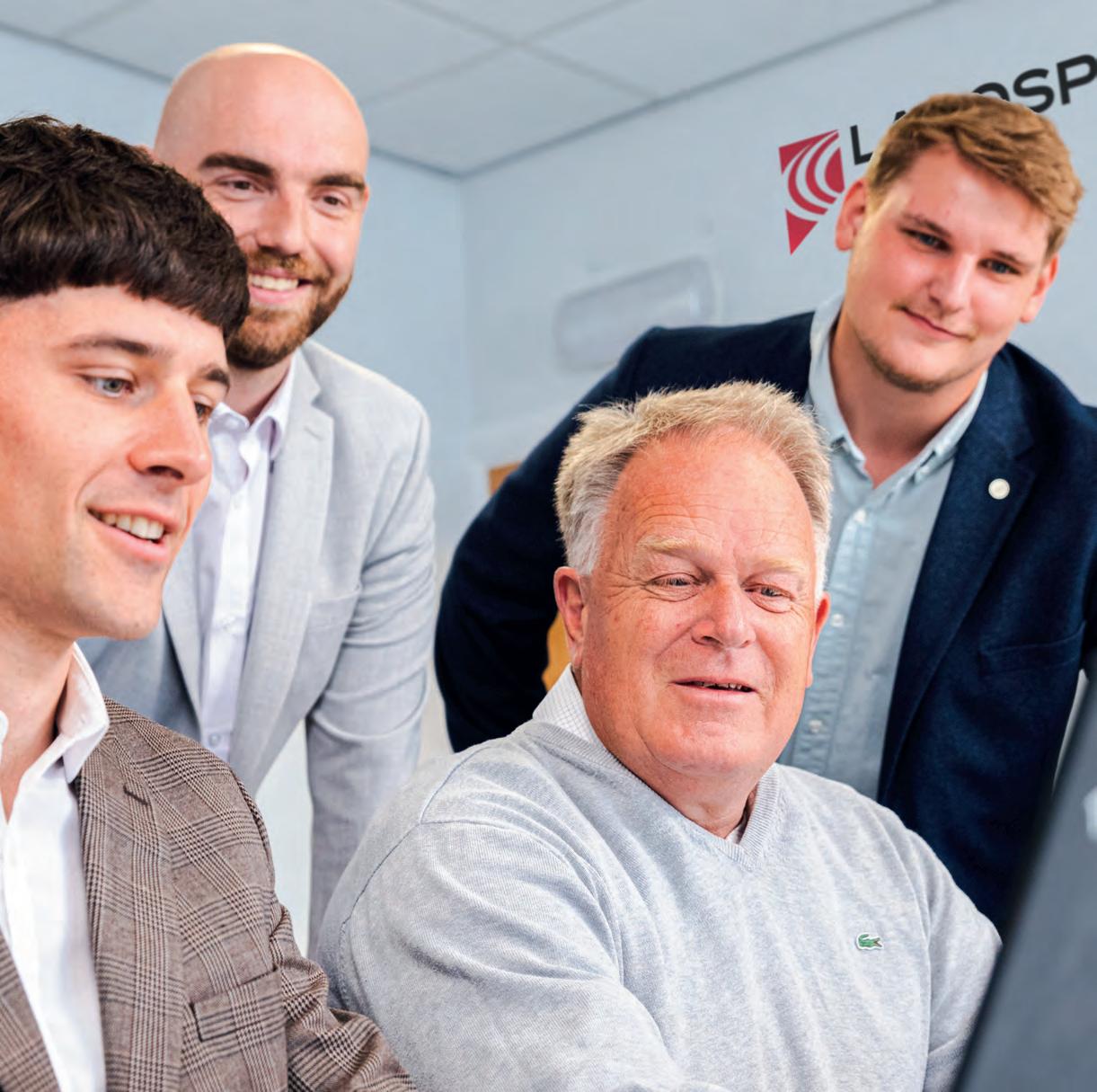
Alongside its technical work, Labosport provides consultancy, feasibility studies, and training
Professor David James is a leading figure in the world of sports engineering and technology. He spoke to Tom Walker about the importance of research-based innovation and how it can shape sports

Few people have bridged the worlds of academia, engineering and sport as seamlessly as Professor David James.
A mechanical engineer by training and now the global CEO of Labosport, James’s career has been driven by two passions –sport and engineering – and a conviction that, at its best, the latter should make life tangibly better.

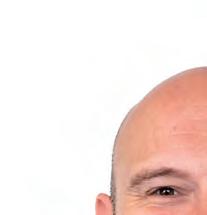
“I’ve always been fascinated by how things work,” he says. “Engineering and technology have built the modern world. But I’ve also always loved sport and every aspect of it. From the egg-and-spoon races at school to the FIFA World Cup, it’s this incredible social glue that brings people together.”

University
The combination of curiosity and passion for sport led him from the University of Sheffield (where he completed a PhD investigating the dynamics of cricket balls and pitches) to a career that now spans continents. “My PhD with the ECB really ignited my fascination with sports surfaces,” he recalls. “We looked at how pitch properties –from the clay content, compaction and organic matter

– can influence performance. That work made me realise that, while you can play sport anywhere, you can only play good sport on a good surface.”
After building a successful academic career in Sheffield, which included playing a part in establishing a sports engineering research centre that went on to support multiple Olympic teams, James joined Labosport in 2018, first as UK managing director and, since 2022, as its global CEO. The move, he says, felt “like stepping from theory into the real world”.
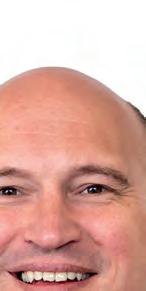
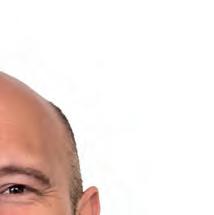
“Labosport is an independent testing institute for sport, but also a knowledge centre,” he explains. “It’s a place that builds and shares expertise across the industry.”
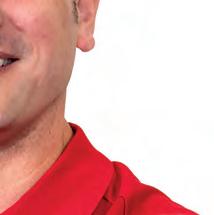









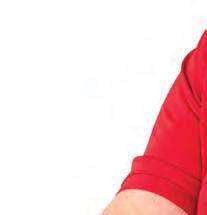


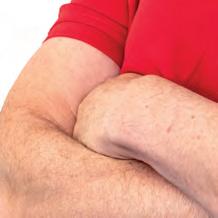
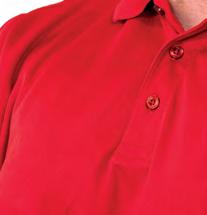

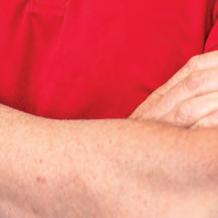


James’s enthusiasm for technology is balanced by a willingness to question its purpose. Reflecting on his time working across a number of sports and topics, from running shoes to Olympic bobsleighs, he acknowledges that not all engineering is equal – nor leaves a meaningful mark.


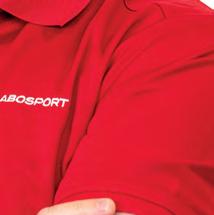



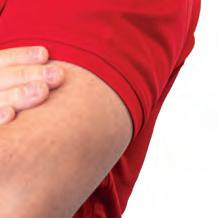
is like a Formula One car – brilliant for elite use, but completely impractical for
“We did a lot of work on the skeleton bobsled programme,” he says. “It was great science, modelling the aerodynamics, understanding the physics of the ice, but at the end of the day, did it really matter to wider society? We’d poured a lot of public money into helping a handful of people go faster down an ice track. Sure, it helped Team GB win some medals, but did we achieve any lasting benefits?”
The same, he says, applies to much of the hyper-specialised technology that surrounds elite sport: “You can spend years refining a running shoe, but the performance gains are marginal. What really drives the consumer market is which player endorses it, or what colour it is.”
By contrast, James believes the engineering that underpins sports infrastructure – from pitch systems and tracks to the types of surfaces — delivers real, lasting value.
“If you put the same brainpower into improving the quality and accessibility of sports facilities as you do to Olympic programmes, you can affect thousands of lives,” he says. “A truly inclusive facility, or a great playing surface, doesn’t just
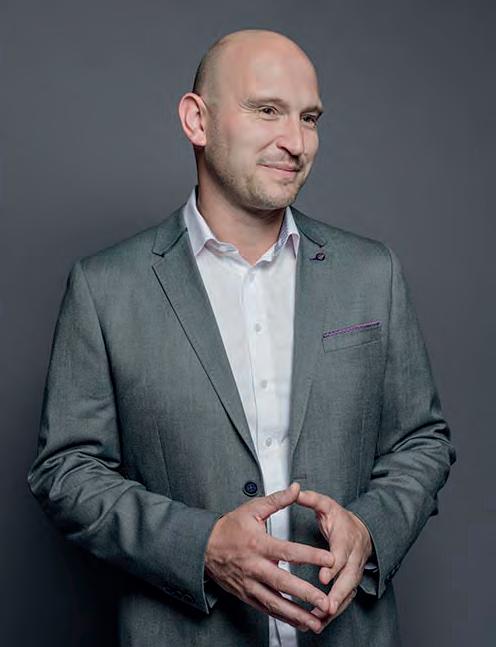
change performance; it changes participation, enjoyment and community cohesion – and can genuinely change lives. That’s meaningful.”
For James, a project that captures that philosophy well is Labosport’s recent collaboration with Loughborough University and FIFA. Working as one of FIFA’s global Research Institutes, Labosport helped design a new generation of testing devices that align more closely with how players experience surfaces. The three-year research programme redefined how football surfaces are tested and understood.
“We started by measuring player perceptions and how they feel differences in hardness and grip” James explains. “Then we redesigned the test devices, adding new sensors and adapting parameters so that what we measure in the lab now reflects what players perceive on the pitch.”
The result is a suite of tools that have become the new global standard for football surface testing.
“We’ve now measured pitches all over the world, from natural and hybrid to synthetic,” he says.

Testing surfaces remains an important part of Labosport’s technical work
Good engineering helps people play, move and belong – that’s what really counts
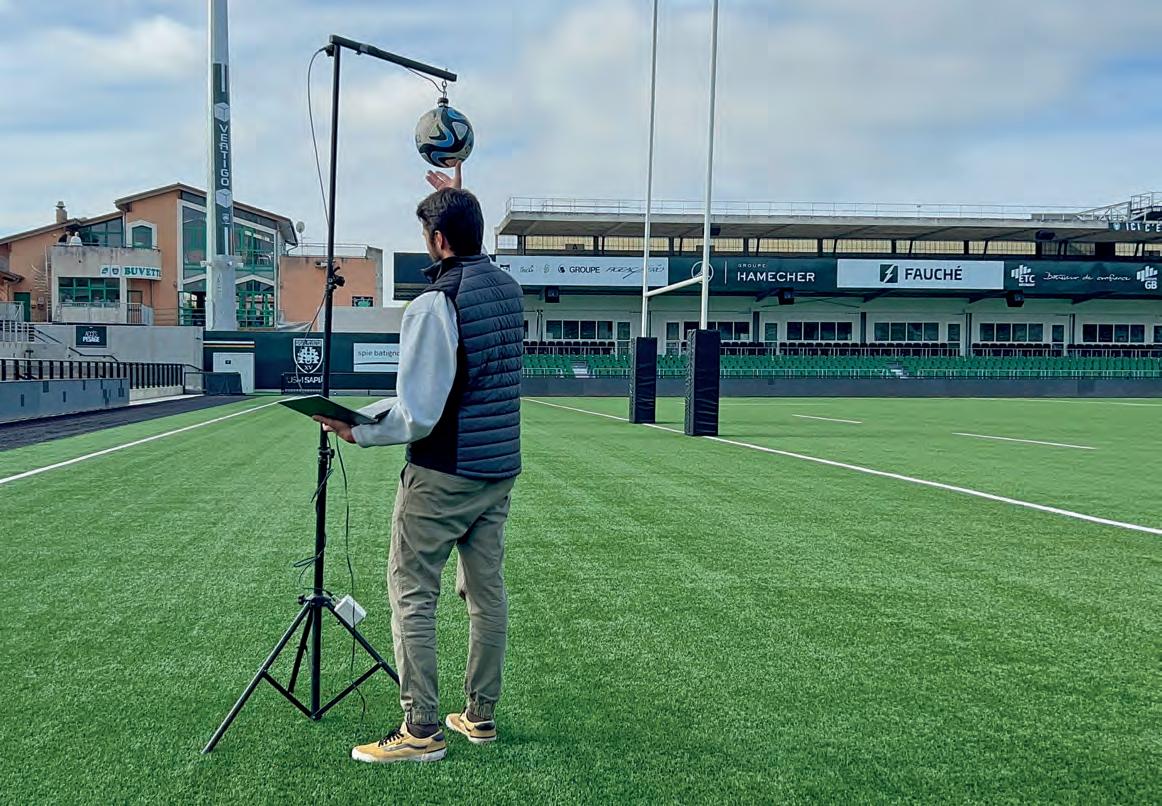
“And for the first time we can see clear, objective differences. If you want to make synthetic turf feel more like natural grass, we know which parameters to change. We finally understand how these surfaces respond to player loading.”
That understanding, he adds, also reinforces a vital truth: one size doesn’t fit all. “People often say synthetic turf should mimic natural turf, but that’s not the point,” he outlines. “A Premier League hybrid pitch is like a Formula One car – brilliant for elite use, but completely impractical for community football.
“A good quality synthetic turf pitch is more like a VW: robust, reliable and designed for its users. Good engineering starts by understanding who the user is.”
This user-centred approach, James argues, is especially relevant as debates continue around player safety on certain services – especially at elite level. Here, he cautions against simplistic conclusions.
“I’m not convinced there’s anything intrinsically dangerous about any particular surface,” he says. “The key is preparation. If you’ve only ever trained on one type, then switching to another increases risk. The body needs to be conditioned for variability.”
He points to tennis as a model: “Players move between clay, grass and hard courts all the time. They train for that variety. True fitness means being ready for the real world – for what the world throws at you.”
Headquartered in France and founded in 1993, Labosport has grown to become a global powerhouse. Specialising in sports surface testing and consulting, it has offices and laboratories in Europe, Asia, Africa and the Americas and serves clients in more than 100 countries.
Reflecting the different markets that Labosport operates in, James sees the sports surface industry entering a period of unprecedented diversity – which he welcomes.
“Ten years ago, everyone was selling pretty much the same 60mm rubber-filled system,” he says. “Today, we’ve got a wide variety of systems, with shock pads, denser piles, alternative infills, recycled materials – there’s more innovation and choice than ever before and that’s healthy.”
One of the biggest drivers for change and innovation – and engineering – he says, is sustainability. “Environmental performance accounts
Natural turf, when properly managed, can go a long way. They’re not competitors; they’re complements
for maybe 80% of current innovation,” he estimates. “Manufacturers are rethinking everything, from reducing infill migration to designing systems that are easier to recycle. There’s a real push towards using less, using better and closing the loop.”
This, in turn, James says, is reshaping markets. “In the US, products are often sold on their characteristics. In other words, how they feel and perform. In Europe, however, it’s still largely a tender-driven market, where if you meet the standard, it becomes a question of price.
“Both models have pros and cons, but what’s clear is that diversity is good. We don’t want a world where every surface is the same.”
He also sees room for improvement in how sustainability claims are verified. “You’ll always have good and bad examples of organic infills or non-infill systems,” he says. “Some work brilliantly; others don’t. We need rigorous testing and transparency so the market can tell the difference.”
James also points out that the future isn’t solely about artificial surfaces – he is equally passionate about natural turf. “A well-designed natural pitch is still the world’s most common sports facility – and a fantastic one,” he says. “We’re doing lots of work on helping those fields stand up better through the winter, particularly through drainage design and hybrid reinforcement.”
He stresses that the goal isn’t to pit surface types against each other but to find the right solution for each context. “Synthetic pitch systems have a vital role, especially where weather makes grass unplayable for months, he says. “But natural turf, when properly managed, can go a long way. They’re not competitors; they’re complements.”
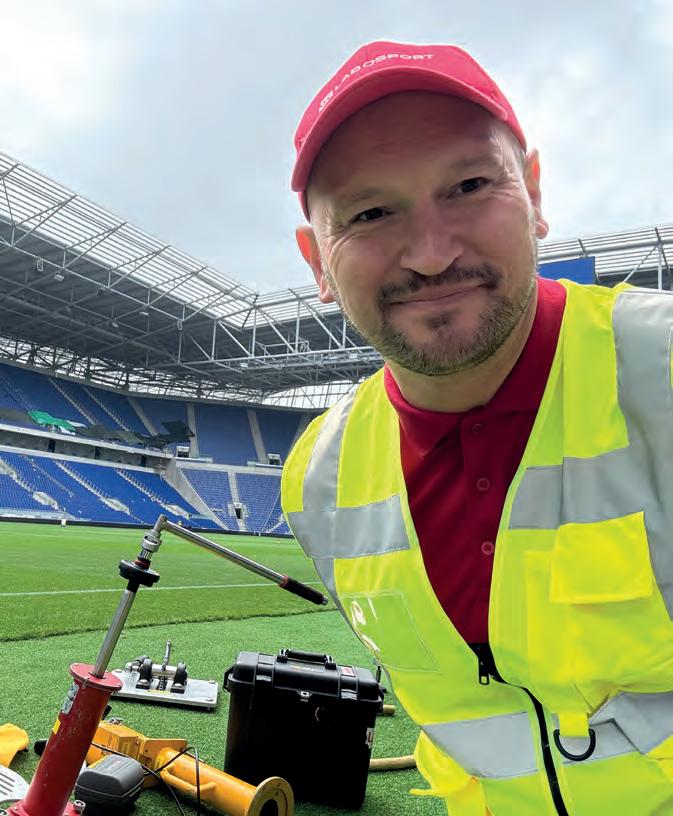
“Many people inherit a sports facility but have never been taught how to manage it,” he says. “In New Zealand, through our Sports Turf Institute, we train all the golf course superintendents and grounds managers. Half our business there is education. I’d love to replicate that in markets like Italy and France, where there’s almost no formal training provision.”
He describes Labosport’s role as that of a “curator of knowledge” — independent, science-based, and focused on raising standards across the sector.
“Everyone benefits when facilities perform well,” he says. “Poorly built or poorly maintained fields are bad for the users and bad for the industry.”
Ultimately, what drives James is a belief that sports engineering can, and should, serve a broader purpose. “We’re not selling energy drinks or flashy yoga pants,” he says with a grin.
“We’re helping create places where people can be active, healthy and connected. That’s work that matters.”
Labosport’s reach today extends far beyond testing laboratories. Alongside its technical work, the company provides consultancy, feasibility studies, and training – a model James, as global CEO, is keen to expand.
It’s an ethos he instils across Labosport’s 150-strong team. “I tell them: walk tall. What you do makes a difference. We should all be proud of that. Because good engineering – the kind that helps people play, move, and belong – is the kind that really counts.”











































































































































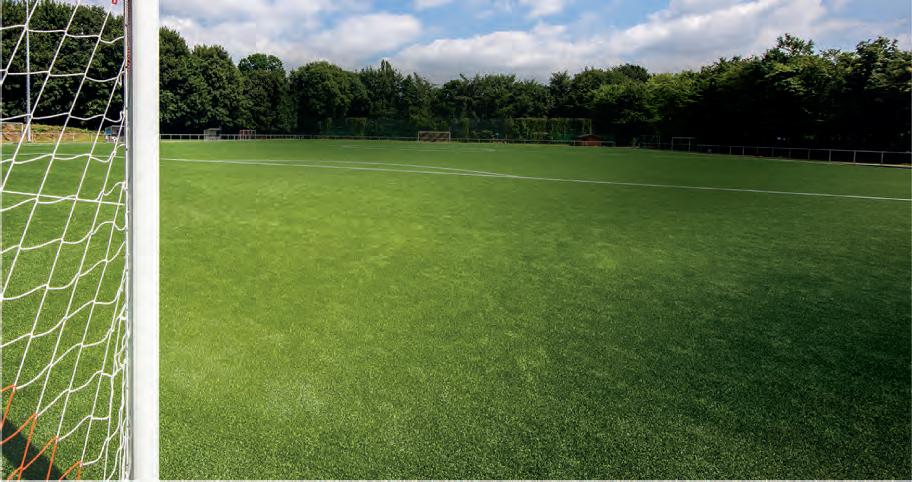
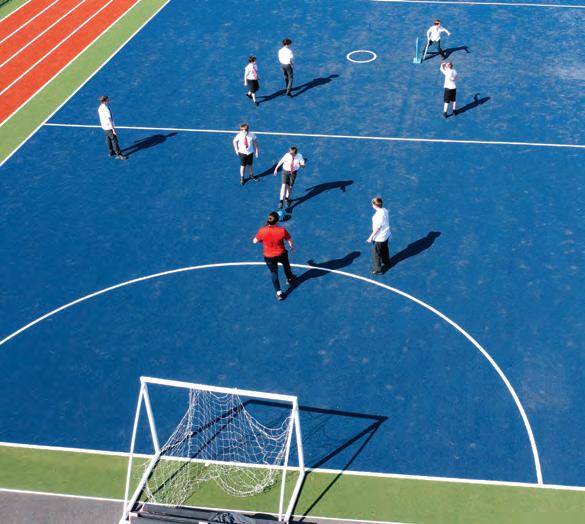
A new partnership agreement aims to boost sport and physical activity and improve health outcomes in South Yorkshire. SportsNation takes a look at the innovative collaboration between a local authority, Sport England and the private sector
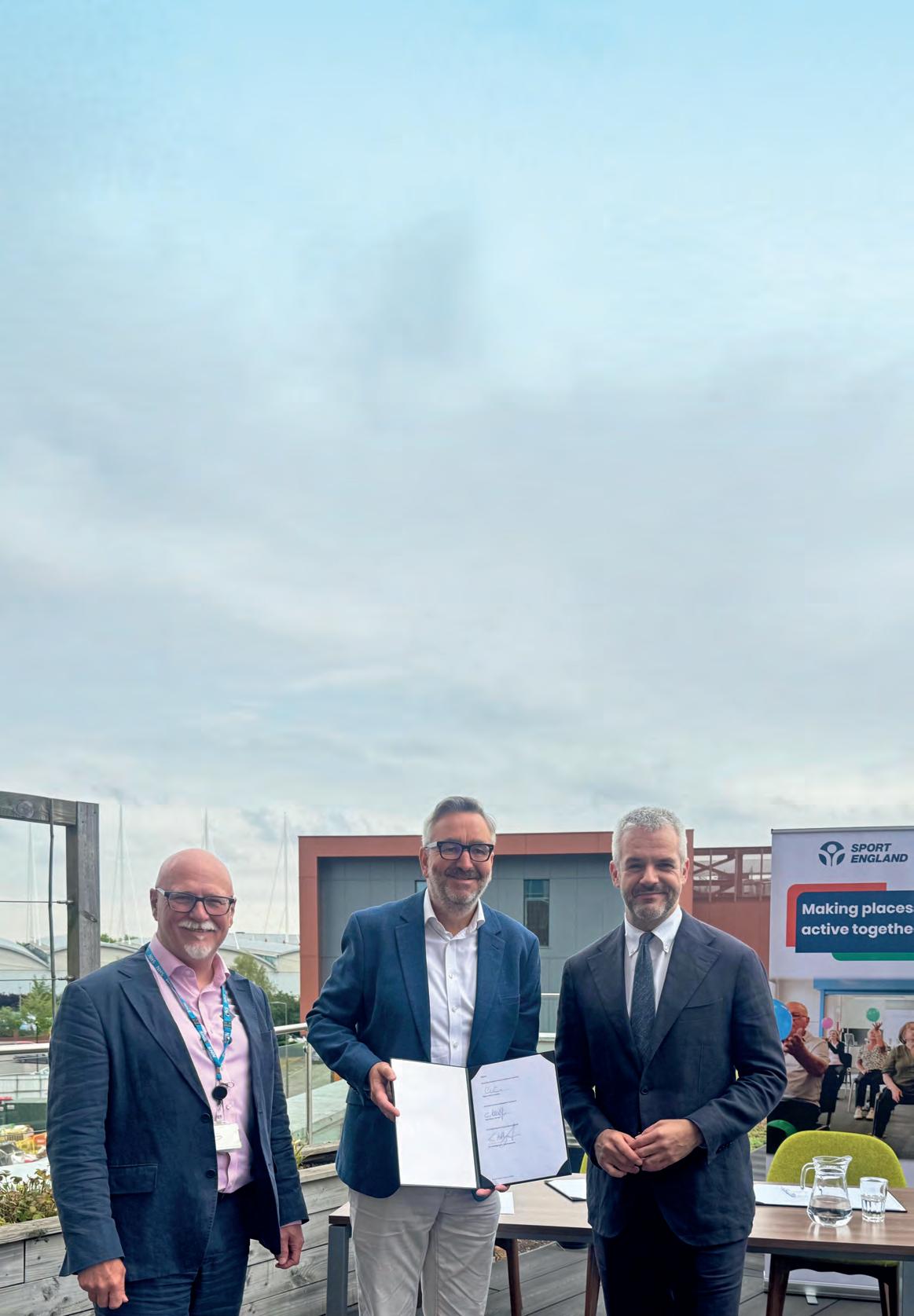
port England has signed a memorandum of understanding (MoU) with South Yorkshire’s mayor and the region’s integrated care board for a “collaborative new approach to sport, physical activity, prevention and wellbeing” across the local authority areas of Barnsley, Doncaster, Rotherham and Sheffield. The agreement is similar to the one Sport England has in place with Greater Manchester and sets shared plans to transform the health of local people, by embedding proactive health initiatives into everyday life – from schools and workplaces to transport and urban planning. The agreement was accompanied by the launch of the UK’s first Sports Legacy Institute, a £7m private-public partnership between the South


Yorkshire Mayoral Combined Authority and Westfield Health. It will support the ambitions of the MoU by creating a centre of excellence for sports and health innovation, aimed at attracting inward investment to improve health outcomes in South Yorkshire.
Sport England CEO, Tim Hollingsworth, said: “This partnership is a powerful demonstration of what can happen when we join forces at a regional level and look at challenges through the lens of whole-system change. Our shared commitment to unlocking the role of movement, sport and physical activity will improve lives and strengthen communities across South Yorkshire.”
The vision is to make South Yorkshire a place where people live longer in good health, with sport and physical activity playing a central role in prevention and wellbeing. The partnership looks to boost the local economy by helping people succeed and supporting jobs and businesses in sport and physical activity.
In total, there are six priority areas: health, growth, communities, innovation, children and young people and active travel (walking, wheeling,
scooting and cycling). Within each area, there are stated goals that the partnership looks to achieve. At the centre of the plans for communities is a commitment to improve existing – and provide new – facilities for people to play sport and get active in.
Work in this area will be driven by a pledge to create “safe, inclusive spaces where everyone feels confident being active and where sport helps connect people”.
Meanwhile, on innovation, the plan is to develop new solutions that ensure sport and physical activity “improve quality of life”, especially for those facing the greatest inequalities.
This, according to Oliver Coppard, Mayor of South Yorkshire, is a particularly important aspect of the work due to the societal landscape of the region.
“In South Yorkshire, where you’re born can still determine how long you live,” Coppard says. “In some cases, that difference can be as much as 20 years. That’s not just unfair, it has to be unacceptable.
“That’s why I’ve said I want South Yorkshire to be the healthiest region in the country. But I can’t do that on my own. I need help from our communities, our public services, and our partners – like the brilliant teams at Sport England and Westfield Health.
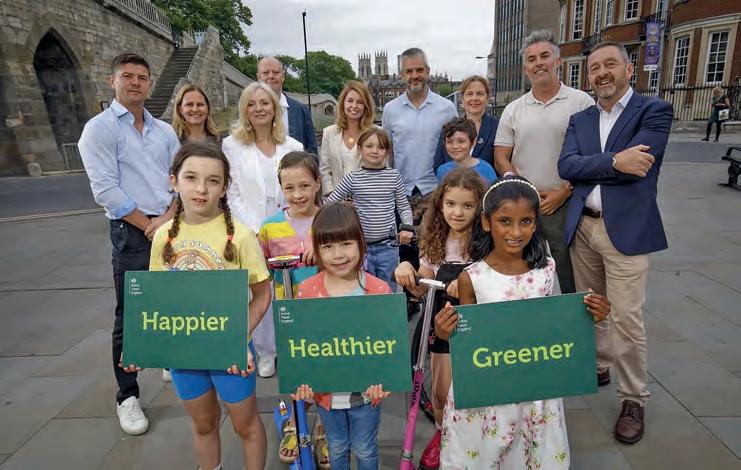
“This partnership is about building on South Yorkshire’s proud legacy of sport, movement and community spirit to bring that vision of a healthier South Yorkshire closer to reality; signing a new agreement with Sport England that puts physical activity and healthier lives right at the heart of our plan for prevention and wellbeing.”

The partnership’s vision for children and young people is to give every child a great start in life, with every school in the region becoming an “active school”. Work in this area is heavily linked to plans to increase active travel, with the aim of empowering people to travel actively every day.
To create more opportunities for active travel, the Mayoral Combined Authority has launched a new Walking, Wheeling and Cycling Strategy. The first of its kind in the UK, the strategy is underpinned by a strong focus on community engagement and sets out a twin-track approach to build safer,
healthier neighbourhoods and to connect every community to opportunities.
“The strategy puts people at its heart,” Coppard says. “We asked our communities to tell us what they need for physical activity to be safer, easier and more welcoming – and we’ve listened.
“It’s important because our children deserve the best start in life. They deserve to feel safe and confident, whether they’re getting to school, heading to the park on their scooter or just playing out. And parents deserve to know their children are safe.”

Among the key projects under the partnership will be the setting up of the Sport Legacy Institute (SLI). Based at Sheffield’s Olympic Legacy Park, it will look to embed preventative health initiatives into everyday life - from schools and workplaces to transport and urban planning.
The South Yorkshire Mayoral Combined Authority
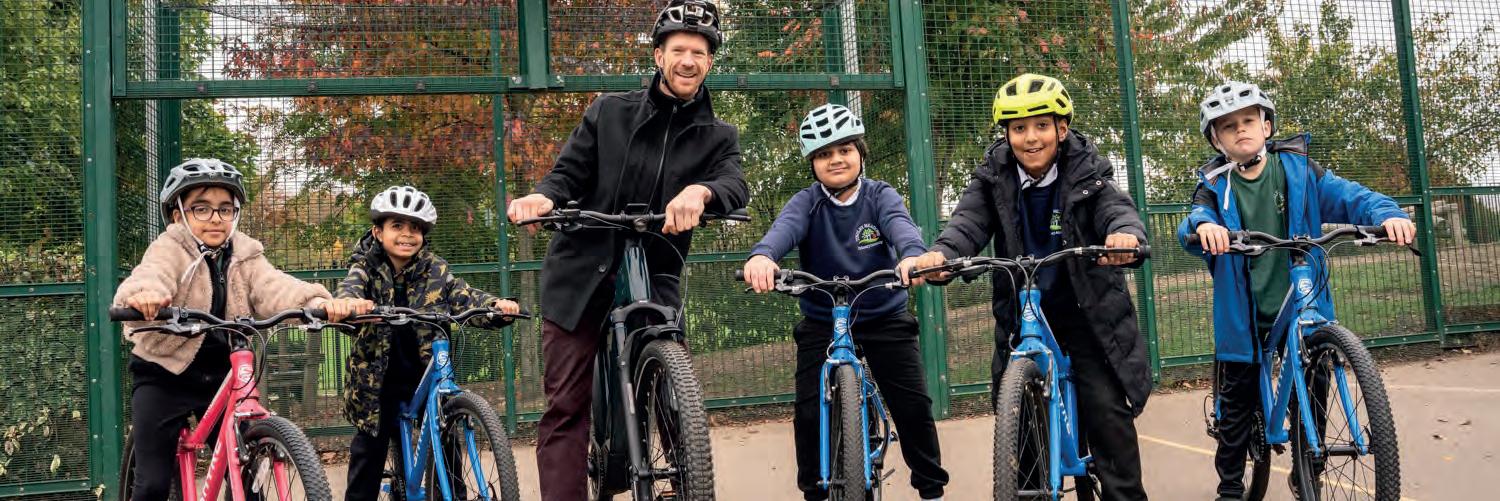

will invest £2m, together with at least £5million of grant funding projected from Westfield Health over the next decade, to create the SLI. The Institute will serve as the UK’s first region-wide testbed for preventative health and human performance. The aim is to bring together policy, infrastructure and innovation to “pioneer new standards”, reduce pressure on the NHS and unlock economic growth to help South Yorkshire become the healthiest region in the UK.
The SLI reflects a shift from treating sickness to prioritising preventative measures. This could include anything from combating the mental health crisis, to encouraging girls to get active and stay active across all stages of life, to creating proactive return-to-work pathways for those suffering from musculoskeletal conditions.
“The SLI brings together policy, infrastructure and innovation to attract investment and improve health outcomes for everyone, particularly those who need it most,” Coppard says.
“We’re building on the blueprint we set out in our Health is Wealth report - a 10-year plan to make South Yorkshire a place where people live longer, healthier, happier lives. Because health isn’t just about hospitals and this partnership is about more than just sport. It’s about how we live our lives, the choices we make, the
This partnership is about building on South Yorkshire’s proud legacy of sport, movement and community spirit to bring that vision of a healthier South Yorkshire closer to reality
systems that support us, and the place that we live.
It’s about creating an ecosystem of innovation, research, and opportunity - so we can improve health, grow our economy, and build a stronger, fairer South Yorkshire that’s fit for the future.”
Sheffield-based Westfield Health intends to use the SLO as a model and catalyst to help create a social impact fund of up to £50m, with the potential to scale up the learnings internationally with its corporate clients. Westfield is already collaborating with EGYM, a German health company that develops smart technology and software for sports and fitness.
Dave Capper, CEO of Westfield Health, says:
“This partnership is a true convergence of public, private and academic sectors, forming an innovation ecosystem with a shared mission: to do good, better. For Westfield Health, this is philanthropy with purpose – linking our community investment to innovation and thought leadership that can benefit all of our stakeholders.
“It creates a unique flywheel effect, where our success is measured not just in business growth, but in the social impact we generate. As the UK’s first region-wide testbed for health prevention, it sets a blueprint for others to follow, rooted in South Yorkshire but designed for global scale.”


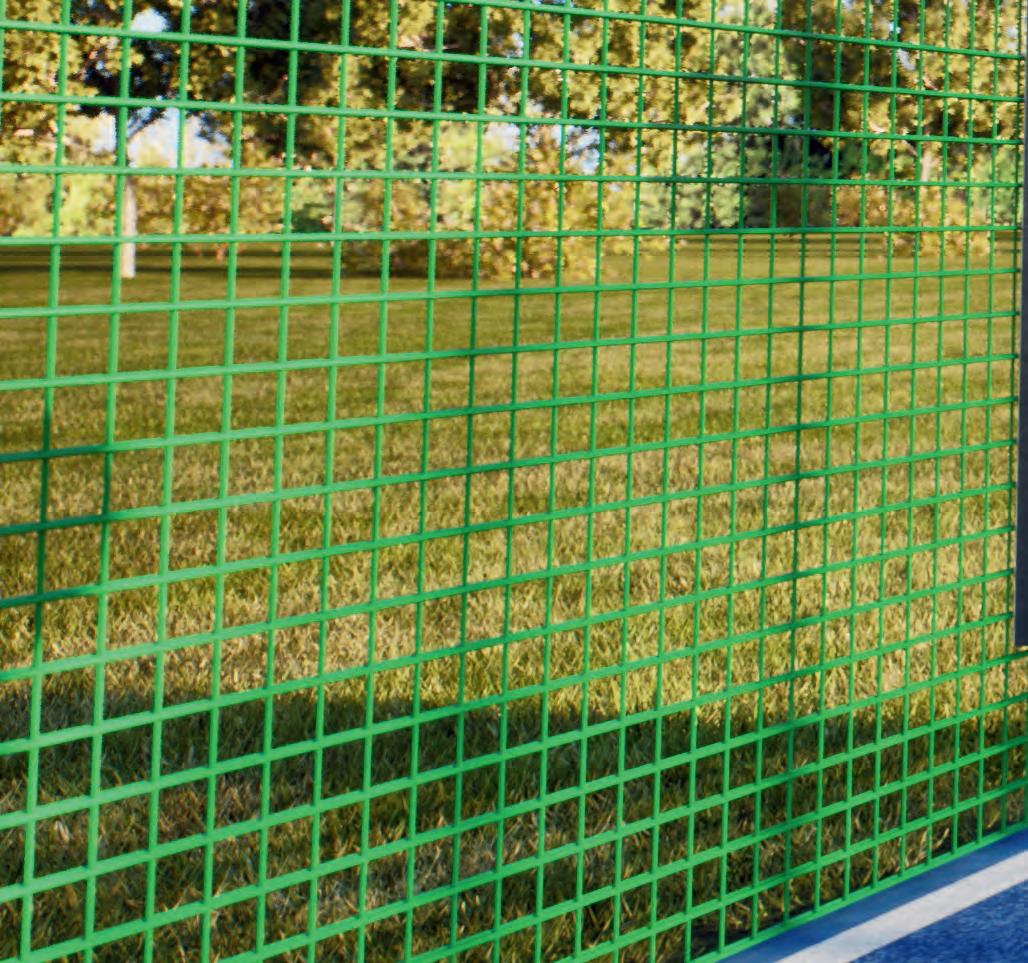


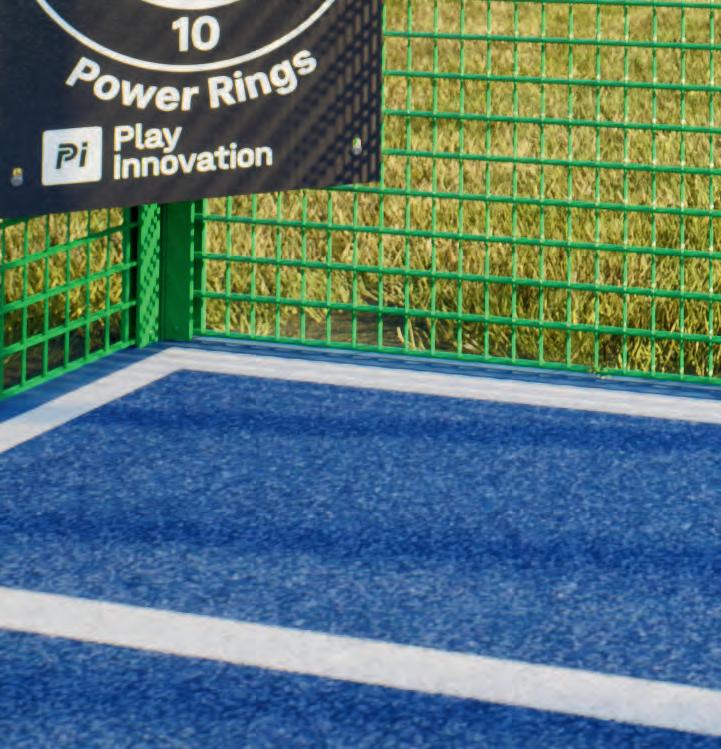
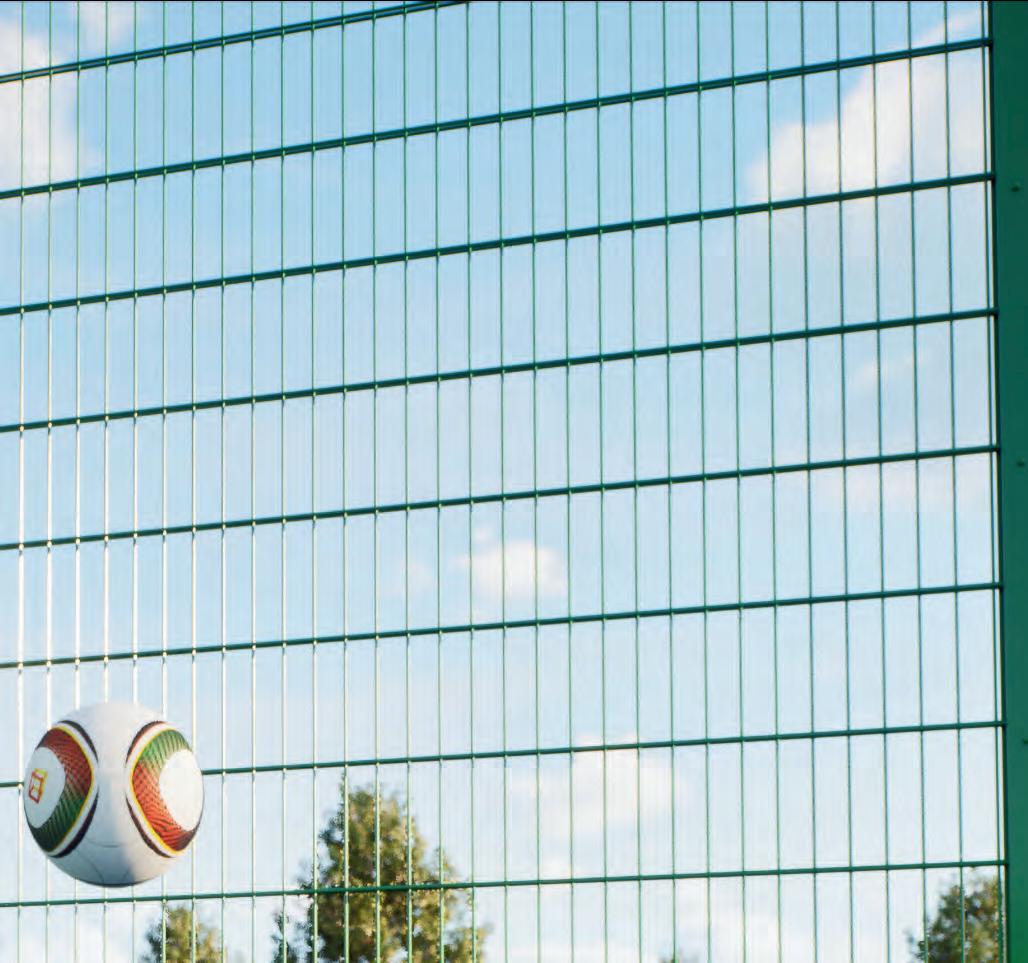
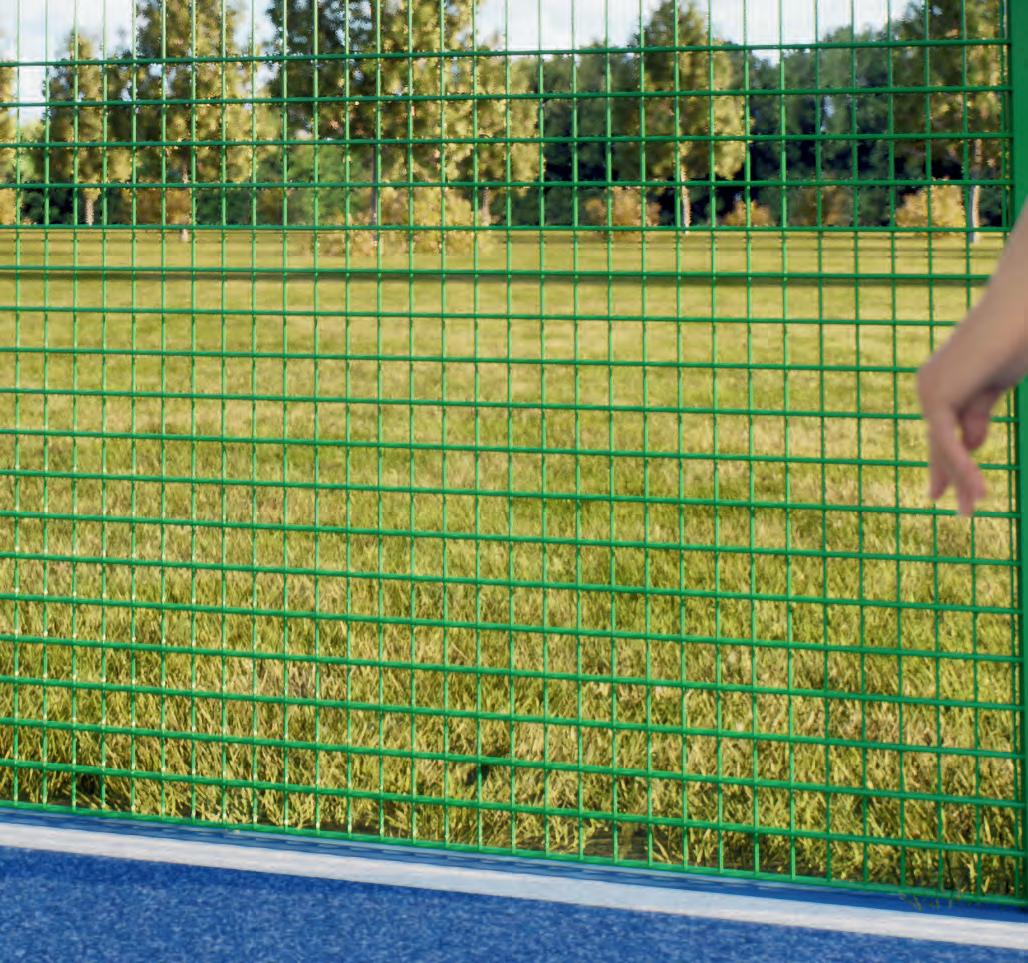

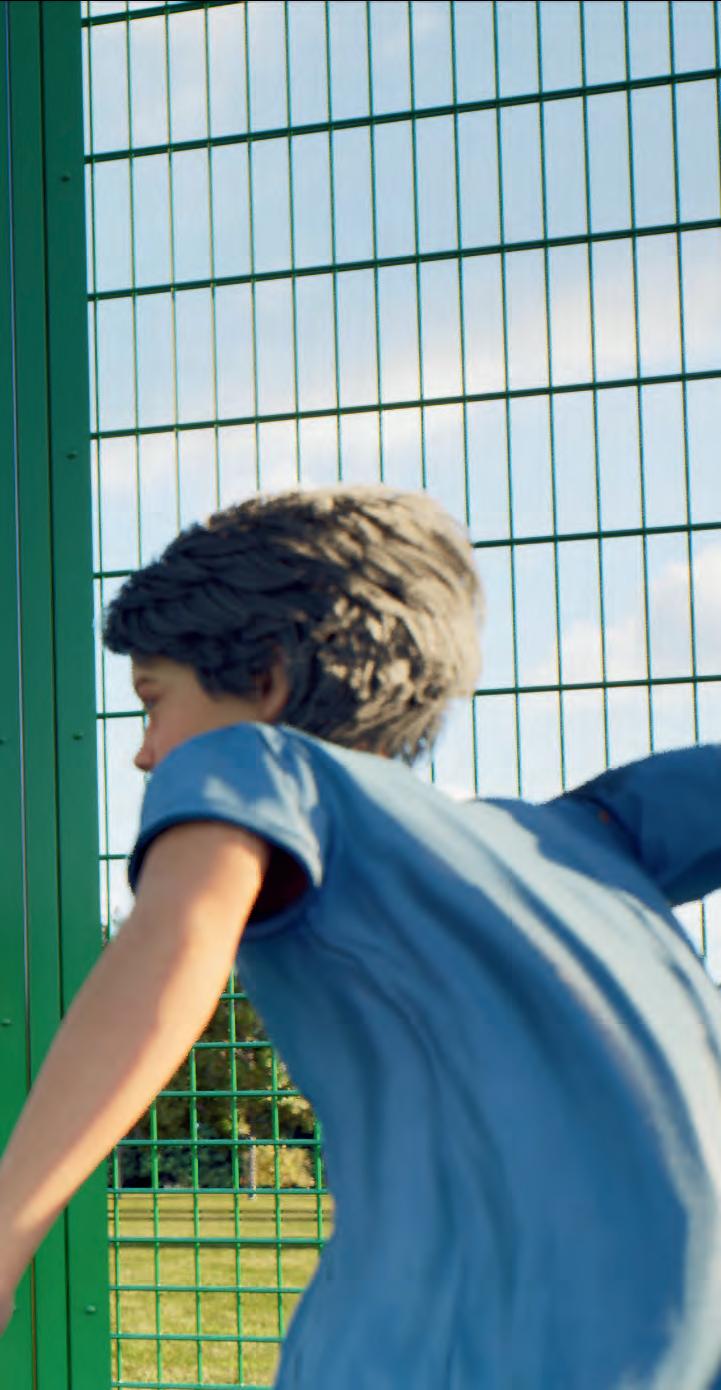
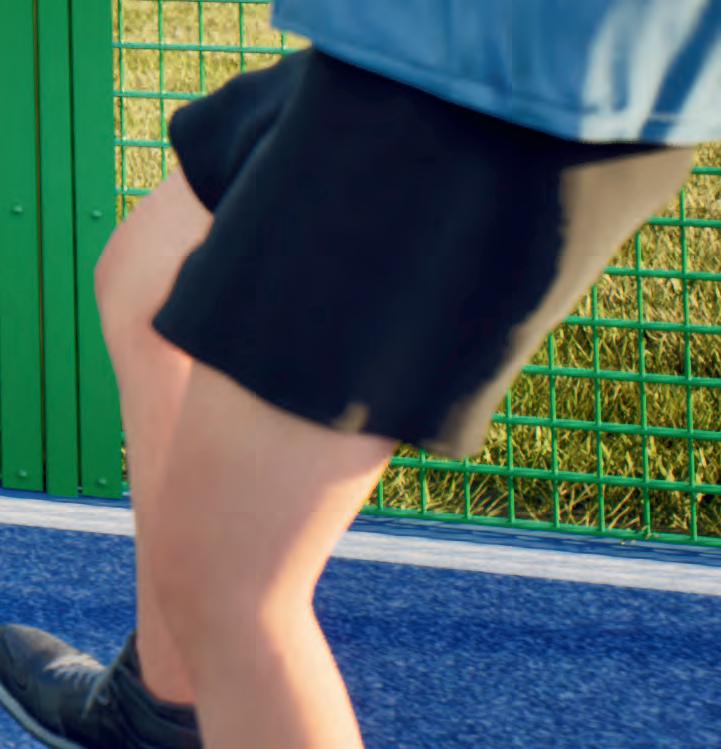
For decades, ground-up, recycled vehicle tires – also known as styrene-butadiene rubber (SBR) crumb – have been the most common and preferred infill for 3G pitches. As well as providing an excellent playing surface, SBR has proven a cost-effective product, making it an economical choice for manufacturers and installers. However, concerns over microplastics escaping into the environment have resulted in the industry developing more environmentally-friendly alternatives – a direction of travel which has been hastened by the European Commission’s decision to phase out the sale of intentionally added microplastics, including rubber crumb infill. The age of SBR in the EU area will officially end in October 2031, as new pitch installations and refilling with rubber granules will no longer be allowed after this date (although existing pitches can continue to be used and maintained until they reach the end of their life).
While the European Commission’s decision only affects EU countries, the sportsturf sector has embraced the challenge to come up with alternative products at a global level. For now, SBR infills still remain the standard, but thanks to the industry’s efforts, rubber crumb is increasingly being replaced, or supplemented, by vegetal (organic) infills such as granulated cork, coconut fibre, crushed olive stone, chipped corn cob and engineered wood particles.
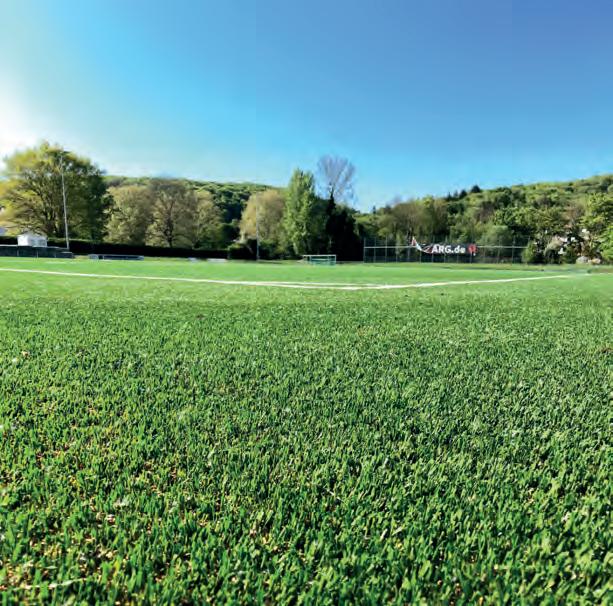
The organic infill products are typically placed as the upper “performance” layer above a stabilising sand layer in a 3G construction. As a result, they can have a big impact on how a surface plays and performs during activities.
Within the UK market, one of the significant developments in the area of alternative infills is the Football Foundation’s test hub in Sheffield. Several alternative infill materials are being tested at the site, including cork, olive pits, sweetcorn cob husk and pine and grit from Norwegian birch. The results – which could guide the future direction of the preferred infills used on the UK market – are expected to be made public sometime in 2026.
To help ensure quality products, the Sports and Play Construction Association (SAPCA) has created a Quality Control Protocol for Sports Performance Infills. It was developed to provide a robust framework of obligations which suppliers and installers need to follow to demonstrate compliance with current legislation and regulatory requirements. The protocol applies to the use of Sports Performance Infills (SPIs) and has been prepared in conjunction with SAPCA’s member companies and key sports bodies, including Sport England.
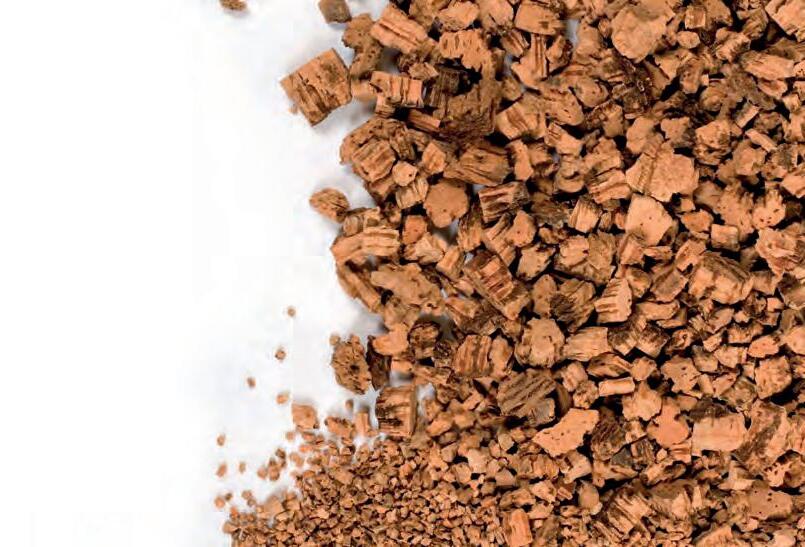
All SAPCA member companies have committed to the protocol, which creates a clear compliance pathway for anyone considering using nonpolymeric options in their 3G pitch projects. In short – choosing a SAPCA member ensures that a pitch using organic infills will perform as intended.

A number of SAPCA member companies now offer organic infills. One of these is Domo Sports Grass, which has two natural infills in its range, the Domo Terraefill and Domo Naturafill.
Terraefill is an environmentally friendly, granular infill that is made from 100% organic plant material. It is highly resistant to UV and ageing and boasts water retention properties. It is also entirely biodegradable. The other, Naturafill, is a 100% organic infill material made from high-performance granulated cork from the cork oak tree.
Naturafill has a long-term shock absorption and a low energy restitution value, which ensures optimal ball movements during play. It is also FSCcertified, as the trees from which the cork is obtained are harvested, rather than cut down. In this way, the biodiversity of the forests is preserved.
“Naturafill cork granules are 100% recyclable, with no loss of quality and no creation of waste by-products,” Domo says. “From a performance point of view, the lower energy restitution value also makes pitches using Naturafill less stressful for tendons and joints.”
Another SAPCA member, Amorim Sports, is one of the market leaders in supplying cork-based infills. Its Amorim Nature and Amorim Organic products (100% granulated cork and cork/olive mixes respectively) have been specified for 3G systems and offer a balance of elasticity and shock absorption. Amorim also focuses on the environmental sustainability of its products. According to a study – based on a tool
specifically developed by PwC – Every kg of Amorim Nature Infill captures more CO2 than it emits — up to 1.8 kg less CO2 in the atmosphere (certified LCA).
Elsewhere, PureGrain – supplied by SAPCA member, FieldTurf and its parent company, Tarkett Sports – is a plant-based infill derived from the non-edible portion of the corn cob. It was used in the UK’s first PureGrain sports pitch (Preston School, Yeovil) in a project delivered by SAPCA member Notts Sport working with Tarkett, demonstrating that corn-based materials are no longer laboratory curiosities but supplychain proven. PureGrain is promoted as dust-free, biodegradable and suitable for mainstream 3G use when combined with appropriate design and maintenance.
Notts Sport has also been active in coconut-fibre innovations. Examples include its CocoTurf non-plastic turf concepts and blends of cork and coconut fibre.
Organic materials differ in mechanical behaviour from SBR. Cork and engineered wood have lower thermal conductivity and absorb/preserve moisture (helpful for cooling and stability), but some vegetable infills show different compaction and wear profiles. As an example, cork is more compressible while some husk materials are lighter and may require heavier containment measures.
Recent research and standard test work (and SAPCA’s protocol testing) are helping quantify shear, traction and durability metrics so clients can make evidencebased choices. The recommendation is that all specifiers should only use SPI products listed on SAPCA’s register.
To find out more about the protocol, visit: https://sapca.org.uk/guide/sapca-quality-control-protocol-for-sports-performance-infills-for-3g-surfaces/
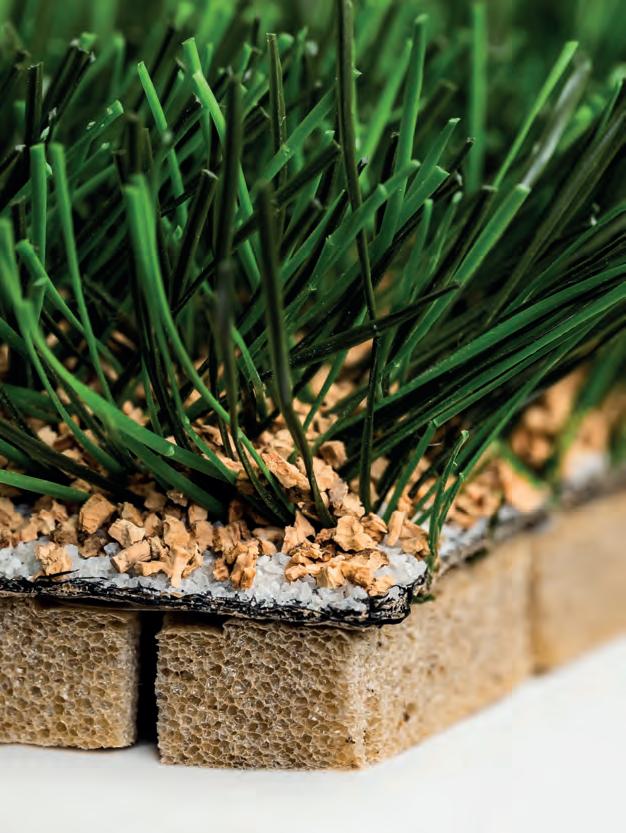
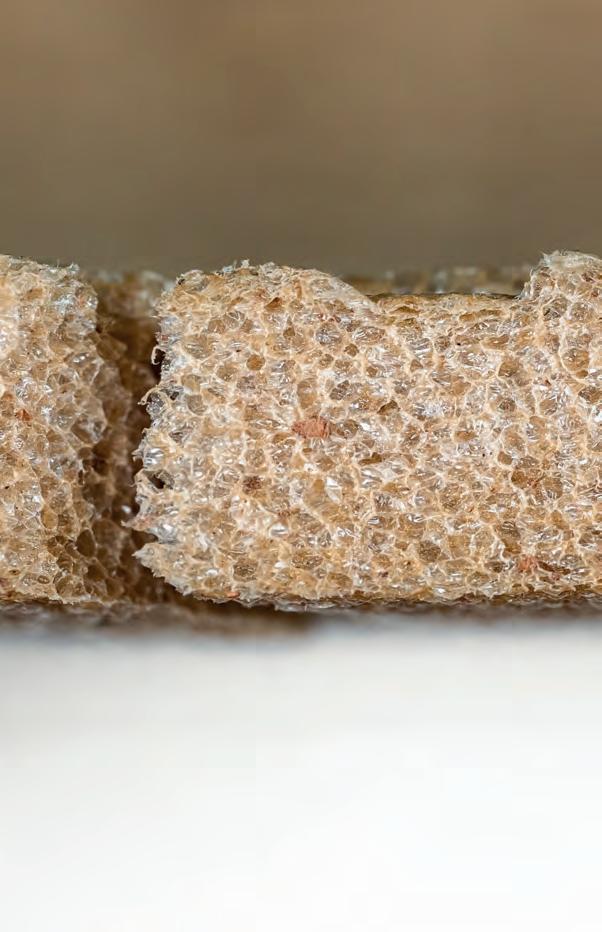
Amorim Sports has created a next-generation shockpad that offers performance, durability and sustainability – all in one solution
Artificial turf systems are only as good as the layers beneath them. Amorim Sports has taken this principle further with the launch of Dynamic 702, a next-generation shockpad that delivers optimum sports performance while lowering environmental impact.
Dynamic 702 is a high-quality shockpad made from cork and closed-cell polyethylene, combining natural performance with engineered precision. Its unique punched design ensures excellent drainage, while its elasticity optimizes shock absorption and vertical deformation. The result is a reliable base that enhances player comfort, reduces injury risk, and improves overall playability. Compliant with EN 15330-4, the pad is designed to work with most major artificial turf systems worldwide.

As some solutions may lose resilience over time,, Dynamic 702 maintains constant properties throughout its service life, even under highfrequency use. It’s weatherproof, rot-proof and resistant to becoming brittle or hardened, making it a trustworthy choice for sports facilities that demand long-term value. Importantly, the pad can be reused in more than one installation. Even when a turf system requires replacement, Dynamic 702 remains fully functional underneath, reducing both costs and environmental impact.
Cork is more than just a material: it’s a natural CO2 retainer. By integrating cork into its composition, Dynamic 702 lowers the carbon footprint of polyethylene, offering a greener alternative without compromising performance. Fully reusable for at least two life cycles of the turf pitch, the solution reflects Amorim’s commitment to circular economy
principles. With climate impact increasingly central to decision-making in sports infrastructure, Dynamic 702 represents a tangible way for clubs, cities and contractors to deliver sustainable sports fields.
Dynamic 702 is engineered to keep sports surfaces performing at their best season after season. Its design delivers consistent shock absorption, protecting athletes and enhancing comfort. The advanced drainage system ensures fields stay playable even in heavy rain, while its dimensional stability means the surface won’t lose resilience over time. Withstanding intensive use and extreme weather, Dynamic 702 provides clubs and facility managers with peace of mind and lower maintenance concerns. Dynamic 702 gives clubs, cities, and contractors the confidence that their artificial turf systems will perform reliably, protect athletes, and reduce environmental impact - game after game, season after season. For more information, visit: www.amorim-sports.com
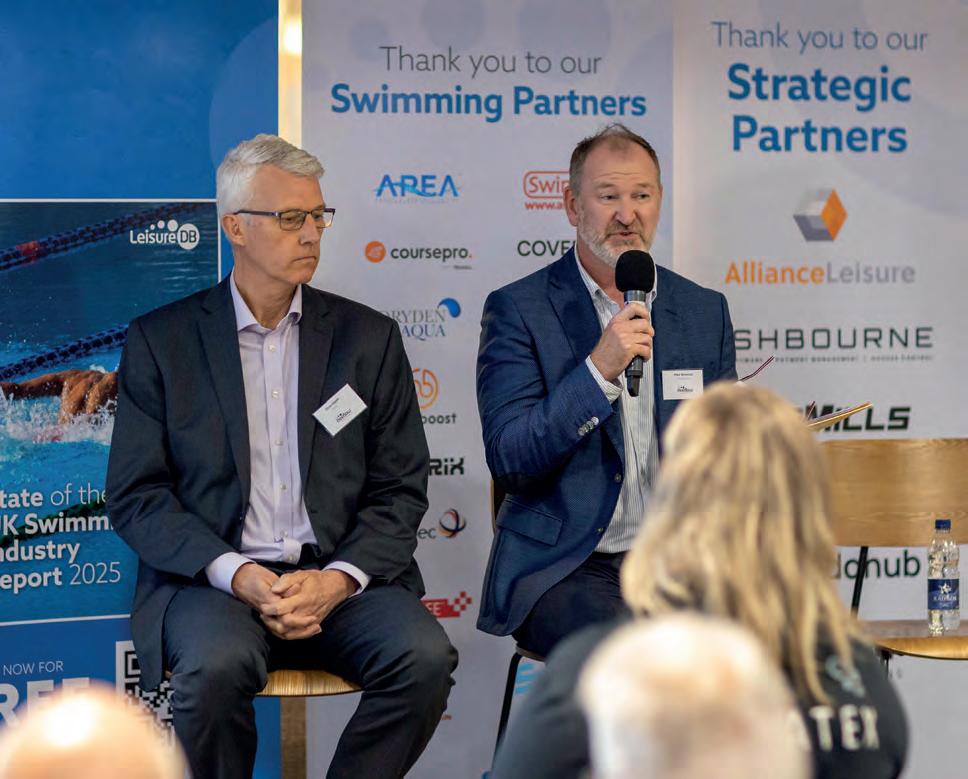

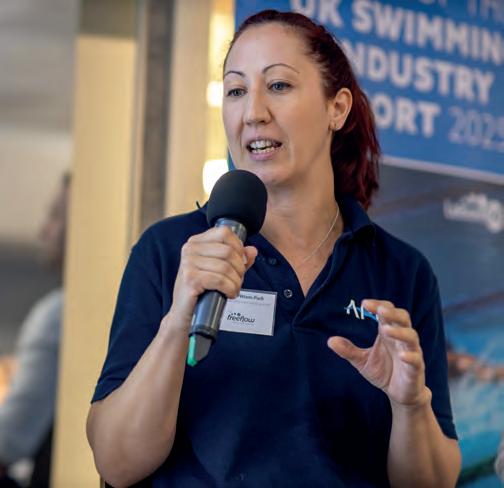
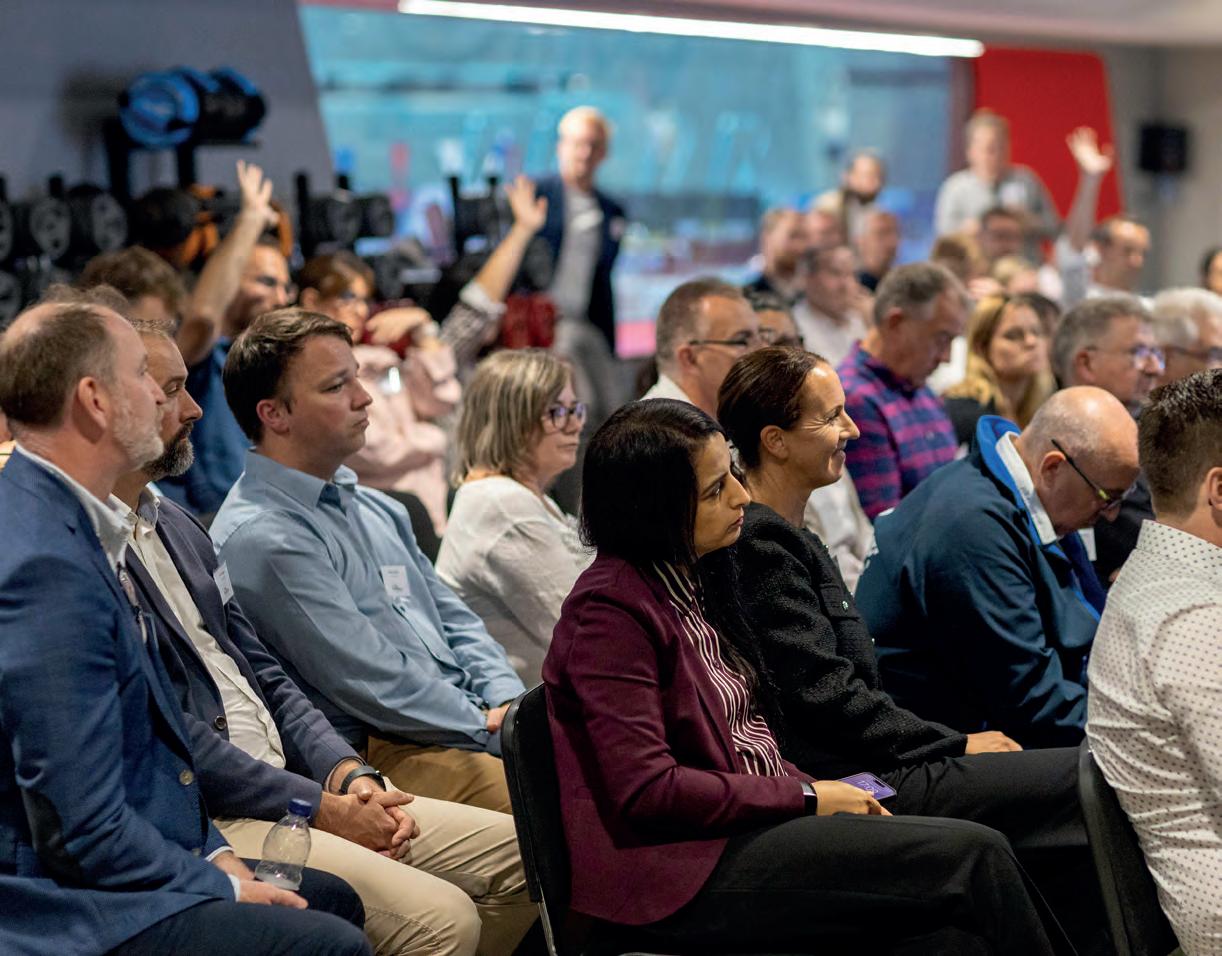


SportsNation reports from the Freeflow Swim Conference 2025, which has become one of the leading events for the UK aquatics sector
The Freeflow Swim Conference 2025, hosted by Leisure DB at the iconic London Aquatics Centre on 18 September, was hailed as a milestone gathering for the UK’s swimming community. Drawing leaders from across sport, health, and leisure, the event combined robust data from Leisure DB’s State of the UK Swimming Industry Report 2025 with inspiring discussions, underlining both the challenges and the potential of the nation’s pool network.
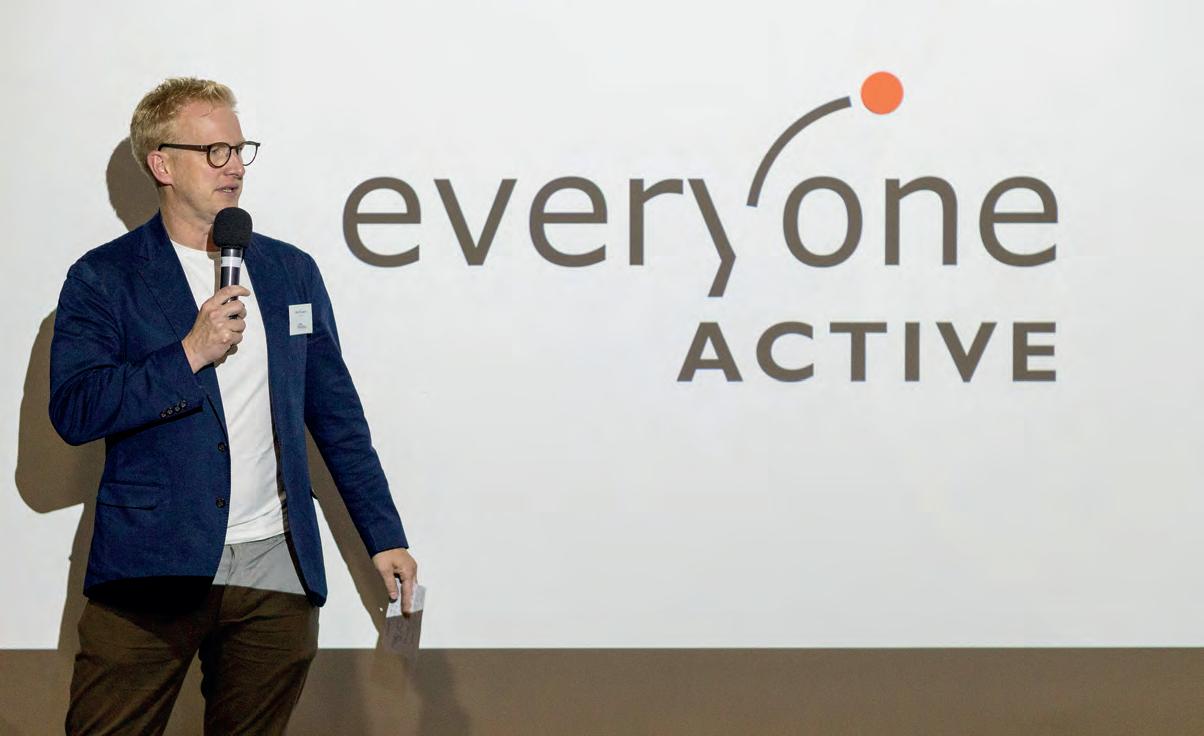
The conference programme brought together a remarkable range of voices. From Olympic champion Becky Adlington (Swim!) to senior leaders from Swim England (Andy Salmon), the STA (Dave Candler), and RLSS UK (Simmy Akhtar), attendees heard perspectives spanning grassroots participation, safety and elite performance.
Key sessions included:
State of the UK Swimming Industry – Key progress from the figureheads of the governing bodies and leading operators.
Neurodiversity and Swimming – A powerful discussion on inclusion and accessibility.
Utilising Secondary Spend – Insights into diversifying revenue and building resilience.
Energy Costs: What’s the Cure? – Practical solutions to one of the sector’s biggest challenges.
Programming for Success – Examples of creative approaches to maximising pool usage.
The choice of the London Aquatics Centre, a legacy of the 2012 Olympic Games, added symbolic weight to the day. The venue’s world-class setting provided a fitting backdrop for conversations about safeguarding swimming for future generations, reminding delegates of both the sport’s proud history and its ongoing potential.
While acknowledging the ongoing decline in pool stock, the Freeflow Swim Conference struck an optimistic note. The combination of candid data, expert insight, and passionate advocacy created a platform not only for reflection but also for momentum.
As the conference concluded, the message was clear: swimming matters; for health, for safety, and for communities. By bringing together diverse stakeholders in such a dynamic and celebratory forum, Leisure DB ensured that the Freeflow Swim Conference 2025 will be remembered as a turning point in the campaign to protect and grow the UK’s pool provision.
“The Freeflow conference is more than just an event – it is a platform for collaboration, knowledgesharing, and progress,” said LeisureDB’s David Minton. “It explores the future of swimming and aquatics within the fitness and leisure sector.
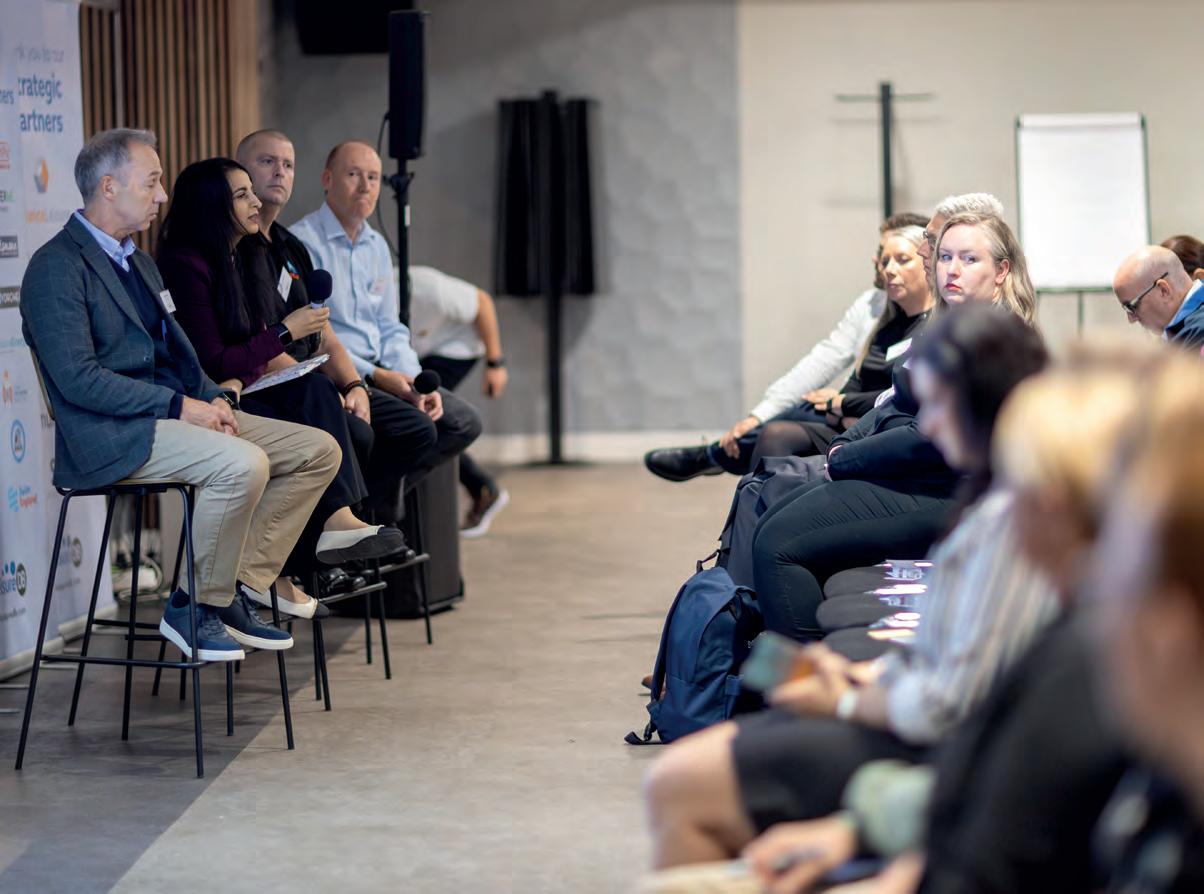
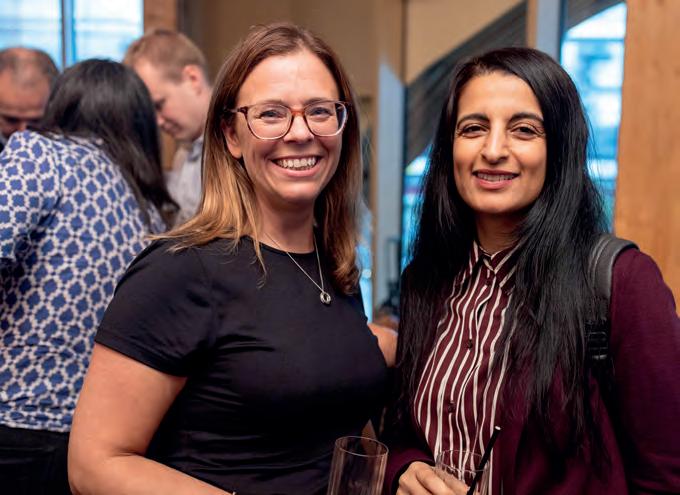
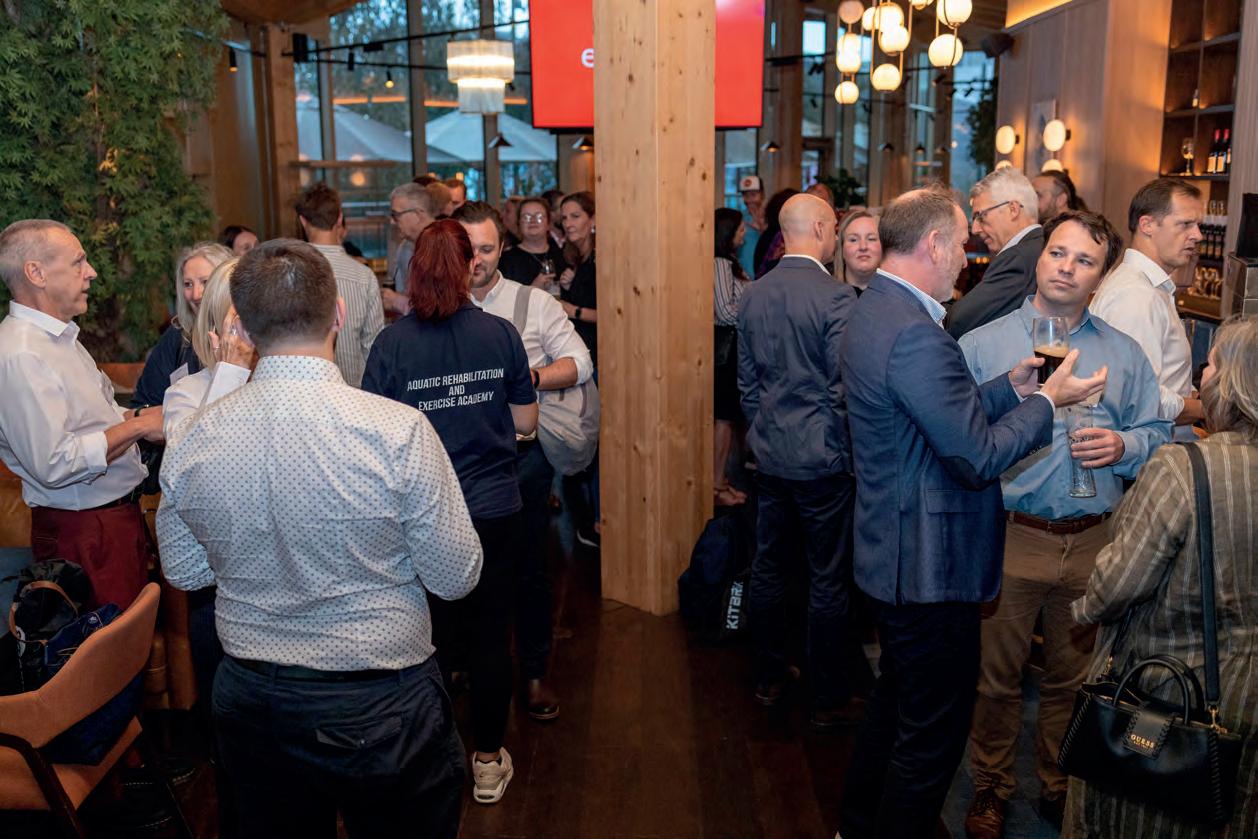
Padel isn’t just booming – it’s exploding. And nowhere faster than in the UK, where players, clubs and investors are racing to join the movement. But as more and more courts appear across the country, standing out – and staying ahead –means thinking beyond the game itself. The future belongs to those who maximise their investment and futureproof their facilities. Here’s how to make your next padel project a real game-changer…
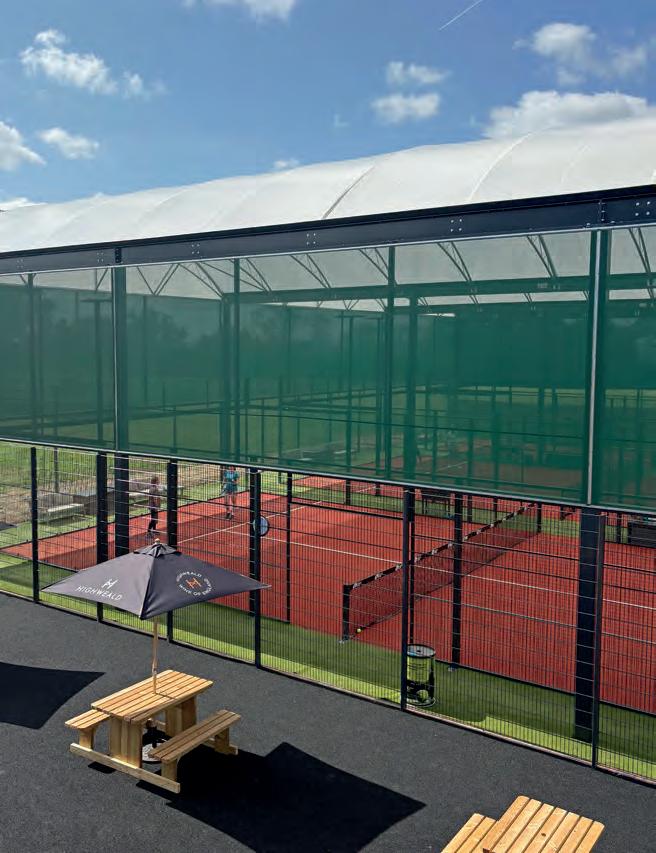
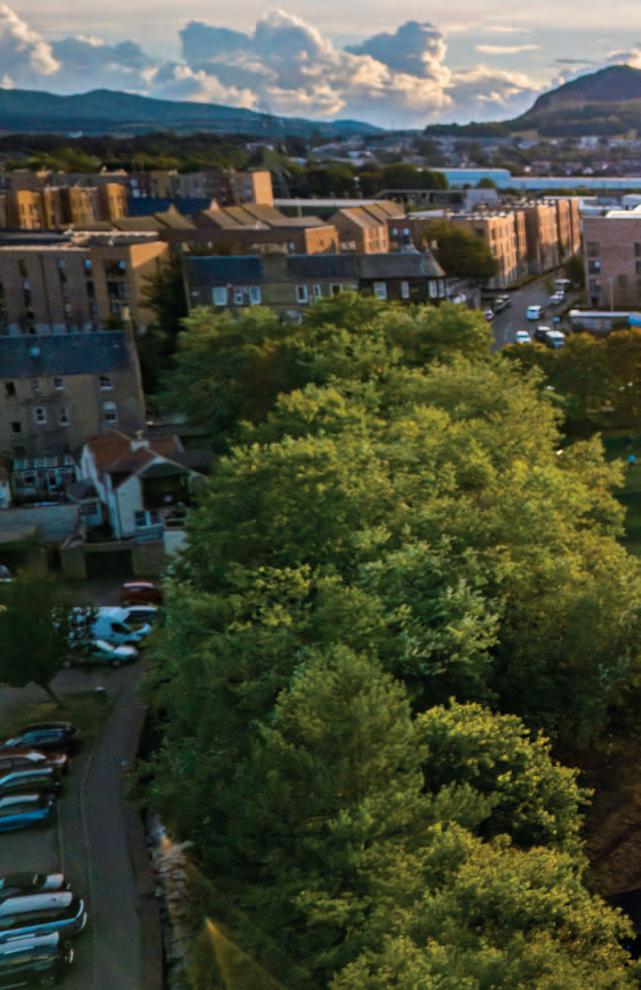
Six steps to supercharge your padel ROI
Plan for growth: All-weather padel courts don’t just increase play – they ignite demand. Once players experience the benefits of covered courts, they’ll inevitably want more. Partner with a team who can scale with you as your community grows.
Unlock new revenue: Padel is renowned for being a social game so think beyond your courts. Elevate your spectator and post-match offer with café spaces, covered viewing terraces or post-match bars that turn every visit into a destination experience.
Differentiate with clever design: When everyone’s adding padel, creativity becomes your advantage. Think post workout sauna facilities or yoga sessions. Or expand with an all-weather volleyball court, or outdoor covered gym – transforming your allweather padel site into a year-round fitness hub.
Build in sustainability: From solar panels and sedum (green) roofs to clever rainwater harvesting, greener choices don’t just lower your costs and carbon footprint – they raise your reputation – so make sustainability your signature to achieve brand standout.
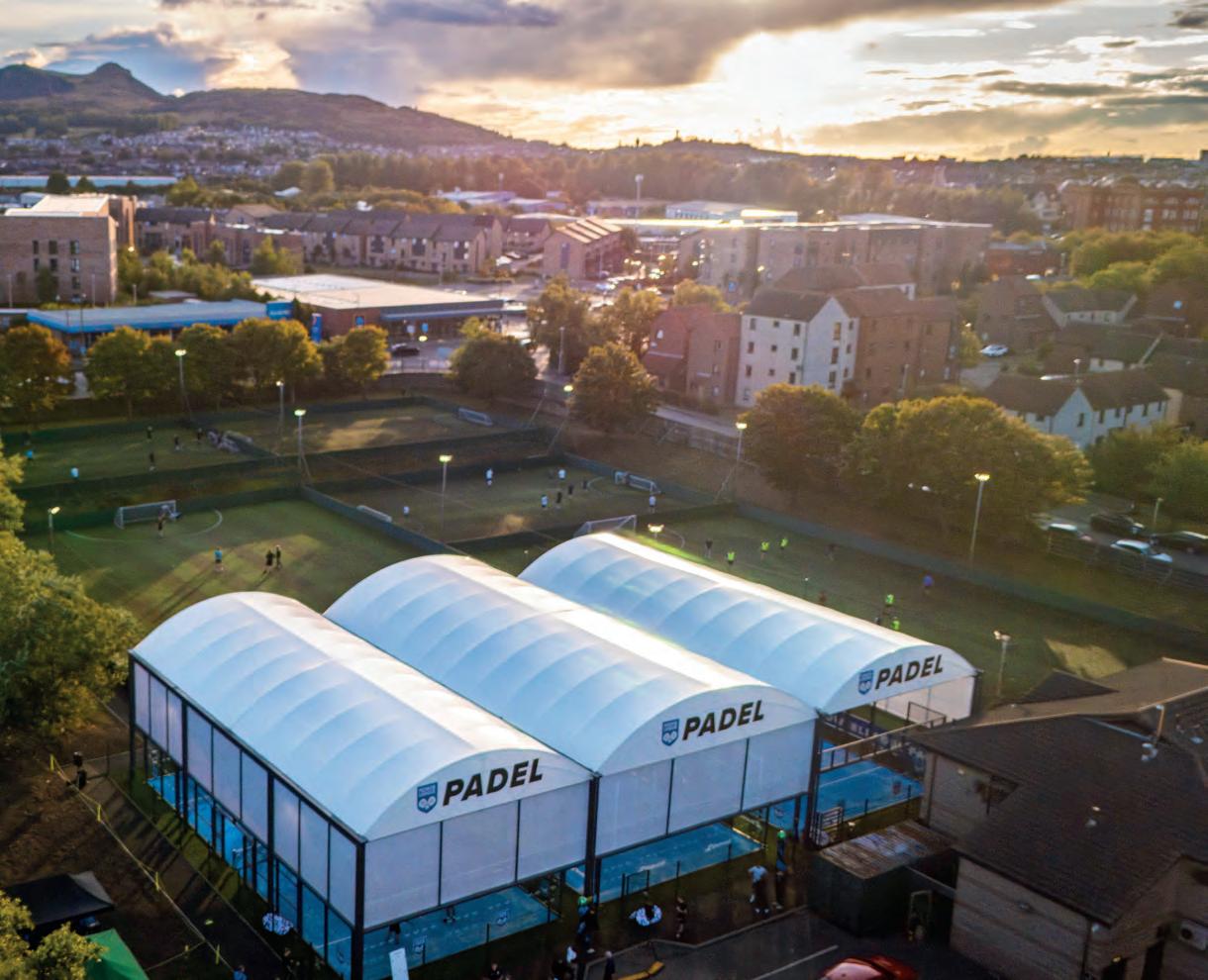
The UK’s fastest growing sport is only just getting started
Play in all hours and seasons: Protect players and profits with canopies that perform in allweathers. Look for roofing that screens out harmful UV rays in the summer as well as rain, wind and snow in the winter. Extend playing hours with floodlights, and year-round spectatorship with heat lamps. Even the smallest upgrades can have a transformative impact on court occupancy rates.
Think long-term: Invest in engineering that lasts. Choose a partner with market-leading guarantees and proven results – so your courts deliver returns today, tomorrow, and for generations to come.
Ready to elevate your game? We’ve got you covered…
Download our new padel brochure today to find out what’s possible when you team with the UK’s leading padel court canopy provider:
Explore stunning all-weather padel projects across the UK
Learn how to maximise ROI and design for growth
Book your complimentary site visit today
Because when it comes to building the future of padel – leaders trust leaders…
For more information, visit: www.fordingbridge.co.uk Email: info@fordingbridge.co.uk
Temporary and modular structures can offer venue owners and operators cost-effective and flexible solutions that can be built in short time frames
The use of temporary and semipermanent fabric and modular structures is increasingly more than a stop-gap measure. For operators of stadia, clubs, training venues and event hosts, the solutions deliver flexibility, costefficiency and speed – allowing sport organisations to scale, respond and adapt without the burdens of full brick-and-mortar construction.
One of the clearest advantages of temporary and semi-permanent structures is the accelerated delivery timeline. “Traditional” builds – from stadia and sports halls to leisure centres – require lengthy design phases, planning, foundation work and a full construction programme. By contrast, modular or fabric structures can be erected within weeks or months. An example of this is the semi-permanent sports hall for Winchester College in late 2024 – a 40m x 30m x 8m facility that was installed by Spaciotempo in just six weeks to support the college’s wider redevelopment.
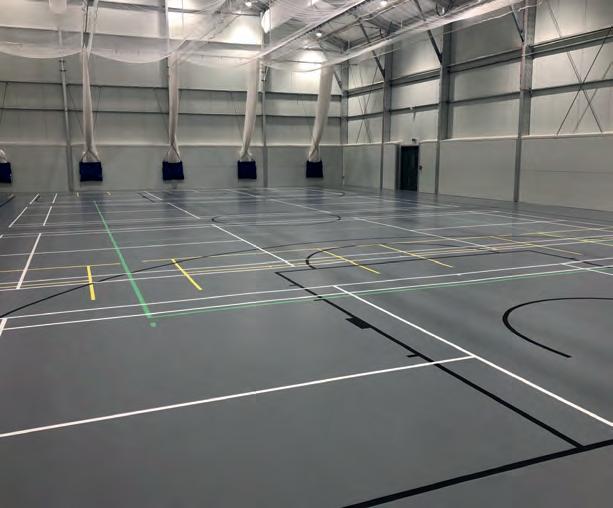
For venue operators, such speed can be invaluable — whether it’s to build padel courts, cover a tennis facility, add hospitality tents for a big event, or bridge the gap while a major redevelopment is delivered. The agility afforded by such structures translates into greater use-days, less downtime, and quicker return on investment.
Cost is another key factor in sport facility provision and the seemingly ever-increasing prices of materials aren’t helping. For bricks and mortar venues, the long lead times – as well as the complexity of the construction process – can significantly raise the cost per usable metre. Temporary and fabric structures offer a compelling alternative.
One of the UK companies offering sports halls that use high-quality materials, yet remain far more affordable than permanent solutions, is SAPCA member, Smart-Space.
“Our temporary sports halls provide flexible, cost-effective solutions for sports and recreational activities,” the company says. “Quickly deployed, our modular sports buildings offer an ideal way to expand facilities without permanent construction. Whether for long-term events, seasonal use, or emergency requirements, our sports halls ensure sports teams and communities have access to high-quality venues whenever needed.”

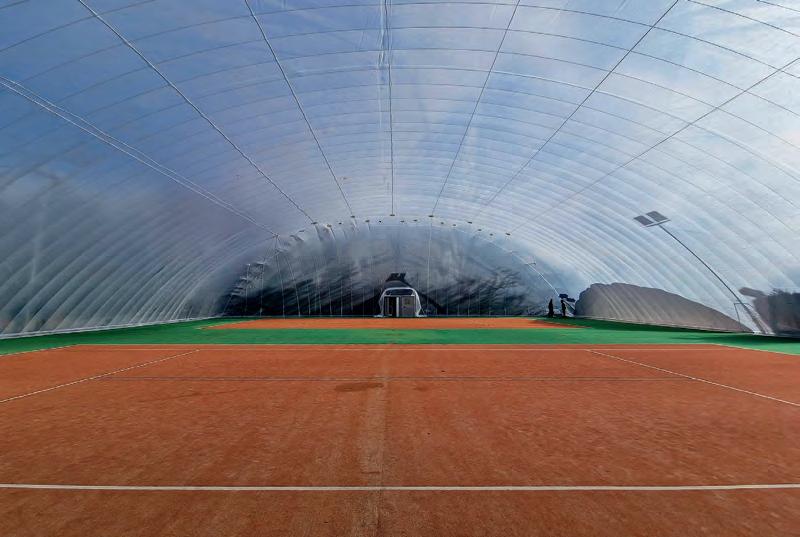

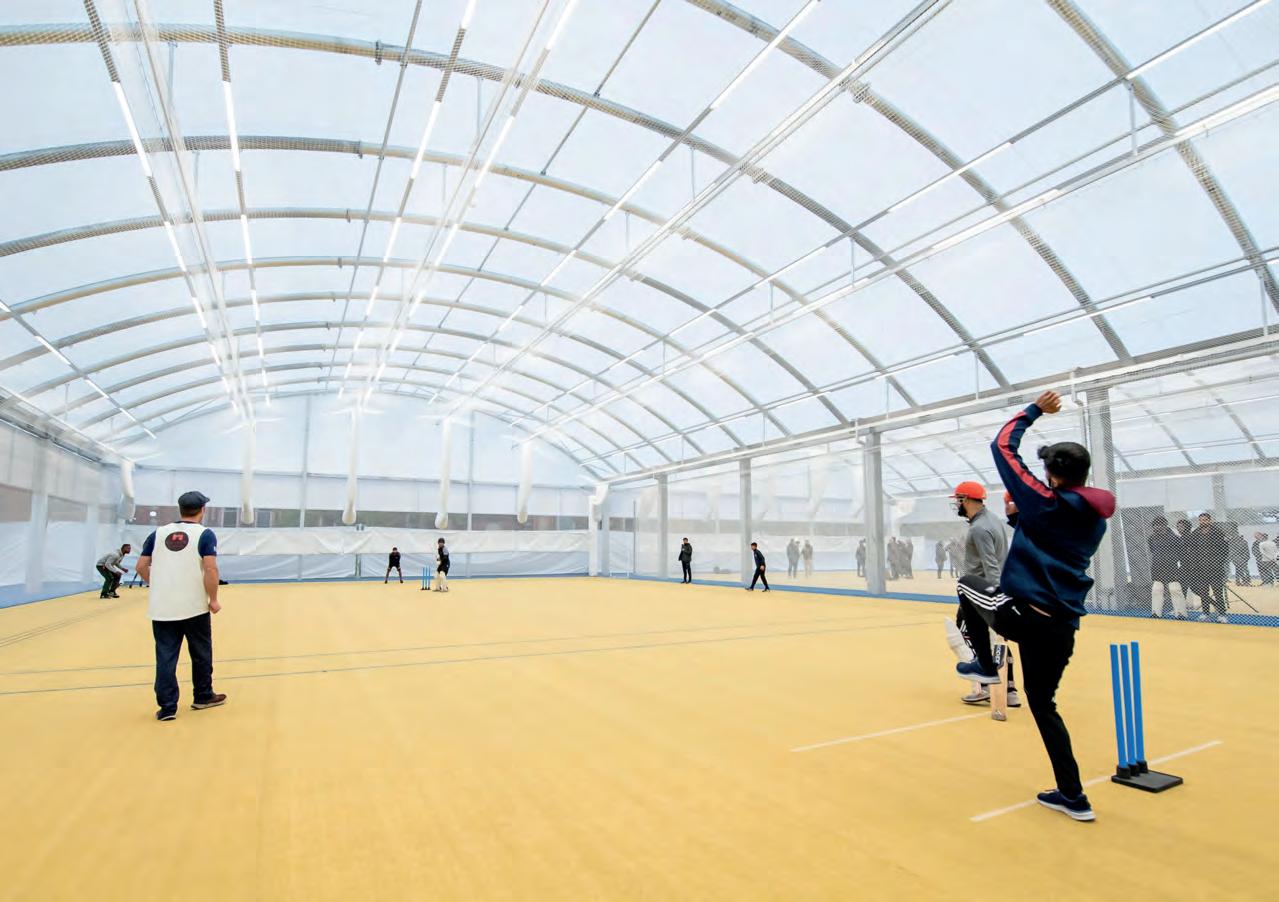
Sport demands evolve: participation volumes shift, new sports emerge – padel and pickleball being great examples – and coverage of courts becomes more critical. Clubs might also require seasonal provision, such as indoor winter training courts. For all of these, temporary and modular structures can provide great solutions.
Take SAPCA member company, Covair Structures, which has installed air-domes to cover tennis courts for David Lloyd Clubs – including a three-court double skin dome in Edinburgh. For a facility management team, such solutions mean less wasted infrastructure, the option to scale up when demand spikes and the ability to achieve more utilisation of space.
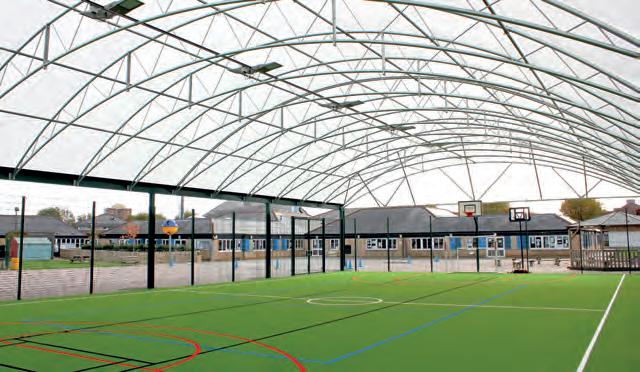
In a modern sports-facility context, consideration of environmental impact and lifecycle costs is vital. Many temporary and modular structures are engineered for reuse, relocation and minimal waste. Temporary buildings can also offer lower carbon footprints and less waste than traditional builds, as they generally use lighter-weight materials (such as aluminium frames and tensile membranes) instead of steel, concrete, or masonry. This means less embodied carbon in both manufacture and transport.
Fabric roofs and aluminium frames can also be reused repeatedly across multiple projects, significantly lowering lifetime material demand. This is an aspect increasingly utilised by major events when they plan their environmental and sustainable legacies. The Paris 2024 Olympic Games are just one example of a major event where the contract specifically emphasised temporary structures that will be reused or recycled. Construction itself is also energy-intensive. Every month saved on-site means fewer machine hours, fewer vehicle trips and lower energy use overall. Because temporary and modular buildings are prefabricated off-site and assembled rapidly, total construction emissions are significantly reduced.
Neptunus provides hospitality settings for major events
Thousands of horseracing, tennis, golf and surfing fans enjoyed hospitality at some of the UK’s most popular sporting events of the summer thanks to temporary structure specialists Neptunus. During the year, Neptunus installed its temporary structures at several high-profile gatherings, including Royal Ascot, the HSBC Tennis Championships at Queen’s Club, the Genesis Scottish Open and Boardmasters Music and Surfing Festival in Newquay.
At Royal Ascot, Neptunus technicians transformed the centre of the historic racecourse into a festival style experience giving racegoers a unique experience in a stylish temporary village that doubled up as an after-race party venue. The Village Enclosure, created opposite the grandstands, brought racegoers to the heart of the racing action with views of the horses and the traditional daily pre-race Royal Procession. Neptunus technicians took just two weeks to erect a total of 4,600sq m of temporary structures
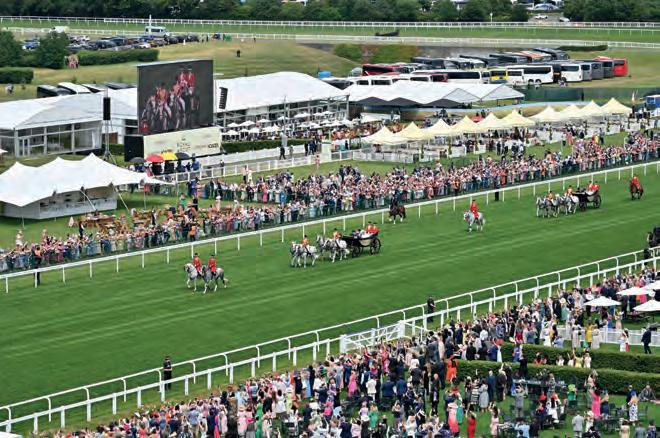
with dining rooms, external decked viewing areas, street food outlets and bars for thousands of racegoers.
At Queen’s Club in West London, Neptunus built a double-deck Evolution II hospitality facility for the 2025 HSBC Championships. The South Pavilion housed a VIP restaurant and public areas for dining and refreshments. It also incorporated sponsors’ suites, bars, merchandising booths, a first aid room and media studios.
In August, Neptunus were in action at Newquay’s famous Fistral Beach in Cornwall for Boardmasters – a surfing competition which combines
Copri turns shipping containers into nature-friendly padel destination
CopriSystems’ latest padel project brings together uninterrupted countryside views and versatile social spaces, fashioned out of converted shipping containers, to create a venue with a high specification and stunning aesthetic. Recycled wooden cladding on one side mitigates acoustic levels and light pollution, while the windtex mesh on the other side allows plenty of natural light but keeps the driving rain out.
The brief was to design a facility that complemented the agricultural nature of adjacent buildings and exposed rural setting, as well as incorporate a modern style that reflected the spirit of padel. Starting with a single panoramic court, plans are in place to expand over the coming years, so the structure needs to be flexible and durable enough to meet the ambitions of a long-term business plan.
https://www.coprisystems.com
skateboarding and BMX bike contests with a music and dance festival attracting more than 50,000 people. A 12-strong crew of Neptunus technicians took seven days to erect a host of Apollo structures, covering nearly 700sq m of space for artistes and staff, while an Alu Hall spanning 1,664sq metres formed a covered dance venue called the ‘Dockyard’ with visitor checkpoints also created for the event.
Ben Keast, Neptunus Managing Director, says: “We service some of the UK’s most popular sporting events during the summer.”
https://www.neptunus.co.uk




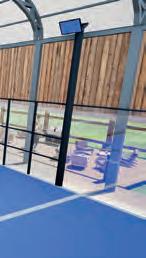
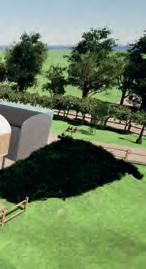



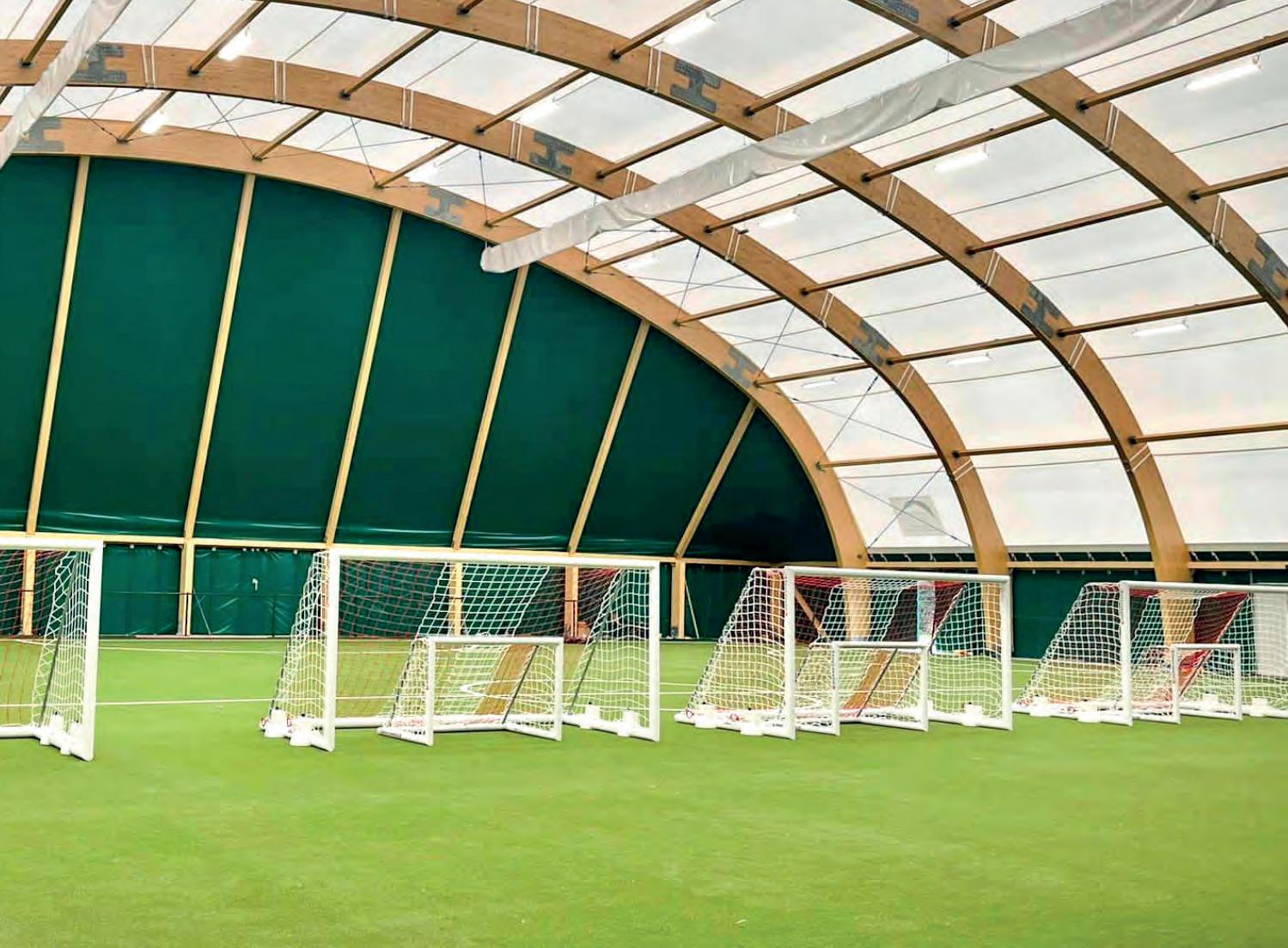

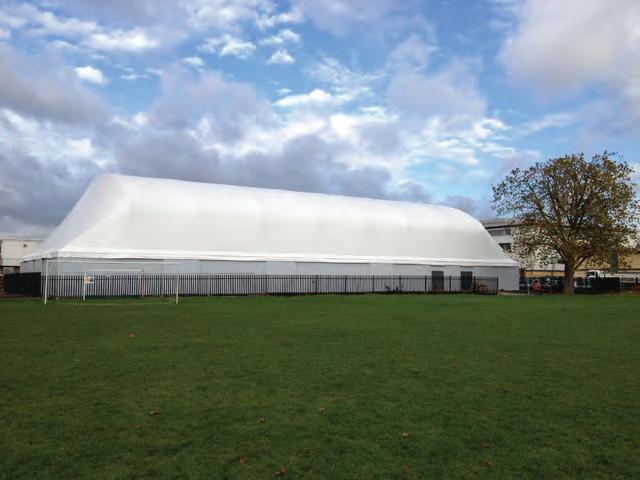

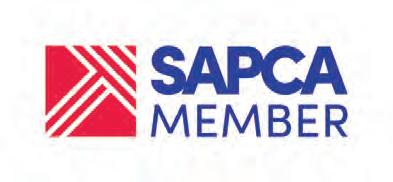
Gym giant David Lloyd turns to Fordingbridge to deliver padel plans
As padel continues to expand its reach across the UK, premium health and fitness club operator, David Lloyd, is making sure it’s ahead of the curve. Over the past year it has partnered with one of the UK’s leading padel court canopy providers, Fordingbridge, to rollout year-round padel court facilities at 10 of its most popular sites – including Finchley, Farnham and Milton Keynes.
With David Lloyd keen to deliver its ambitious rollout plan at pace, Fordingbridge’s expert in-house design team have created a bespoke 22m x 12 m padel court canopy, tailored to fit all 10 sites. Powder coated in black –to contrast with striking orange and black courts – the new padel court canopies have a bold and






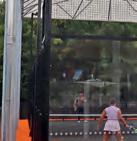
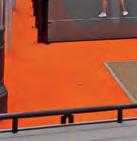


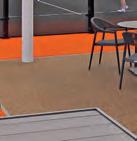

contemporary aesthetic and deliver year-round weather protection.
Another premium health club chain, Bannatyne Group, has also been working with Fordingbridge to deliver all-weather padel

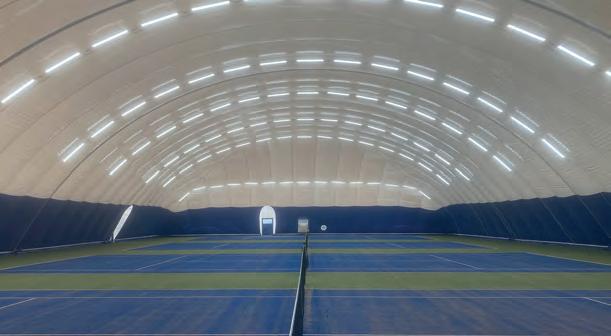

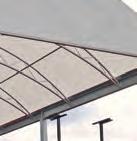
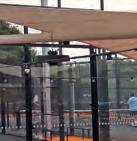




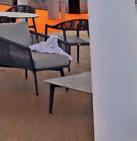

facilities, as have multiple leading padel and sports facility providers including Smash Padel, Game 4 Padel and Powerleague. https://www.fordingbridge.co.uk/ sectors/padel-court-covers/
Fabric structures specialist, Rocklyn, recently completed a project for Galway Lawn Tennis Club. The development highlights the company’s customer-focused approach to sports facility design and construction.
Engineered to the highest quality, the thirdgeneration dome is designed to maximise natural light and thermal performance. The dome’s advanced ‘smart’ blower and control system maintains ideal air pressure while reducing energy use, delivering both comfort and cost savings for the club.
The air dome covers four full-size tennis courts, allowing practices, matches, and events to continue regardless of the weather and helping the club make the most of its facilities throughout the year.
Rocklyn’s design-and-build service is built on collaboration, working closely with their clients to achieve maximised performance and operational goals. Rocklyn continues to expand its sports portfolio, installing padel courts for the Galgorm Collection, one of the United Kingdom’s premier luxury spa and hotel destinations, which reflects the company’s ongoing growth and innovation in the UK sports infrastructure sector. https://rocklyn.co.uk


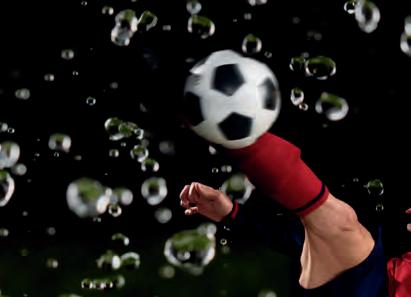



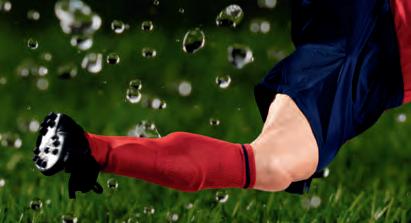



The Trocellen XC Plus Series offers high-performance shock pads made from closed-cell polyethylene foam. With ProGame Shock Pads in 2 m wide rolls, customizable lengths and excellent drainage properties even in heavy rain, every installation becomes quick, easy and reliable.
High water permeability over 12,500 mm/h.
Quick & easy installation thanks to customized roll lengths.
Great dimensional stability with patented X-Cut and PET nonwoven lamination.






















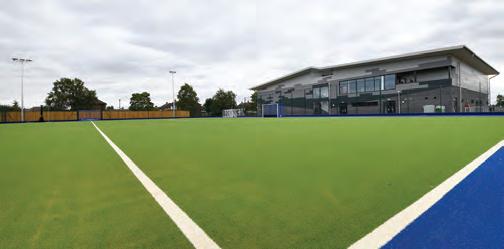













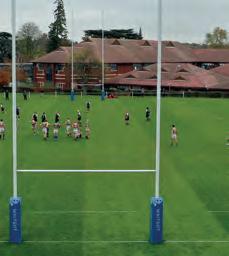









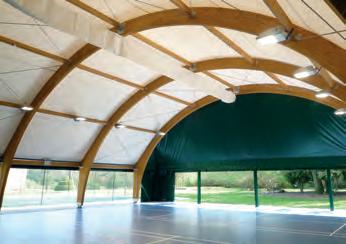








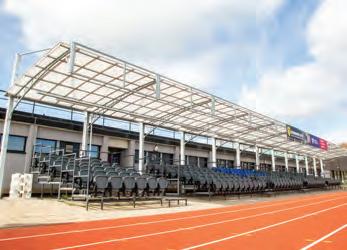











































































































































































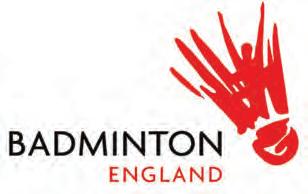












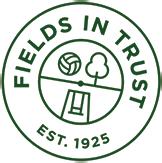

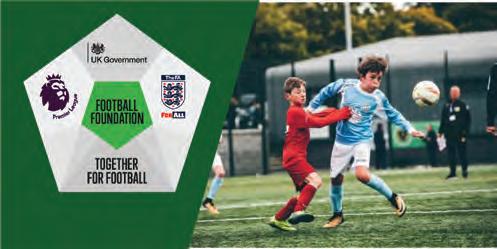
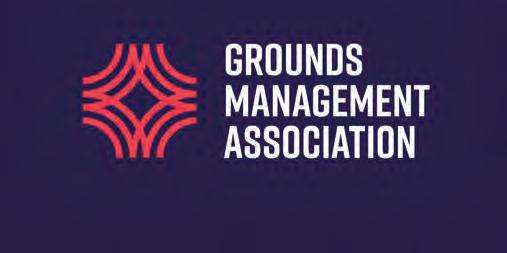







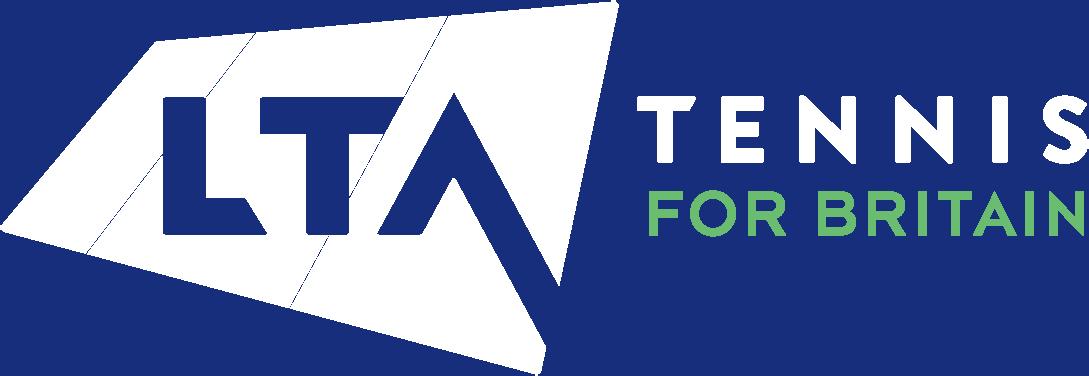



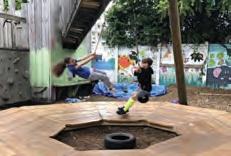


























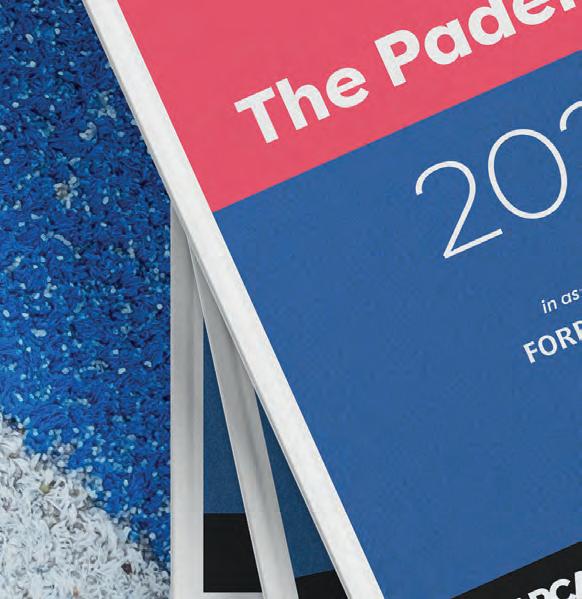





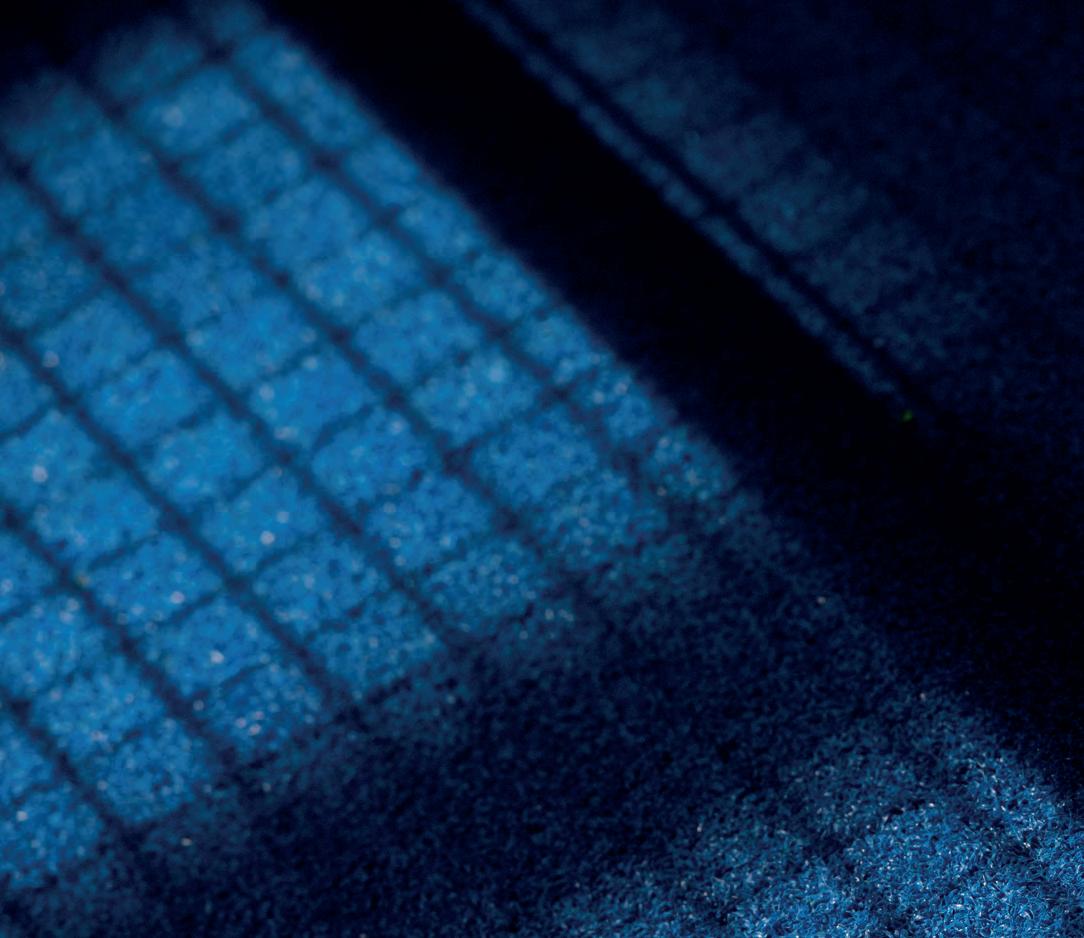

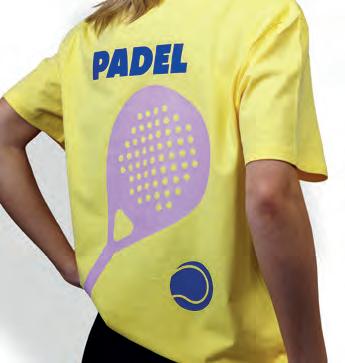

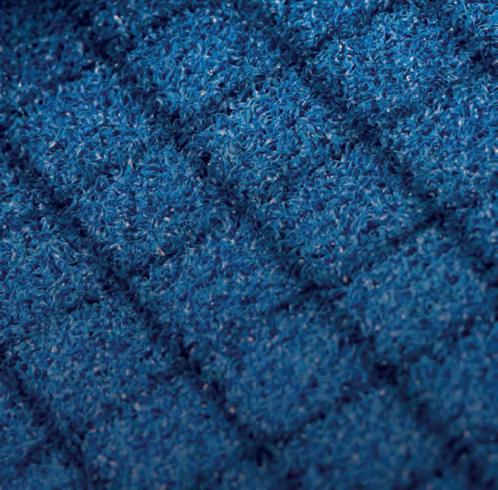













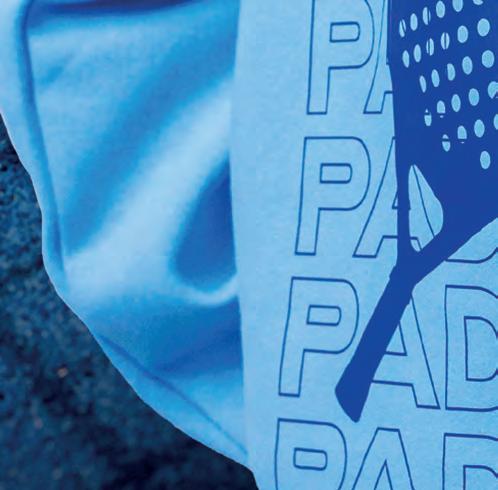

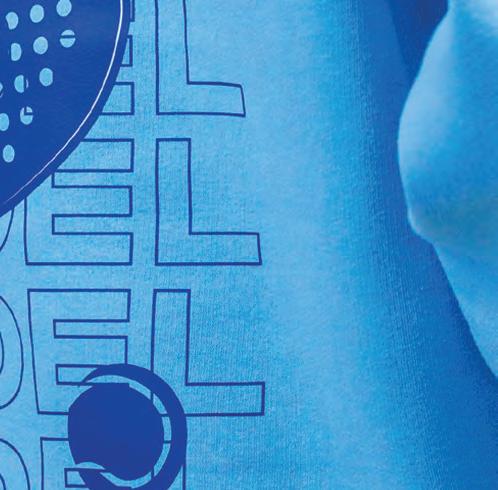








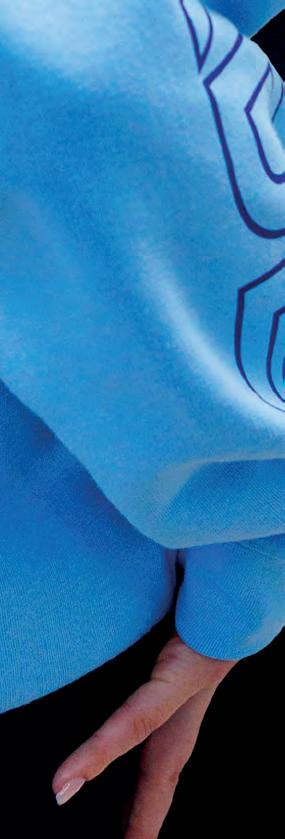








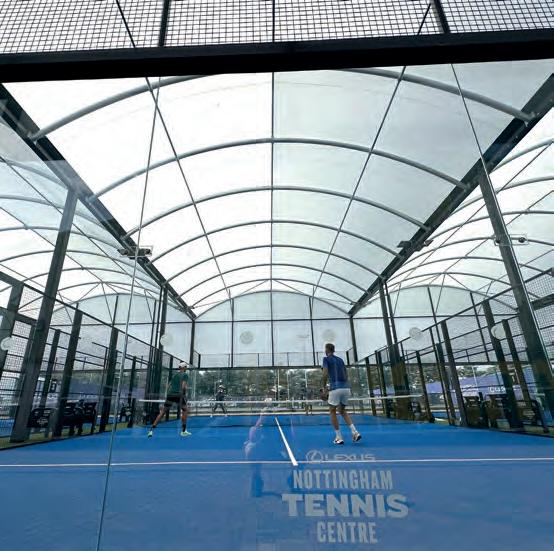





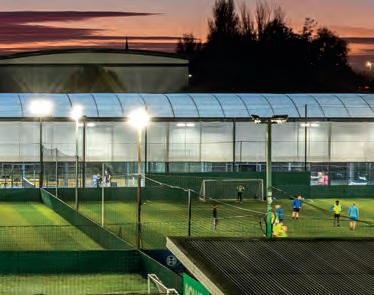
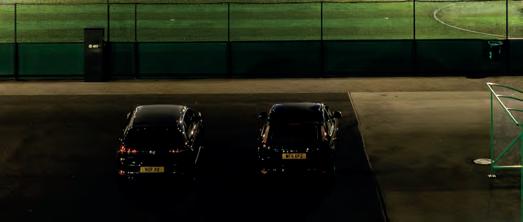


‘At every step of the development we felt assured that the advice, technical specifications and delivery of Fordingbridge’s product would be to the highest standards. The finished canopies not only look amazing but have received excellent feedback from our players.’
Carole Naunton, Director, West Worthing Tennis Club

‘We’d highly recommend a Fordingbridge canopy for your padel courts.’
Freya Tringham, Head of Padel, Powerleague

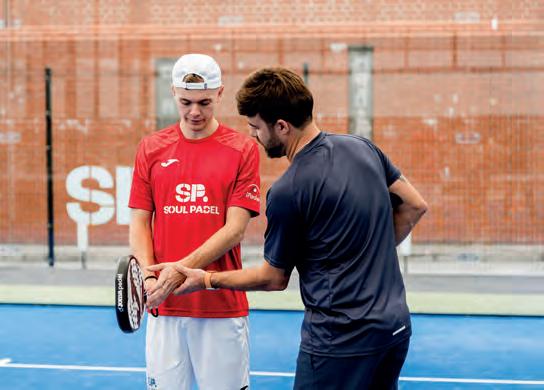




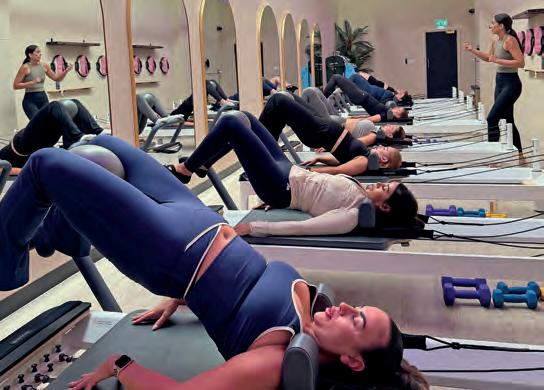


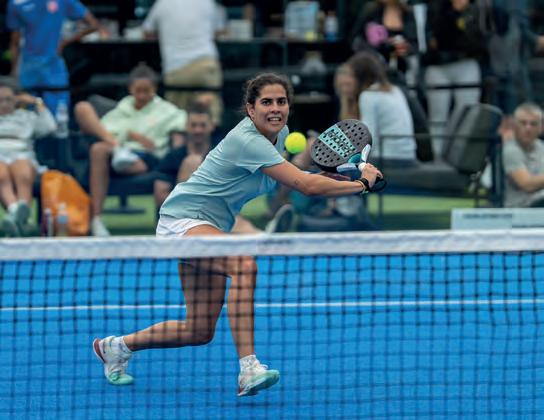

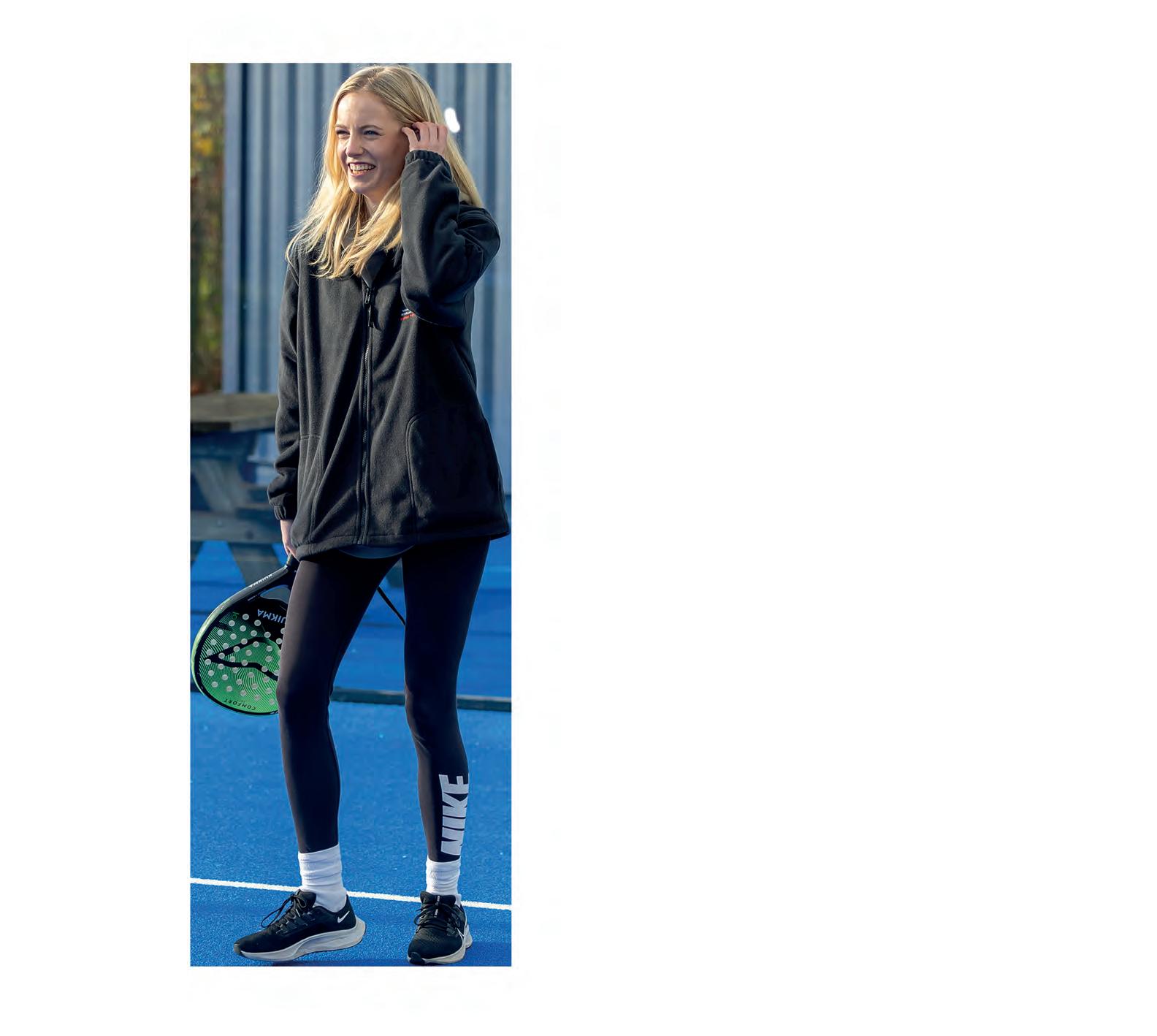

John Challinor
Publisher
PadelNation
john@nationmedia.uk

Colin Corline
Technical Lead SAPCA
@SAPCA

Lee McLaughlan Founder Sweetspot Communications

Tom Walker Editor
PadelNation
tom@nationmedia.uk
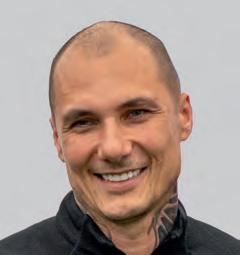
Fabian David Founder Britain Padel Tour

Dave Stalker
Board Advisor
Soul Padel
@DavidStalker
PadelNation is at the heart of the UK’s fastest-growing sport. With new courts, clubs and investors entering the market every month, we’ve created the go-to publication and news website for operators, developers, investors and stakeholders looking to succeed in padel. PadelNation is published three times a year as a standalone title, with each issue also included within SportsNation. In addition to this, the annual Padel Book provides the most comprehensive industry guide - covering design & build, management, operations and maintenance - and developed in partnership with SAPCA, the LTA and leading padel specialists.






Sport Wales is investing £3.3m of Welsh Government funding into 37 projects to improve sports facilities across Wales.
£2.8m of the funding will support grassroots sport, while around half a million pounds has been allocated to high performance sport.
The grants have been made possible thanks to a total of £10m in capital funding from the Welsh Government for 2025 – 26. Details will soon be announced about how the remaining £6.7m will be invested.
A large chunk of the investment will be used to making local authority-owned leisure centres more energy efficient and sustainable.
One of the largest single grants will see £288,000 being invested in order to support the growing popularity of padel.
Tennis Wales will use the funding towards the conversion of an outdoor court to three covered,

Surge’s coaching programme is

LED-floodlit padel courts at the Swansea Tennis Centre. This is part of a bigger development involving the resurfacing of four indoor courts and the upgrade of three other outdoor courts to clay.
Sport Wales CEO Brian Davies said: “We want every person in
Wales to be able to access the sport and physical activity they desire. Regular investment in better facilities is an important step towards achieving that.
“We’re particularly pleased to have been able to help safeguard the future of numerous leisure centres.”
Surge Padel has made a commitment to developing young players and inspiring the next generation of players. Its junior coaching programme is designed to nurture skills, confidence and a genuine love for the game – from the very first session through to competitive play.
“We’ve already seen incredible success stories, including Travis
Barber from our Harrogate club, who proudly represented Team GB at the Junior FIP World Championships in Spain this year,” a spokesperson for Surge said.
“Watching his journey from local coaching sessions to the world stage has been a huge inspiration for our community and a reminder of what structured, supportive coaching can achieve.”

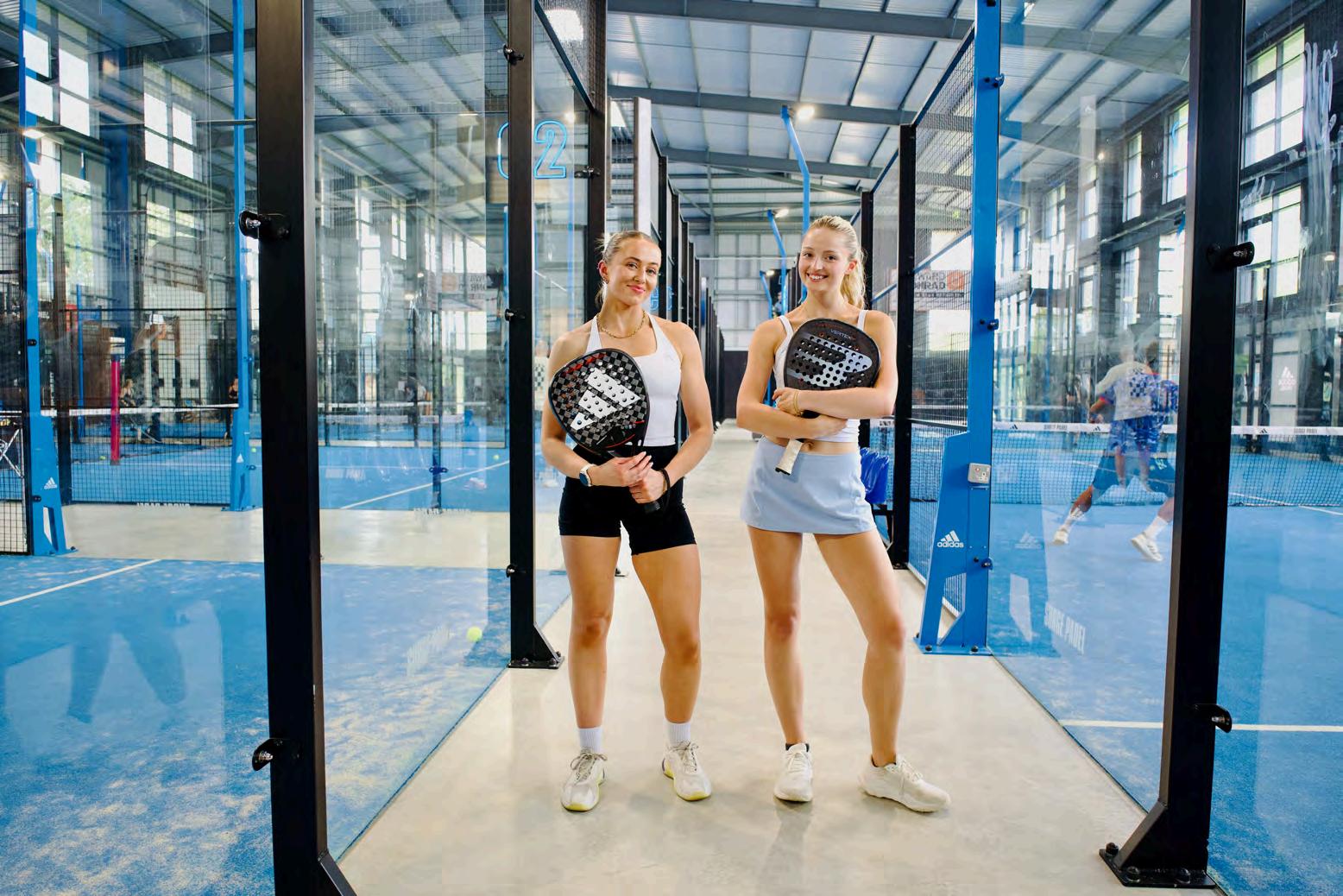

SurgePadelisexpandingacrosstheUK, partnering with golf, leisure, rugby, football and tennis clubs, plus large venues.Knownforpremiumfacilitiesand community-focused coaching, Surge helps venues tap into the booming demandforpadel.
Forpartnershiporpropertyopportunities, contactrich.wingfield@surgepadel.co.uk
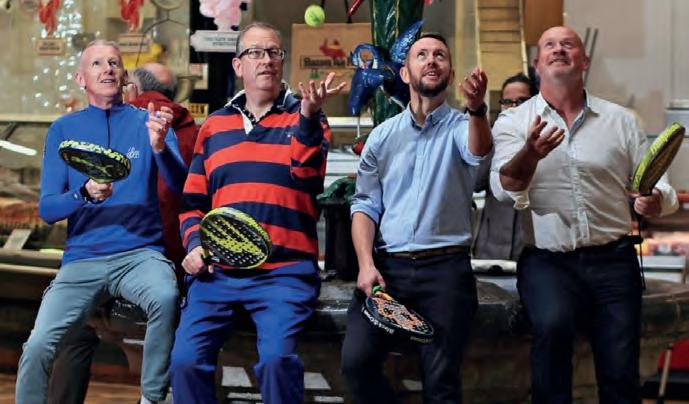
Padel 100, Ireland’s fastestgrowing padel operator, has recently announced the launch of a €5 million raise under the Employment Investment Incentive Scheme (EIIS) to fund a rollout that will see 300 courts installed nationwide by December 2027. Early participation of investors is being rewarded with investments completed before 15 November 2025 qualifying for 50% EIIS income tax relief, and investments from 16 November 2025 (the date Padel 100 begins trading) qualifying for 35% tax relief. Installations are planned at a
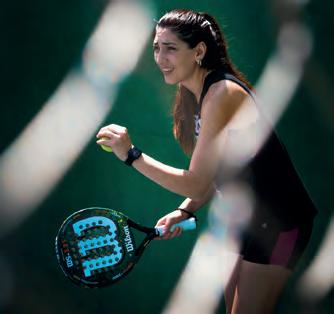
rate of 10-12 courts per month, with 100 new courts estimated by April 2026, with more than 40 venues already confirmed. Padel 100’s rollout is underpinned by strategic partnerships with Acenta Group, Playtomic, and NXPadel, bringing world-class construction, booking technology and materials to Ireland’s booming padel scene.
Padel 100 CEO, Ben Keohane commented: “We’re not talking about ideas on paper, we’re delivering with a groundbreaking initiative that signals a transformative moment in Ireland’s padel journey.”
Lucra Sports is teaming up with No Strings – a new padel-club concept co-founded by British entertainment entrepreneurs, Dov Penzik and Charlie Myers – to launch its tech-driven rewards platform into the sport.
Lucra’s platform at No Strings will enable players to compete in head-to-head matches, tournaments or group play – and win cash, prizes or sponsored goods instantly.
“Padel is exploding worldwide, yet technology is only just beginning to amplify the on-court fun,” said Michael Madding, chief operating officer at Lucra Sports.
“By partnering with No Strings’ computer-vision scoring, we turn every rally into a trackable datapoint and every friendly wager into a friction-free settlement – no spreadsheets, no IOUs. It’s the perfect launchpad for Lucra’s expansion into racket sports, where we can plug directly into existing infrastructure to unlock new revenue streams while adding to the play experience.”
LTA has announced the inaugural LTA Padel National Championships. The launch of the event is seen as a landmark in the growth of padel into a major sport in the UK.
The tournament will be held at Rocket Padel in Bristol from 4-7 December 2025, bringing together the top British junior, open and
senior padel players to compete for the title of national champions.
LTA’s Head of Padel, Tom Murray, said: “The event will bring together top talent across four age categories for both men and women, with the chance to compete for national titles, ranking points, and prize money, all on home soil.”

In July, the LTA marked a significant milestone in the development of padel across Great Britain, announcing that more than 1,000 courts are now available across 325 venues nationwide. Since taking over the governance of the sport in 2019, when just 68 courts existed, padel has experienced rapid growth and is now recognised as one of the UK’s fastest-growing sports. Annual growth has been consistent, with the national total increasing to 87 courts in 2020, 150 in 2021, 220 in 2022, 350 in 2023 and 763 by the close of 2024.
This upward trajectory reflects both rising demand and strong strategic focus from operators and investors. To support the sport’s infrastructure, the LTA and LTA Tennis Foundation have allocated more than £6 million to padel development to date, including £4.5 million for the creation of 80 courts at 42 venues. Facilities span a wide operating mix, with a clear commitment to improving access for new and diverse audiences, particularly through public-sector projects in underserved communities. Alongside the UK Government’s Department for Culture, Media and Sport (DCMS), the LTA is progressing plans for 40 covered, community-focused tennis, padel and multi-sport hubs to enable year-round play on publicly owned sites. More than 75% of existing padel venues are already delivering community outreach, strengthening local engagement and participation.
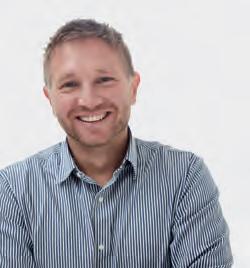

Recently, the LTA announced the inaugural LTA Padel National Championships, a landmark event marking a significant milestone in the growth of padel as a major sport in Great Britain. The tournament will be held at Rocket Padel in Bristol from 4-7 December 2025, showcasing top British junior, open, and senior padel players to compete for the title of national champions.
As padel continues its rapid rise across Great Britain, LTA, the sport’s national governing body, provides an end-of-year update on the latest developments in




“This year has been truly monumental for padel in Britain. The LTA has adopted a more agile approach, accelerating progress and helping to establish the foundations for long-term success.


“We’ve focused on building the infrastructure to support player growth, workforce, and a clear pathway for junior and performance players. We’ve also focused on bridging the gap with the private sector, to ensure the sport grows in harmony across all areas. How we continue to shape the pathway for the next generation will define the sport’s future — and I’m confident that padel in Britain now has a bright and exciting journey ahead.”







Great Britain’s performance players have enjoyed a period of significant progress in recent months, with teams at junior, open and senior levels showcasing promising development on the global stage. In September, the GB Junior Padel Team travelled to Costa Daurada, Spain, to compete in the FIP Junior World Cup. While both the boys’ and girls’ squads narrowly missed out on qualification for the main draw, the event delivered what the LTA’s National Performance
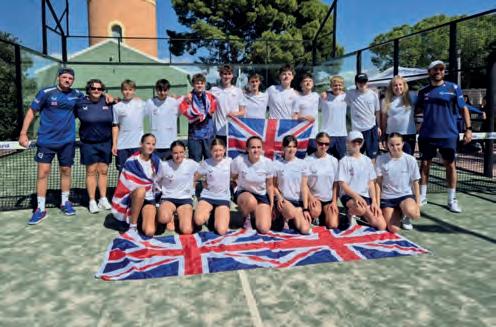
In October, ahead of the FIP Euro Padel Cup Final 8, the LTA hosted the inaugural Padel Advisory Group (PAG). Established earlier this year, the PAG is designed as a collaborative forum, enabling open dialogue and informed decision-making as the sport scales nationwide.
The group will act as a strategic sounding board, shaping priorities across participation, competition, performance pathways, and workforce expansion. To support this mission, the LTA has appointed six prominent figures from across the British padel ecosystem. Their collective expertise will help steer the next phase of the sport’s development, ensuring padel’s rapid growth remains inclusive, commercially sustainable, and firmly rooted in the needs of the community it serves. Meeting several times a year, the group will help ensure Britain lays the foundations for a scalable, commercially sustainable future for padel.
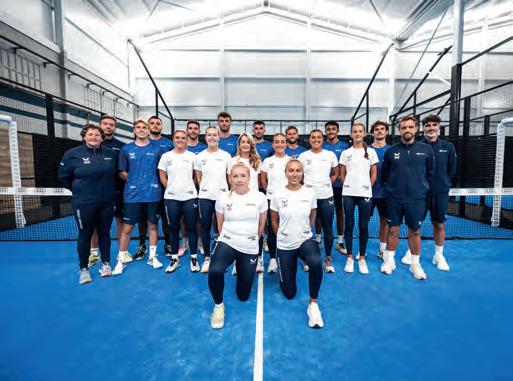
Most recently, Great Britain took a further step forward at the FIP Euro Padel Cup Final 8 in La Línea de la Concepción, Cádiz. Both the men’s and women’s teams finished third in their respective groups, each closing out the event with a confidence-boosting final victory. The women’s squad made history with Great Britain’s first-ever win at a Final 8 competition, overcoming Germany 2–1, while the men defeated Sweden 2–1. Also of note, in September, GB number two, Catherine Rose became the second British padel player ever to break into the top 100 of the FIP world rankings, joining Aimee Gibson.
The six members selected to be on the LTA Padel Advisory Group are:
With experience at Octagon and Give It Your Max, Abi combines her charity work introducing young people to sports with her background as a performance padel player, offering insight into player engagement, event management, and community outreach.
LTA Lead Tutor and Assessor, Angela brings hands-on expertise in coaching education, venue operations, and grassroots programme development.
Carl Heimdal
Co-founder of Rocket Padel, Carl drives UK facility expansion and navigates planning and business rate challenges, providing expertise on infrastructure and sustainable growth.
Enrique Buenaventura
Co-founder of Formula E and creator of the Hexagon Cup, Enrique brings global event experience and strategic insight into promotion and commercialisation of padel.
Pep Stoner
A key figure in domestic padel, Pep focuses on growing women’s participation through tailored competitions, with expertise in inclusivity, community building, and event logistics.
Sandy Farquharson
Founder of The Padel School and LTA National Performance Coach, Sandy blends elite coaching experience with global outreach and commentary, offering deep insight into player development and performance pathways.
Baseline – a collaboration between sports event specialists, 19th Hole, and student event company, Fishies, is an initiative designed to bridge the gap between padel venues and the student communities in their cities.
Baseline delivers immersive, high-energy padel tournaments featuring live DJs, cocktail bars, and partnerships with local and national brands, such as Red Bull, Slazenger Water and emerging padel-focused businesses.
The aim is to create “genuine connections” with a vibrant demographic that can help venues fill those quieter daylight hours.
In October, Baseline hosted its debut event at Rocket Padel Bristol, welcoming more than 60 players.
Padel was played, tracks were spun, cocktails were poured and it all culminated in a grand final as spectators cheered two pairs

Baseline delivers immersive, high-energy padel tournaments
battling it out for a cash prize.
Like any pilot, it brought lessons as well as successes for the Baseline team who are looking to grow, bringing Baseline to student hubs across the UK and spread their message of “Rally a Rave”.
“Our strapline is ‘The ultimate student padel party’,” Baseline said in a statement.
“We are introducing an all-in-one event, featuring both social and elite competitions, as we search for the cities’ best padel players.”
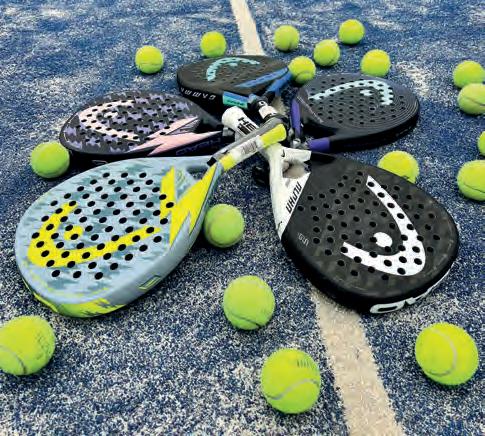
Pulse Padel has secured planning permission for two sites in the East of England.
Peterborough City Council has approved plans for a padel venue featuring four covered padel courts, with floodlights, at Peterborough One Retail Park off Eye Road.
Meanwhile, Huntingdonshire District Council has approved plans for a centre housing three padel courts to be built on land near Banks End, Wyton, Huntingdon.
Pulse Padel currently operates two padel facilities in Kent – at Chatham and Tonbridge.
The family-owned company is looking to expand its operations nationwide and has plans to open sites in Bristol, Leicester, Dartford and Willington, Bedfordshire.








Soul Padel has secured approval as a supply partner on the UK Leisure Framework (UKLF), following acceptance as a partner by Alliance Leisure. The milestone will enable Soul Padel to play a key role in shaping the future of sport and leisure across the UK, with a focus on making padel accessible to more communities.
The UK Leisure Framework, managed by Denbighshire Leisure Limited (DLL), provides local authorities and public sector organisations with a streamlined route to develop and deliver leisure facilities. Through the framework, councils undertaking development projects that include padel will now have access to Soul Padel’s expertise in building high-quality courts and creating inclusive playing environments.
Alliance Leisure is the UK Leisure Framework’s development
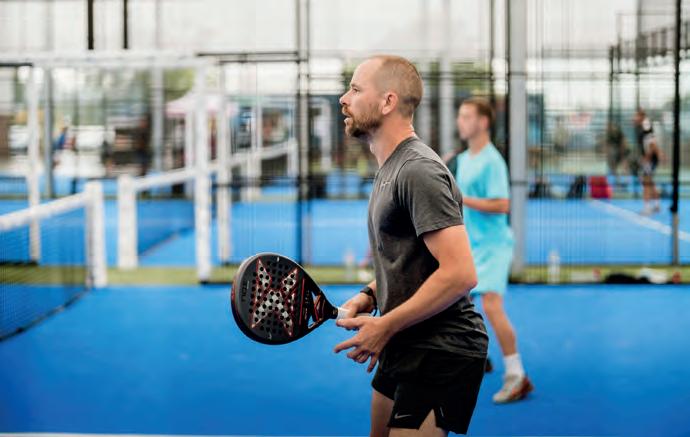
partner and has a track record of transforming hundreds of leisure spaces across the UK.
From refurbishing community sports centres to delivering stateof-the-art multi-use complexes, outdoor pitches, and play areas, Alliance Leisure provides a full-
service approach, from strategic planning through to project completion and beyond.
Mark Hewlett, CEO and Founder of Soul Padel, commented: “This approval marks an important step for Soul Padel in our mission to bring padel to communities across the UK.”

The partnership between Playtomic & Premier Padel started in 2024
Playtomic, the world’s largest community of racquet sport players and clubs, has renewed its collaboration with Premier Padel, the official professional padel tour, extending the partnership through the 2026 season. First launched in 2024, the collaboration positions Playtomic as the global community app for Premier Padel, bridging the gap between the elite professional circuit and grassroots players. Through the partnership, Playtomic will continue to bring the excitement of professional padel to local communities, creating unique opportunities for players to participate in amateur tournaments, activations and competitions connected to Premier Padel events around the world.
It will also include a wide-ranging selection of innovative fan and player experiences.
Understanding and engaging your catchment is key to the successful launch of your new padel facility – and we can help.
Our reports and maps provide detailed analysis of the demographics and preferences of your local population.
■ How many people live nearby?
■ Who are they and what is their lifestyle?
■ Where are the population clusters near your site?
■ What are the dominant Mosaic groups by postcode?
For busy, buzzing courts, this is the insight you need.
Unlock the potential of your catchment and serve up padel success! Contact natalie@leisuredb.com to learn more.
Powerleague has opened four padel courts at its Edinburgh Sighthill facility, following a £850,000 investment. The canopied courts will offer 60- and 90-minute sessions for both beginners and experienced players, alongside introductory lessons and social events, with prices starting from £7 per person.
The padel centre, which will also offer equipment and racket rental, will add to the multiple five-a-side and seven-a-side football pitches at the venue.
Powerleague Edinburgh Sighthill is the third and final Powerleague club in Scotland to have padel courts installed this year, after the smallsided sports provider invested £2.2m in its Scottish padel infrastructure.
A total of 11 padel courts have now been installed across the Paisley, Portobello and Sighthill clubs.
The investment in Scotland is part of Powerleague’s wider £14m

expansion plan to deliver 76 padel courts across the UK by 2026.
John Gillespie, CEO of Powerleague, said: “Powerleague Edinburgh Sighthill is already a vibrant centre for small-sided football, and we’re excited to expand our offer with the
introduction of padel. It’s quickly becoming a go-to activity for staying active and social, as it’s fast-paced, easy to learn, and ultimately, a lot of fun.
“Earlier this year, we launched padel at our Portobello club, and the response has been phenomenal.

Advantage Padel has revealed plans to open a racquet sports hub on the south coast of England.
The padel centre operator, which currently has two sites in Nottingham and Kingsley, Hampshire, is set to open a large multi-use centre with 13 courts in Mudeford, Dorset.
As well as eight indoor padel courts and five dedicated pickleball courts, Advantage Padel Centre Mudeford will house a health club, wellness and recovery zones, a café and coworking spaces.
“The Mudeford hub will be more than a place to play racquet sports – it will be a vibrant hub for fitness, fun and community connection,” Advantage Padel said.
“Advantage Padel isn’t just about building centres – we’re building a movement.

























Work is underway on a new padel and pickleball centre in Farnham, Surrey, following a lease agreement between Rainier Developments and Hurlands Pickleball + Padel Club.
The £2.75m project will provide 13 indoor courts – 10 for pickleball and three for padel – at the Farnham Trading Estate.
Set to open in January 2026, the plans also include social spaces, yoga, Pilates studios, treatment rooms, changing facilities and a club shop.
Waverley Borough Council granted planning permission to Hurlands Pickleball + Padel Club in 2024. The council owns the building at the Farnham Trading Estate, with Rainier leasing the site on a long-term basis.
Councillor Mark Merryweather, Waverley Borough Council’s portfolio holder for property, said: “This is an exciting new investment for the borough, bringing fresh
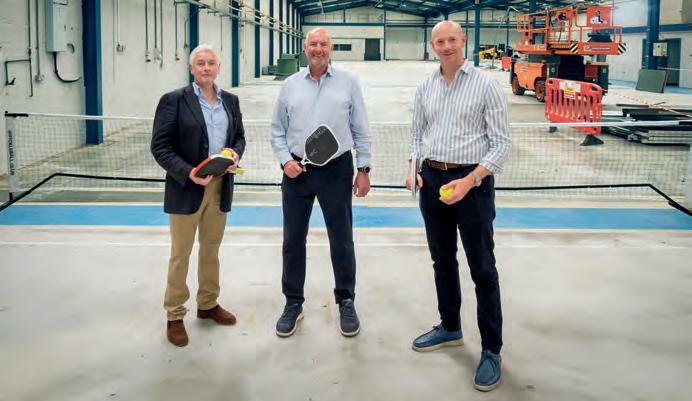
The £2.75m project will provide 10 courts for pickleball and three for padel
opportunities for residents and local businesses, while supporting health, wellbeing, and active lifestyles.
“Once completed, the new centre will be a great asset for Farnham, offering residents the chance to try two increasingly popular sports, connect with others, and stay
active in a modern, welcoming space. We’ll continue working closely with Rainier Developments and Hurlands to support this fantastic project and help it bring real value to our community.”
The Farnham club will be open to players of all ages and abilities.

Pure Padel is set to open a large indoor padel centre in central Birmingham in January 2026.
Pure Padel Birmingham, located in the upcoming Jewellery Quarter, will be marketed as Birmingham’s first city centre indoor venue.
In a nod to Birmingham’s rich automotive and car manufacturing history, the venue will repurpose an old Land Rover Jaguar engineering plant into a club featuring five doubles courts and two singles courts.
The facility will also offer a food and beverage space, social areas and changing rooms.
Sammy Arora, Founder and Managing Director at Pure Padel, said: “The Jewellery Quarter is an upand-coming area, and we’re excited to contribute to its regeneration by converting this former Land Rover Jaguar plant into a premium indoor padel facility.”

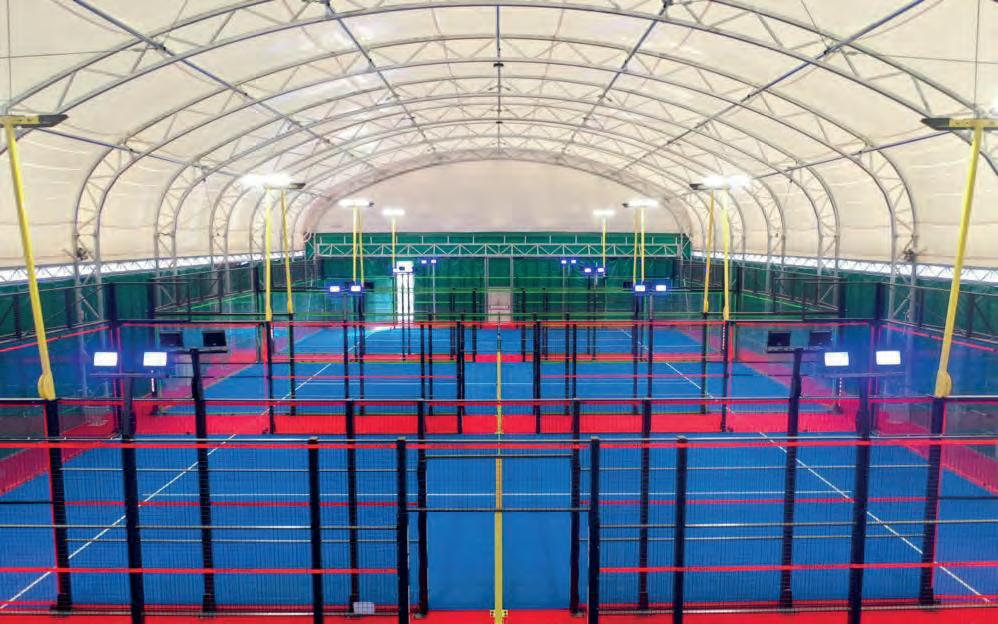
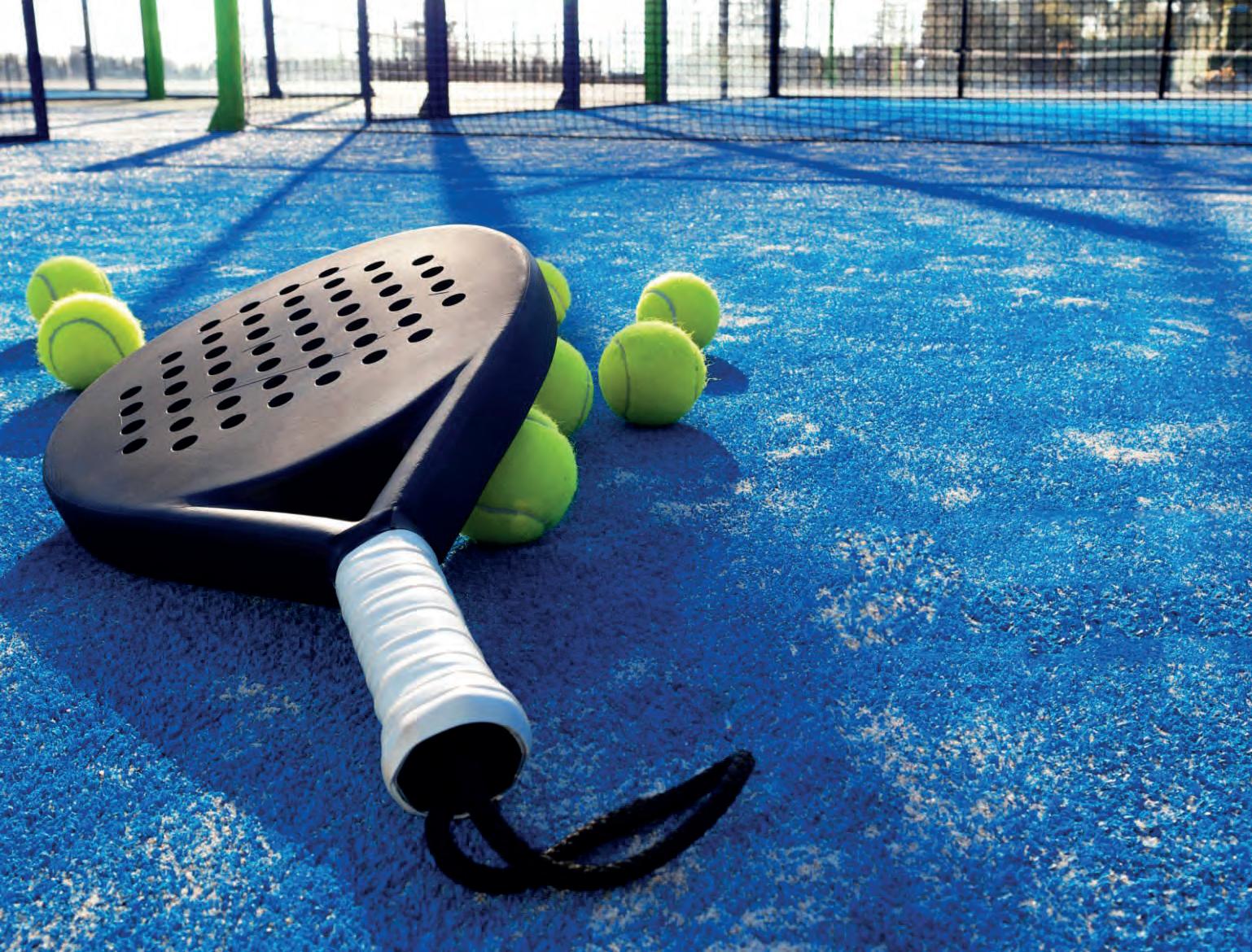


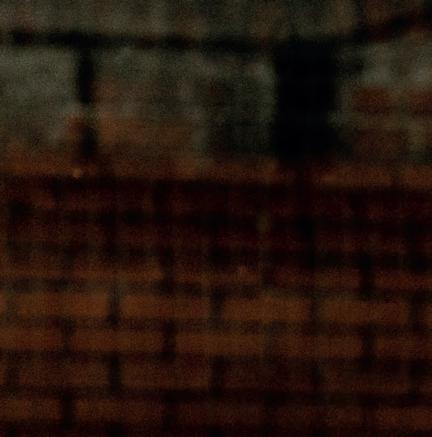


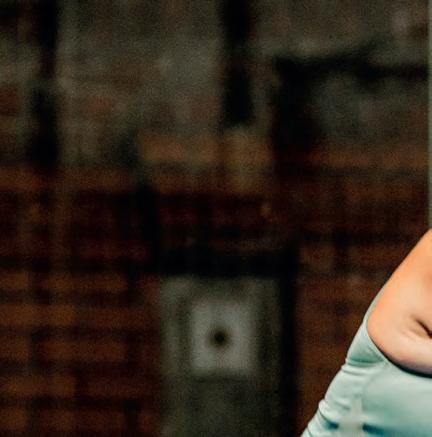
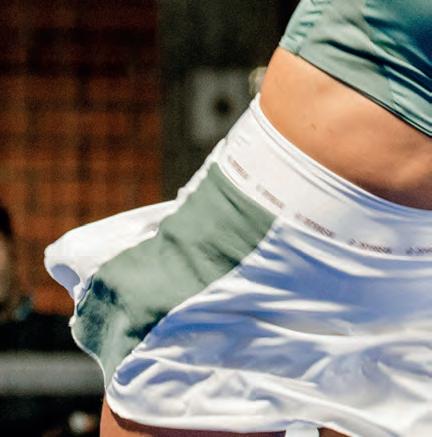
Physical activity sector pioneer and Soul Padel board advisor, David Stalker, explains why padel holds the key to building a more active, connected nation

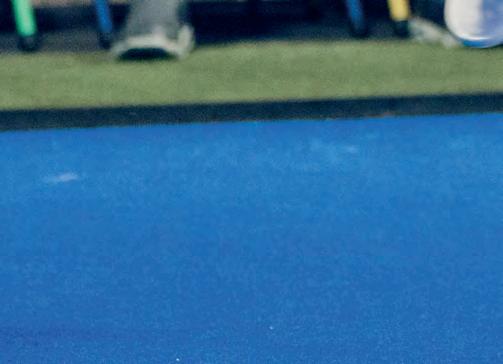
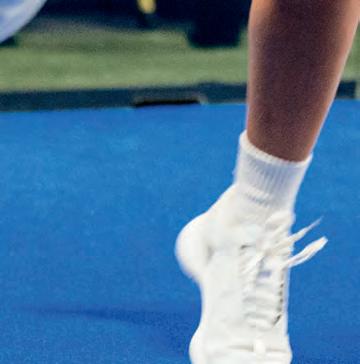
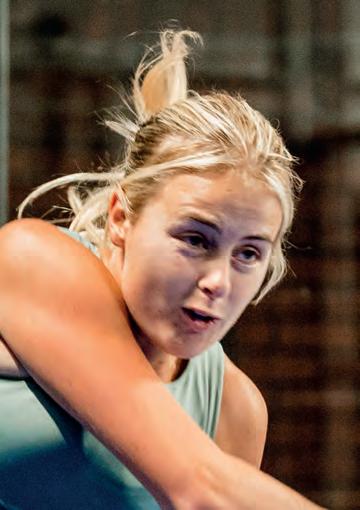



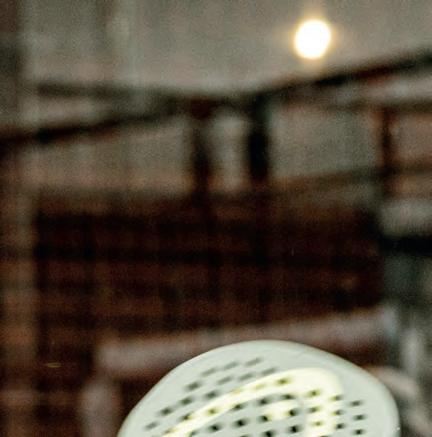
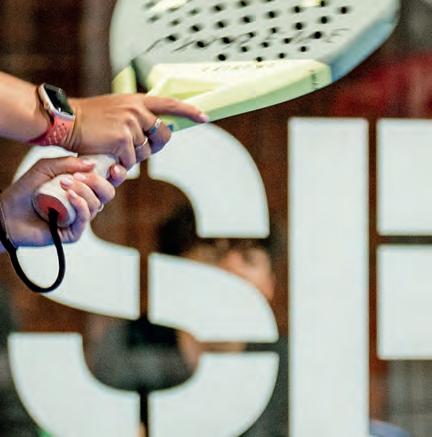


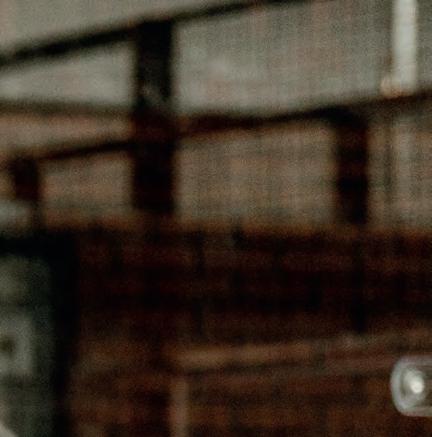

fter more than three decades working across health, fitness and leisure, one question continues to define my career: how do we get more people, more active, more often?
Despite progress in many areas, the UK’s inactivity crisis remains one of our greatest collective challenges. It’s not just a health issue — it’s a social one. The impact reaches far beyond the NHS balance sheet, affecting wellbeing, productivity and community cohesion. For all the campaigns and initiatives that have come and gone, many people still feel that traditional sport and fitness simply aren’t for them.
To change that, we need to offer activities that are instinctively inclusive, social and joyful — where the first step feels easy and the barriers to entry are low. Which is why I believe padel could be one of the most powerful catalysts we’ve seen in decades.
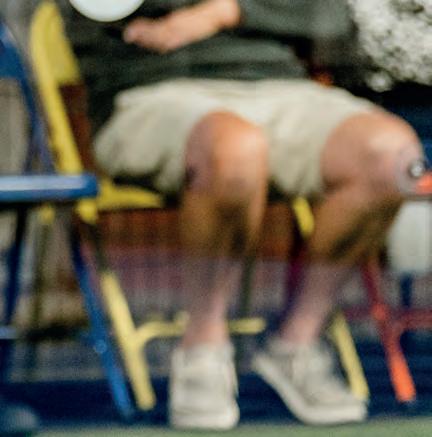

I first encountered padel in Portugal a few years ago. What struck me immediately wasn’t just the pace and energy of the game, but the diversity of the players. Four people of completely different ages, abilities and backgrounds, all laughing, competing and connecting. It was fast, tactical and fun — but above all, it was social.
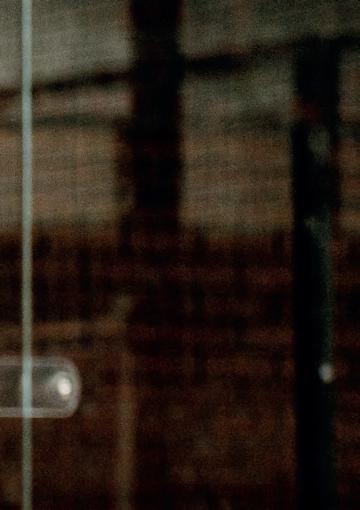
That’s the magic of padel. It doesn’t feel like exercise in the traditional sense, yet it delivers all the physical and mental benefits of movement. It attracts people who might never set foot in a gym or join a running club. It’s accessible, engaging and easy to pick up — everything a mass participation activity needs to be.
According to the LTA, more than 400,000 people played padel in Britain in 2024, up from just 15,000 in 2019. Awareness has nearly doubled year-onyear, with almost half of UK adults now familiar with the sport. Behind those statistics lies something even more significant: genuine momentum.
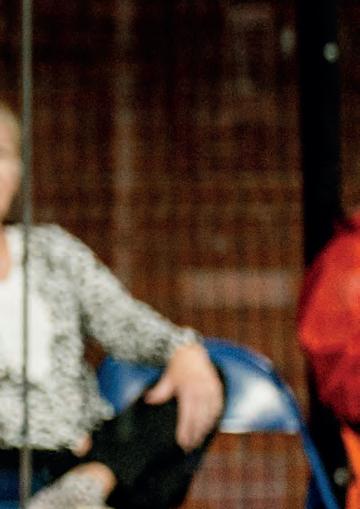
But the success of padel won’t be defined by the number of courts we build. It will depend on the kind of experiences we create around them — the environments, programmes and partnerships that turn curiosity into commitment.
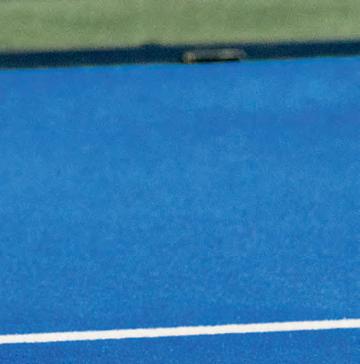
That’s where I’ve been particularly encouraged by the work of Soul Padel and others who see the sport as a community platform rather than a commercial product. Their initiatives — such as Soul Timers for over-50s, Soul Sisters for women, and What’s That Racket? for schools — are designed to reach people who’ve stepped away from sport or never quite felt part of it in the first place.
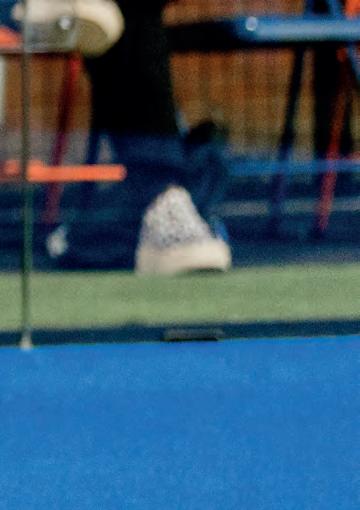
The results speak for themselves: older adults rediscovering confidence, women finding inclusive

Padel sits at the intersection of everything our sector has been striving for — movement, connection and fun
spaces to be active, and children engaging with movement in a way that feels fresh and fun. It’s a reminder that participation grows not through marketing campaigns, but through belonging.
The power of partnership
Padel’s greatest strength may lie in its ability to bridge sectors. Local authorities, universities, and private operators are already seeing the benefits of collaboration.
At Stockport, the Soul Padel facility has quickly become a community hub, with thousands of players returning regularly and forming lasting social networks around the game. Loughborough University has woven padel into student life — blending wellbeing, recreation and competition in a way that reflects how the next generation wants to be active. And in St Helens, collaboration between local government and the private sector has delivered a high-quality public facility directly aligned with local health goals.
Each example reinforces the same point: when we design with inclusion and connection in mind, participation follows naturally — and commercial sustainability follows participation.
The pace of growth is impressive, but more important is the type of growth we’re seeing. Padel isn’t an elitist trend or a passing craze. It’s an activity that brings together different generations, communities and motivations. It can thrive in city centres, campuses and leisure parks alike. And perhaps most significantly, it appeals to people who’ve long felt left out of Britain’s fitness culture.
After 35 years in this industry, I’ve rarely seen a sport that blends accessibility, social value and commercial potential quite so effectively. Padel sits at the intersection of everything our sector has been striving for — movement, connection and fun.
What excites me most isn’t the growth charts, but the sound of laughter from the courts. It’s the conversations between people who’d never otherwise meet, the friendships formed through a shared activity, the simple joy of play. That’s where the real transformation begins.
If we’re serious about building a more active, connected nation, we need to back activities that break down barriers and bring people together. Padel has the power to do that — but only if we approach it collectively.
The invitation is open to local authorities, universities, developers and operators alike: let’s make this movement part of the UK’s longterm active future. Because when people meet, play and connect, the health of the nation improves — and that’s a goal worth chasing.

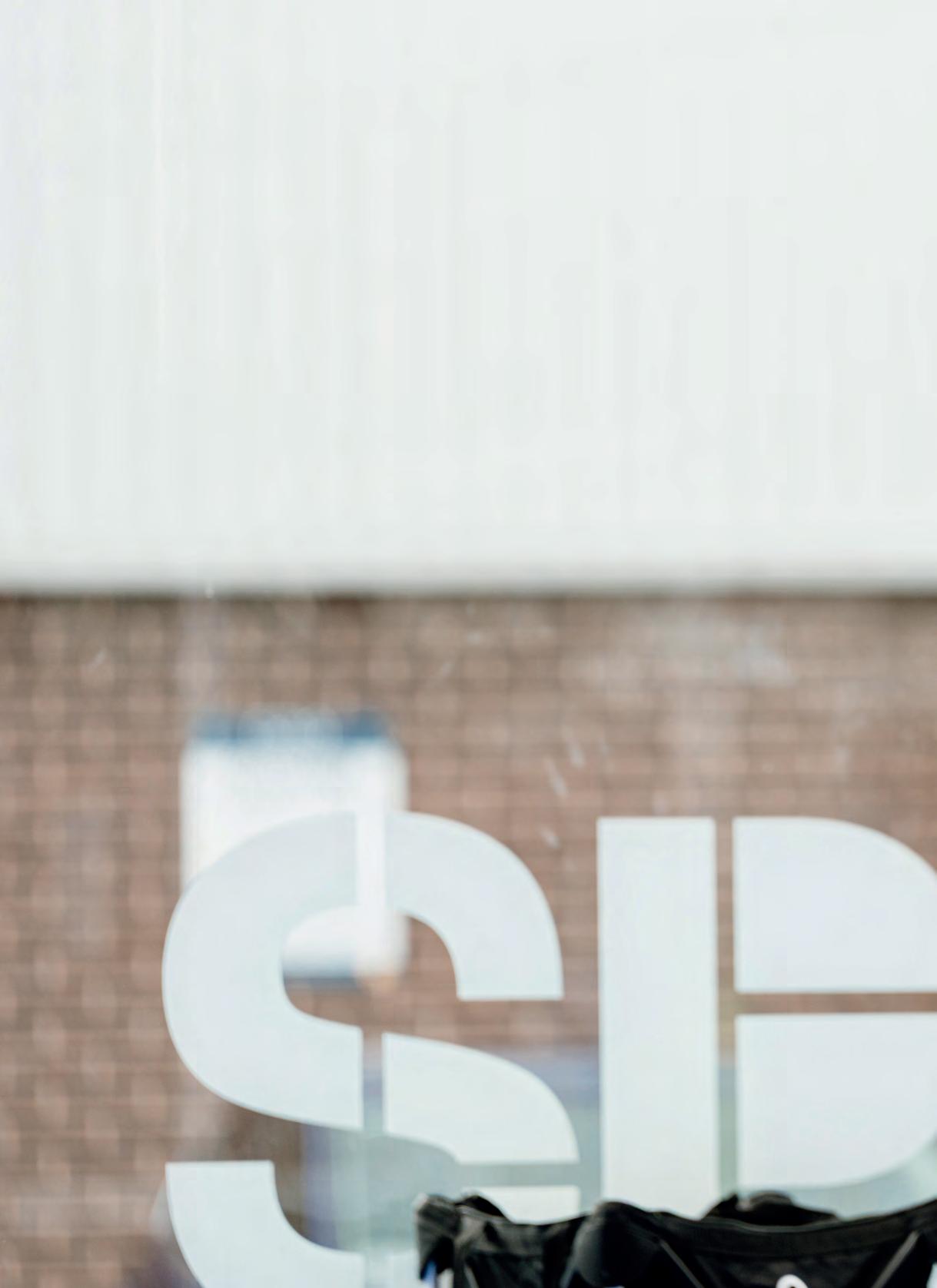
DAVID STALKER has spent the past 35 years working across the sport, physical activity and fitness sector. His career in the industry spans private operators, local authority leisure centres, global suppliers and policy bodies. He joined Soul Padel as board advisor in March 2025, to support growth and expansion. In October 2025, he was also named chair of industry body, ukactive.

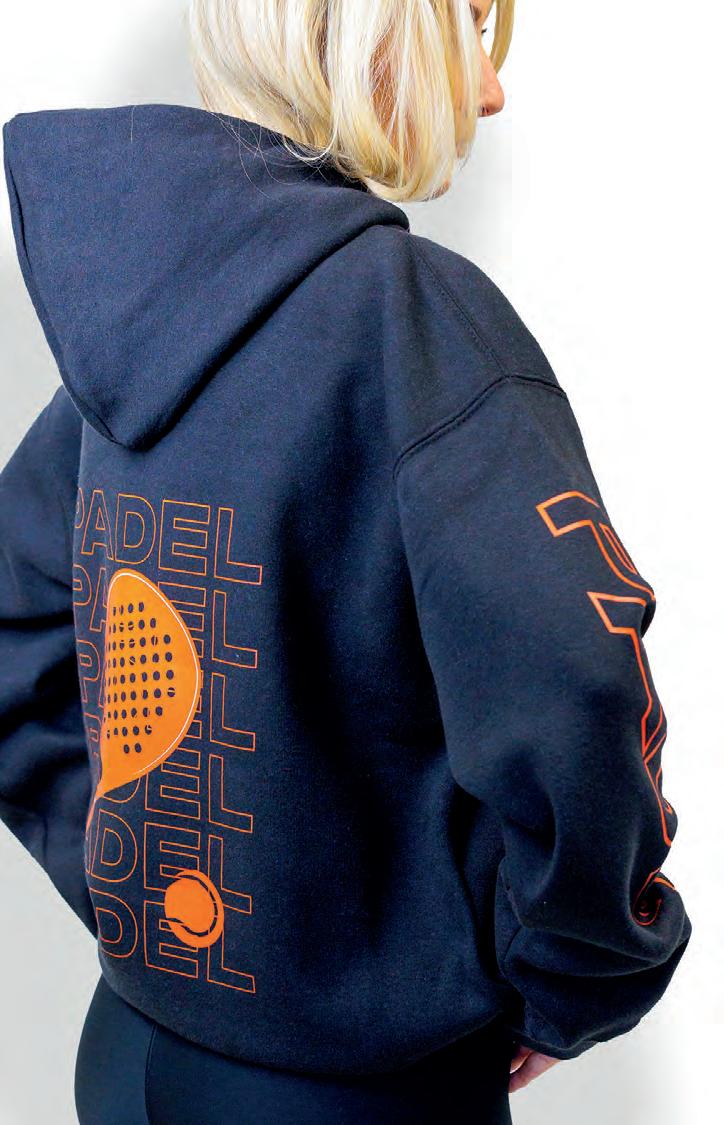
It’s no secret that investing in a padel court can pay dividends. High demand and growing interest in the sport have helped plenty of British operators to enjoy an exceptional year. But the padel court hire business model comes with a capacity problem.
“Once a padel court is fully booked, that’s it. Rental earnings plateau,” says James Taylor of Taylor Made Designs. “To make more money from court hire, you either have to push up your fees or invest in another court. It’s a growing problem for a lot of the operators we speak to. Thankfully, there’s an easy answer to this capacity problem – it’s called secondary spend!”
Taylor Made Designs has supplied the UK’s leisure industry with branded uniform and merchandise since 1993. Over the years, James and his team have helped racquet clubs, golf courses and pools to find new ways to earn money from their existing facilities.
“Secondary spend is all about offering a relevant retail experience to your visitors,” says James. “If you’re a water park, your secondary spend strategy might include selling swimsuits and grip socks to visitors when they arrive. If you’re a theme park or attraction, you might want to sell souvenirs and gifts on the way out. For padel courts, there’s so much potential to drive secondary spend.”
In response to client demand, Taylor Made Designs now offer padel courts three main secondary spend channels:
For padel courts, there’s so much potential to drive secondary spend


Racquet hire & sale:
Taylor Made Designs supplies padel courts with a range of professional grade carbon fibre racquets. Available in both branded and unbranded formats, these racquets are perfect for sale or hire.
Player essentials:
When visitors forget essential items, they often expect to be able to buy water bottles, towels and combination padlocks on site. Taylor Made Designs offer a full range of branded merchandise that can be packaged for vending machines or over-the-counter retail.
Consumer retail:

It adds another string to the bow of padel courts looking to increase earnings
The Padel Collection is an exclusive new off-court leisurewear line from TMD, designed to help UK padel courts drive secondary spend. This bold and beautiful range of premium t-shirts, sweatshirts, and hoodies is designed for padel courts to sell direct to members at strong margins.
“We’re really excited about The Padel Collection,” says James, “We’ve been working on this range for a few months now, and padel fans have really connected with it. It adds another string to the bow of padel courts looking to increase earnings, which is ultimately what secondary spend is all about.”
Discover the Padel Collection – visit www.thepadelcollection.co.uk or call
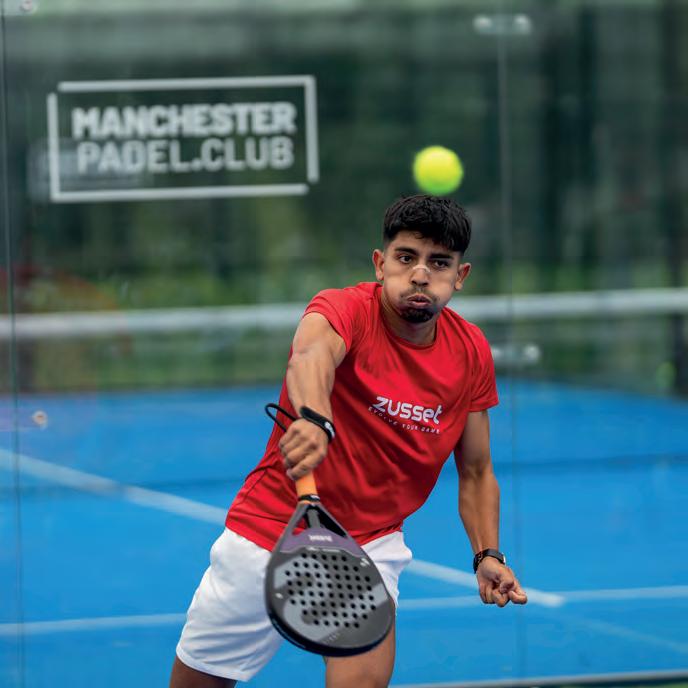
The first-ever Manchester Major earlier this year was a significant event for elevating the professional status of padel in the UK
The Britain Padel Tour (BPT) reached a significant milestone earlier this summer with the launch of the first-ever BPT Manchester Major, an event that redefined professional padel in the UK and showcased the sport on a scale never seen before. Held at Manchester Padel Club from 4 to 6 July, the tournament brought together six elite teams from Premier Padel, several of the top-ranked A1 Padel players and the very best of British professional talent.
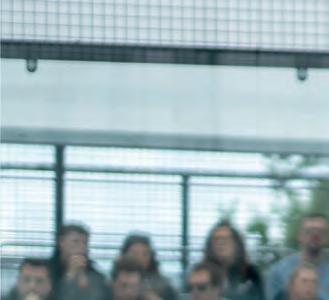
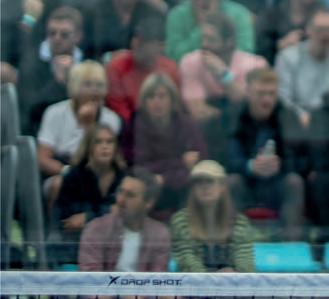
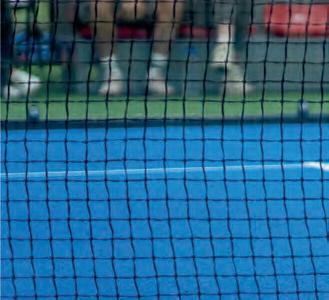
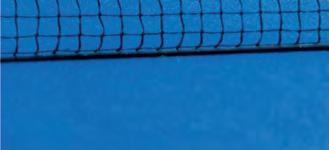



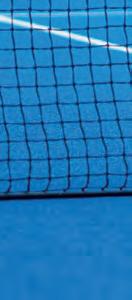
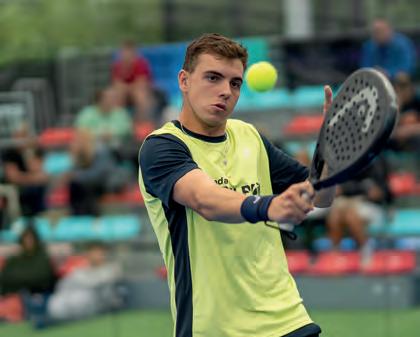

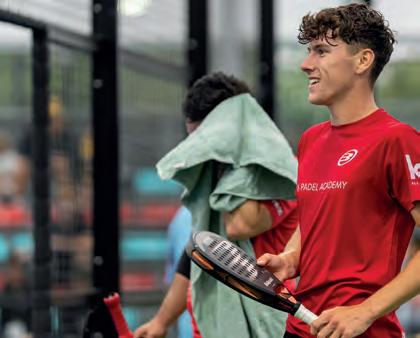



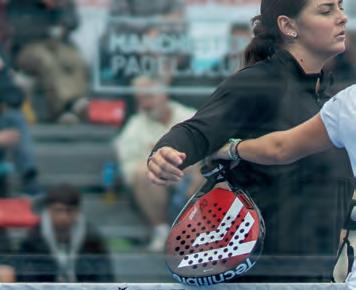







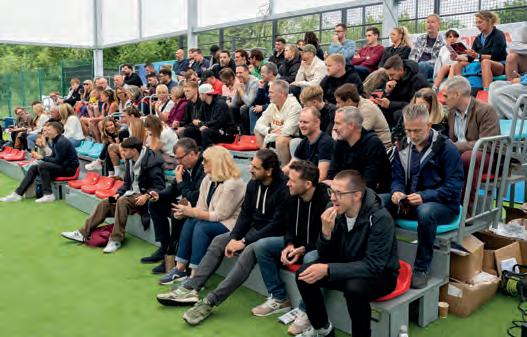


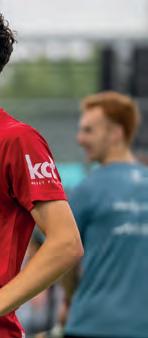
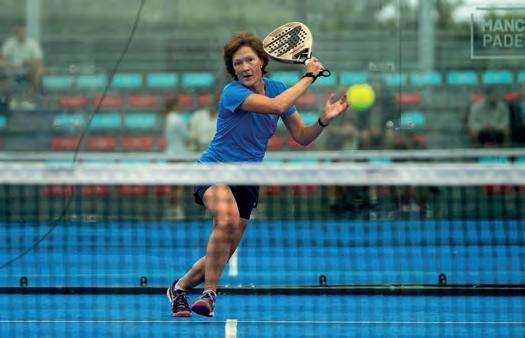



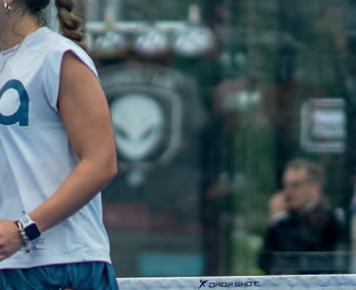


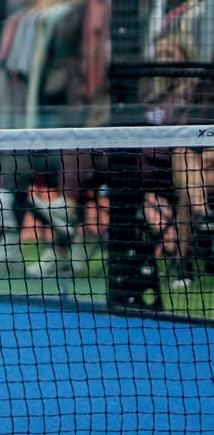
The event showcased the competitive side of the sport on a scale never seen before










For three days, Manchester became the heart of UK padel, hosting the highest level of competition ever staged on home soil. The numbers speak for themselves. A total of more than 800 spectators attended the competition to watch matches and the semi-finals and finals day was a sell-out – a UK first for Padel. Nearly all (90%) of participating players were ranked on international professional circuits, ensuring world-class matches throughout the event.
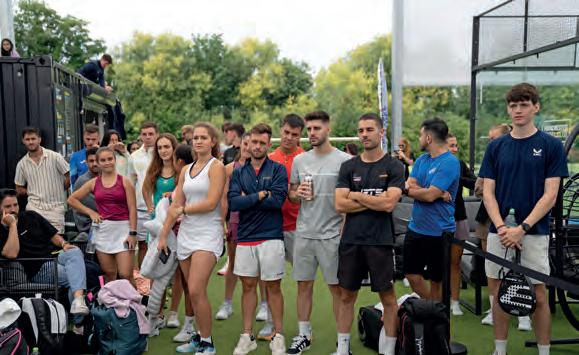


The BPT was founded by Fabian David and Razvan Pasat, who have plans to make the tour fully-professional.
Fabian David said: “Feedback from both players and fans has been overwhelmingly positive, cementing the BPT’s position as the leading national professional padel tour. As the tour continues to break new ground, we are already working on the next big step: transforming BPT into something much bigger starting next season – a bold move set to revolutionise the professional Padel landscape in the UK.”











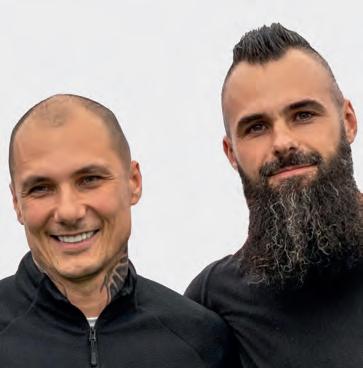




















































Padel Studios in Coventry has partnered with a local fitness entrepreneur to combine two rapidly growing activities – padel and reformer pilates

Padel Studios Coventry was set up based on a simple idea: to bring the world’s fastest-growing sport in the world to the Midlands. Founded by childhood friends and former Ernst & Young auditors, Preet Bains and Aman Choudhury, the site launched with three indoor courts and a vision that extended beyond sport.
“When we looked at the space, we realised that building three courts instead of four gave us
an opportunity to do something different,” says Bains. “Reformer Pilates was already booming in Coventry and worldwide and there was clear synergy between the two activities. We wanted to create a destination that wasn’t just about playing padel but about wellness, community and recovery.”
The 14,000sq ft centre, located at the city’s Bayton Road Industrial Estate, was designed with growth in mind. Drawing on their business backgrounds, Bains and Choudhury wanted to create a commercially

sustainable model by diversifying beyond padel.
“We knew padel would be hugely popular,” adds Bains, “but adding a dedicated Pilates studio allowed us to broaden our audience, drive daytime use of the site and turn the space into a true wellness hub.”
Inspired by a growing trend in Dubai, where padel clubs are integrating Pilates into their facilities, the business partners approached local fitness operators to collaborate. Ramsay Fitness, an established Coventry-based fitness brand with a
loyal member base, was quick to see the potential.
“We loved the concept immediately,” says Jack Ramsay, Director at Ramsay Fitness. “We already had a thriving gym and Pilates business, but the chance to create a dedicated reformer Pilates studio inside a padel facility was completely unique.”
The next stage of the project was to choose a supplier for the Pilates element. For that, Ramsay picked Balanced Body equipment and the Allegro 2 Reformers. Balanced Body worked closely with Bains,

Choudhury and the Ramsay Fitness team to support the installation and deliver an optimal layout.
“The Allegro machines are beautifully engineered and incredibly versatile, which means we can deliver a premium experience for every client,” Ramsay says.
The studio now features eight Balanced Body Allegro 2 Reformers, with Ramsay Fitness managing the pilates business independently from padel through its own booking system. The collaboration has created a sports and fitness hub that serves a diverse demographic, from padel players looking to improve flexibility and strength to Pilates enthusiasts curious about the dynamic sport next door.
“Padel and Pilates might look very different, but they complement one another beautifully,” explains Bains. “Pilates develops the mobility, strength and injury prevention that padel players need, while padel brings a social and competitive element that excites people and keeps them coming back. The crossover has been fantastic.”
Feedback from members has been overwhelmingly positive, with padel players and Pilates clients alike enjoying the convenience and atmosphere of the combined facility. Beyond this, Padel Studios Coventry also offers a Recovery Room providing physiotherapy, sports massage and nutritional
Pilates builds the strength padel players need — padel brings the energy to keep them coming back
support as well as a thriving Bistro Café designed to encourage visitors to stay, connect and join the growing community around movement.
Looking ahead, Padel Studios Coventry is already exploring expansion, and the padel and Pilates combination concept could be part of every future site.
“We see this as the future of fitness,” adds Bains. “People don’t just want a court or a studio, they want a place where they can train, recover, socialise and feel part of something bigger.” For Balanced Body, the project has been an opportunity to support two fast-growing fitness sectors in one location.
“Working with Preet, Aman and Ramsay Fitness on this installation has been inspiring,” says Katherine Ryzhova, Balanced Body UK’s Business Development Manager. “By bringing Pilates and padel together, they’re not only maximising their space but creating a true destination for health and wellbeing. We’re proud that our equipment is at the heart of this new model.”







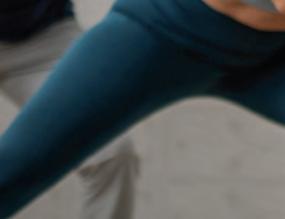







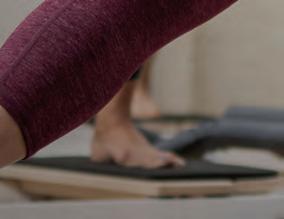





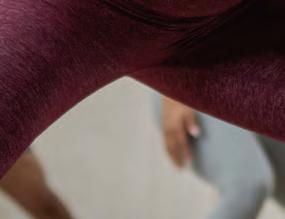


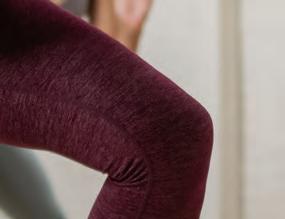

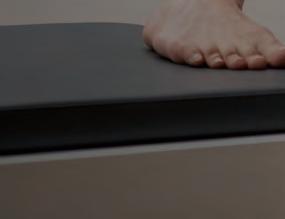















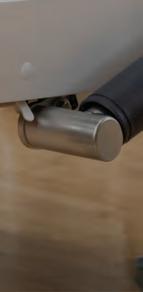
More than 6,000 padel industry professionals attended this year’s Padel World Summit in Barcelona. The record attendance connected manufacturers, investors, clubs, federations and industry leaders - cementing the event as the industry’s No 1 trade event
Taking place in May each year, the Padel World Summit is a unique space, acting as a platform to create strategic alliances and explore new business opportunities. Attracting a wide range of professionals and companies from within the sector, the event also promotes the professionalisation of the sport and its expansion into international markets.
Held at Fira de Barcelona’s Gran Via, this year’s edition featured a new location and a sleeker format. For visitors, the new format meant that it was easy to ‘dip in’ to the Innovation Zone, where 20 start-ups had the opportunity to pitch their ideas, or the main forum and hear from 50 plus

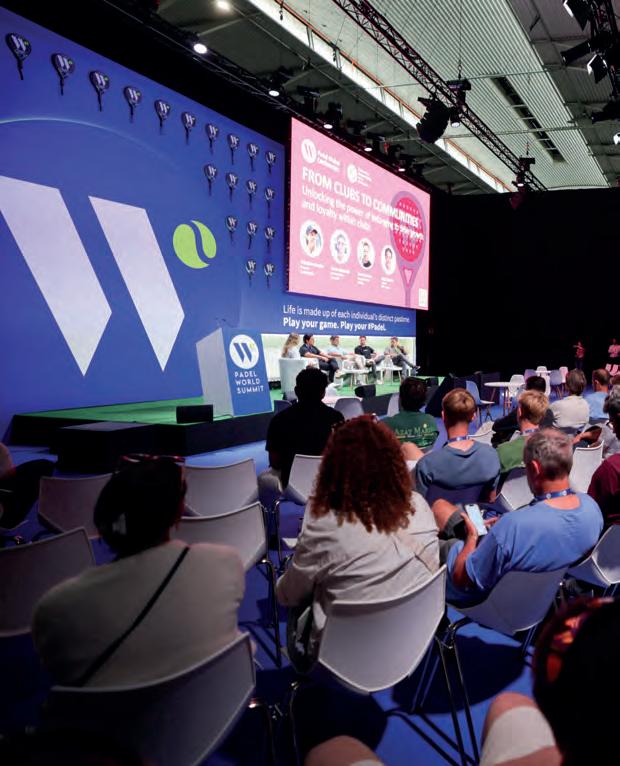
speakers on key industry topics. There was also a good sprinkle of padel stardust with global padel stars such as Fernando Belasteguin, Manu Martin and Bojana Jovanovic all gracing the Summit.
However, it was the exhibition floor where the event truly thrived, with new products launched, innovations showcased, deals struck, and connections made. The staging saw the main floor encircled by padel courts from eight of the world’s major manufacturers, taking the opportunity to catch the eye.
Those eyes focused on AFP Courts at the midway point of three-day show, as it officially launched the adidas PPL High Competition 2025, which was exclusively designed and manufactured for the Pro Padel League. It was the centrepiece occasion for AFP, with a ribbon cutting ceremony by PPL CEO Mike Dorfman, who was joined by representatives from adidas, GS Sports Management and future host cities in Mexico and Spain.
Mon Garres, marketing director for AFP Courts, said: “This is a milestone for AFP Courts being the official padel court for the PPL. This is a future investment because we want to be there when padel booms across the States.
“It’s already starting to boom in Florida, Texas, as well as California and we went to Racket X this year at the beginning of the year – it is a major new market for us. For us going hand in hand with the Pro Padel League was very important.”

The event provided delegates with a wide-ranging programme of sessions

Jubo Padel, which landed a prime location in the hall, used the Summit as an opportunity to explore potential industry partners. Lee J Witham, of Padel +, Jubo Padel’s distributor in the UK and the North America, explained how Jubo Padel looked to benefit from its presence in Barcelona.
“I’m looking at the industry and seeing what’s out there and if it meets our standards,” Witham said. “I’m not necessarily looking for anything in particular but just looking and assessing. Currently, we’ve new projects starting in the US, while the UK market is still developing for us, however we’ve recently just taken on a lot of new business. It’s important to keep informed.”
Elsewhere, padel court turf specialists Mondo used the show as an opportunity to reinforce its position as the leading court flooring manufacturer,

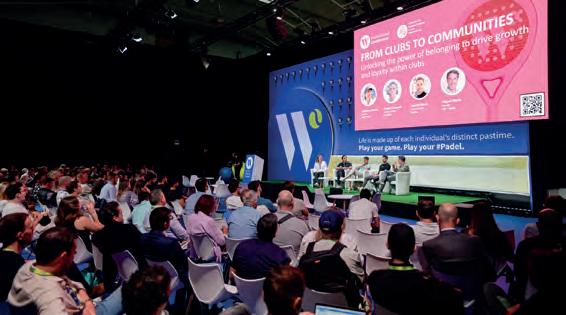
having launched Premier Supercourt X3, which is used by Premier Padel, 12 months ago.
Pilar Moreo, padel product manager for Mondo, said: “For us, it’s important to be at this global padel event. It enables contact with new distributors or new leads for projects across the world. In Barcelona we talked to a lot of customers from the UK, Germany, France, Australia, Spain, Italy and United States.”
Trocellen, which specialises in the development of the foam core for padel rackets, was showcasing its bio-based foams, which significantly reduce CO2 emissions. Jose Vicente Fernandez Morales from Trocellen Iberica, said: “From the soft density to a hard density and those in between, we have different products and foams that have different playabilities and different performance in the padel racket for all standards of players.
Away from hardware, Matchi x Matchpoint, creators of a white label booking app, were able to showcase their product having completed a full integration since last year’s show in Malaga.
Mario Aurino, business development manager at TPC-Matchpoint said: “Being at the Summit was an amazing opportunity and congratulations go to Alex Ponseti and his team on a great event.”
The Padel World Summit will return to Fira Barcelona on May 26-28, 2026
In December, the UK padel sector’s spotlight will turn to Bolton Arena as it hosts the next active-net Padel event, a one day event dedicated to exploring, investing in and connecting people in the fast-growing sector
Following the success of the inaugural event earlier this year, active-net
Padel returns with a packed day of education, networking, and partnership opportunities for anyone involved in or looking to invest in the thriving padel market. The event at Bolton Arena on 3 December, delivered by active-net (part of Active Insight), is designed to bring together universities, leisure operators, private fitness suppliers and investors alongside a wide range of specialist suppliers, including turnkey management solution providers, franchises, court manufacturers, marketing agencies, health and safety experts and equipment servicing companies.
With 30 confirmed padel court operators already attending, each will have the opportunity to participate in 12 one-to-one meetings with supplier partners, an invaluable format that has become a hallmark of the active-net series. These structured sessions, combined with scheduled networking slots and thought-provoking panel discussions, make active-net Padel a unique event where ideas turn into action and connections lead to tangible results.
Learning, networking & insight
The day will begin with a Welcome Panel, chaired by David Monkhouse, Director of Active Insight, who will be joined by leading figures from across the padel landscape: David Stalker of Soul Padel and Richard Shaw from SAPCA. Together, they’ll set the tone for the day, discussing how the sport continues to expand and what’s driving the surge in participation and investment.

Following the welcome, delegates will have the opportunity to tailor their learning by choosing between two insightful panel sessions.
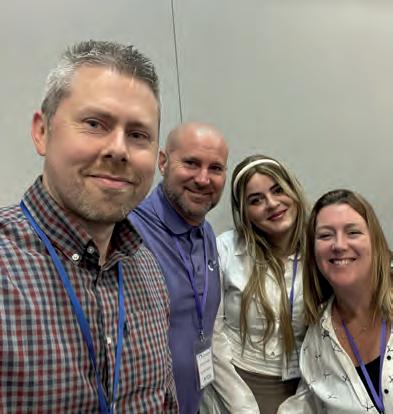


The first, “The Data Behind the Opportunity,” chaired by Julie Allen, Business Development Director at Active Insight, will include Jake Bennet from Padel Ventures and also Paul Mcilwraith from Portico Sport, who will provide market analysis and forecasts to help attendees understand where the biggest opportunities lie. Running alongside this session is “Building a Padel Community” which is being delivered by Edward Dowdell of Padel Social House, David Stalker from Soul Padel, Sam Thistlewaite of Padel Plan and Neil Adebowale from RiskHQ.
At its core, active-net Padel is about connection, helping operators and suppliers collaborate to shape the future of padel in the UK. The event’s format ensures meaningful conversations between decision-makers and suppliers, encouraging longterm relationships that drive innovation and growth.
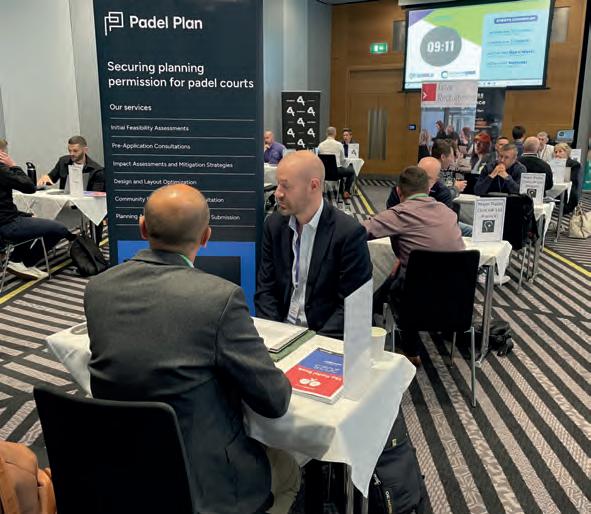
Whether you’re an operator exploring how padel could enhance your facility, or a supplier looking to connect with decision-makers driving the sport forward, active-net Padel promises to be an unmissable opportunity. To secure your space at the upcoming active-net Padel event on 3rd December at Bolton Arena, visit https://active-net.org/padel/
As David Monkhouse, explains: “Following our first event in June this year, we were asked by many attendees if we could organise a second session. We were delighted to see the high level of response and enthusiasm, and the passion for continuing the opportunity to come together as a group. The aim of the event, much like the other active-net series, is to connect people through insight, create memorable experiences, and bring together people to connect and form relationships. We are looking forward to bringing better connection across the sector and empowering operators to take their businesses to the next level. We know that the first active-net Padel event had a huge impact on connecting people, helping operators and suppliers to build meaningful partnerships, and extend the enthusiasm and awareness of padel across the UK. We are sure that this second event will build on that.”
With padel courts continuing to spring up across the UK, the appetite for knowledge, collaboration, and investment in this dynamic sport shows no sign of slowing down. activenet Padel provides the perfect platform for the industry to come together, share expertise, and strengthen the foundations for continued growth.
Padel Relations has organised its first global networking event for padel in Amsterdam, attracting more than 40 businesses from 25 countries. The success of the event has led founder Victoria Pahlett to begin planning next year’s event
The first Padel Relations event –held in Amsterdam, Netherlands in early autumn – delivered above expectations, with more than 90 attendees representing in excess of 40 businesses from 25 countries. Entrepreneurs and innovators from the US, Africa, the Middle East and Europe came to the Dutch capital representing various sectors of the padel industry. Delegates included club owners and operators, technology providers, travel operators, clothing and equipment manufacturers and suppliers, women’s padel, court construction, and public relations.
Unlike the hurly burly of large scale expos, the two-day event was a more intimate gathering, with attendees given the chance to talk without the rush and the usual sales push.







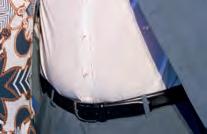




Across the two days, attendees got an insight into the padel industry in Amsterdam with events at three locations – Peakz Padel Zuidoost, XNRGY and Padel NEXT. Delegates participated in structured networking sessions and built business connections on and off the court. The event concluded with a gala finale held in the city’s Royal Tropical Institute, including the first ever padel fashion show.
One of the key pillars of Padel Relations’ launch strategy was to have an in-person focus, bringing together industry professionals for an informal and productive networking event.
Padel Relations – a membership-based initiative – was founded by Victoria Pahlett, who previously worked for Playtomic, MATCHi, and Matchable. She is now overseeing Padel Relations full-time having founded the company at the end of 2024.
“The goal is to make personal connections and build business relationships across padel globally and this event was already part of the plan when I launched Padel Relations,” she said.
“Amsterdam was an obvious choice for the first location as it’s an international hub and I knew some of the clubs here were really excited about the idea.






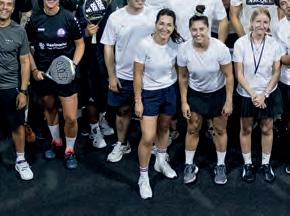












“The schedule saw two fantastic days. We held a global tournament, pairing people up in group competitions, and adding downtime for everyone to mingle and talk with their new connections.
“The second day was all about networking on and off the court. We also provided the opportunity for companies to showcase new products.
“We finished with a gala event featuring a padel fashion show. This was totally unique as it’s the first one ever. Brands had the opportunity to show new collections and existing collections in an amazing location.
“Organising something like this does have its challenges but everyone attending has been great and brought a lot of energy and enthusiasm.”
Club operator Mark Lyons, from Salt Lake City, was full of praise for the event He said: “I’ve met a lot of different people that have different aspects of the padel ecosystem that I am able to connect with. Seeing what’s available and having these conversations is important to me as a club owner.
“It’s a lot more intimate than a trade fair and I got to meet more industry leaders in a more social environment. You do meet different people but you meet a lot of people and those contacts
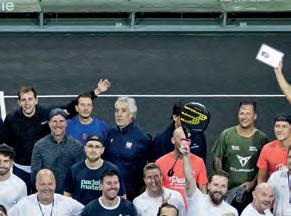




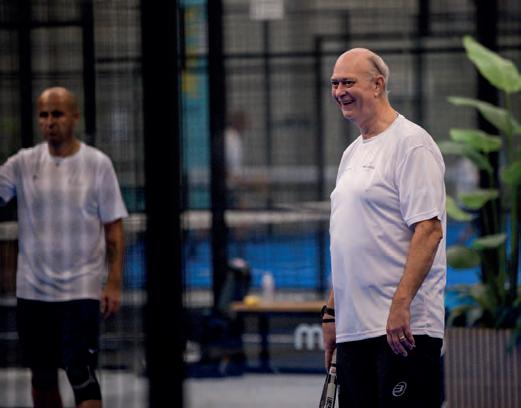
can get lost or you are simply a number. Here, you have played padel with these people, they understand more about you, so the value is greater.”
Padelpalooza founder, Antonio Goes, travelled to Amsterdam from New York and demonstrated his technology platform on the opening day ahead of going out to pre-seed for investors. “It’s great to be here with the top minds of padel who are trying to shape the future of the sport,” he said. “I heard about Padel Relations in Barcelona and fell in love with the project. It’s a great mix of padel with businesses, so it made sense to be here.”
Looking ahead to the growth of Padel Relations in its second year, Pahlett is aiming to increase its worldwide presence.
She said: “I think there are so many countries living a little bit in a bubble, I want to expose those countries to the world a little bit more.
“One example is South Africa. I think it is really underestimated. It has so many amazing clubs, great people and culture. It’s one of those countries where I want to see Padel Relations grow. Many countries are at different stages of development and I’d like to bring them all together to try and level up.”
SAPCA has updated its Code of Practice for padel courts, which sets out the standards required for padel court construction in the UK
The Sports and Play Construction Association (SAPCA) has updated its Code of Practice for the Construction of Padel Courts. The code, which can be downloaded for free from the SAPCA website, has been produced in consultation with padel’s national governing body, the LTA, and is recognised and supported by the LTA for the construction of courts in the UK.
The document provides designers, specifiers and prospective facility operators with guidance on the basic construction requirements and specifications currently employed in building padel courts. The standards outlined throughout the code are recognised and supported as the minimum level for the construction of padel courts in the UK. As well as input from LTA and SAPCA’s technical experts, the document calls on the experience of SAPCA member companies, who have constructed a wide range of installations for a variety of clients over many years.
The Sports and Play Construction Association represents companies that design, build, and maintain sports and play areas. The association’s 260+ members are carefully vetted for excellence and are committed to SAPCA’s Codes of Practice and guidelines –ensuring they work to the highest standards.




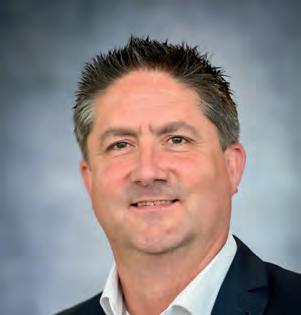



The updated code now has a new section on maintenance – a key element of protecting the facility’s investment and to ensure players enjoy a consistent, safe and high-quality experience. The newly added maintenance section in SAPCA’s updated Code of Practice for the Construction of Padel Courts sets out, for the first time, a formal framework for maintaining court quality, safety and longevity.

The Code emphasises that regular inspection and servicing are essential to preserve playability and prevent costly repairs. It outlines best practice for court surfaces, including routine cleaning, sand topups and redistribution to maintain even ball response. Inspections also help identify and rectify loose bolts and panels early, before they become a safety concern




The section also details inspection regimes for metal enclosures, anchor points, and fixings, warning that corrosion and loose fittings can compromise both safety and structural integrity — particularly in outdoor UK conditions. To ensure player safety, the section also covers glass panels and markings, recommending regular checks of fixings, while offering specific advice for maintaining lighting systems and canopy structures.
The inclusion of this section marks a shift toward treating maintenance as an integral part of facility management, not an afterthought. It reinforces that proactive, planned maintenance is crucial for padel courts to perform as intended, remain safe for players, and deliver long-term value for operators.



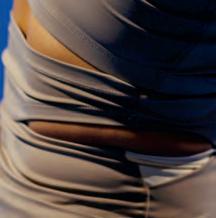
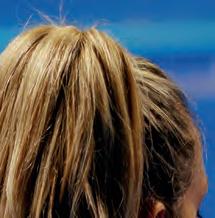

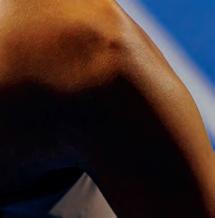





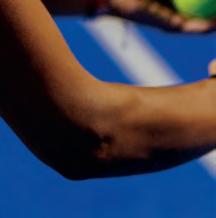







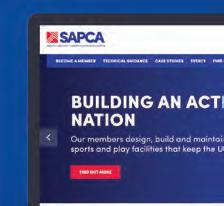





Elsewhere, there are further enhancements to guidance regarding the design and construction of suitable base works for the UK market. Reflecting the country’s varied soils, high rainfall and exposure to frost, the Code now places greater emphasis on site-specific foundation design by a qualified UK structural engineer, with calculations addressing local ground conditions and wind loads. A correctly engineered porous sub-base and drainage system are deemed essential to prevent water retention and surface movement.



The Code of Practice for the Construction of Padel Courts – alongside all other codes – from the SAPCA website: https://sapca.org.uk/guide/codes-of-practice/
Overall, the enhanced specifications underline the importance of UK-adapted construction methods to ensure long-term stability, consistent performance and player safety, while aligning padel court development with the latest environmental and structural engineering standards.

The revised guidance details preferred materials – hard, non-frost-susceptible aggregates such as reduced-fines MOT Type 1 or 28–50 mm clean stone – and recommends geotextile membranes to separate sub-soil and improve load-bearing strength. For new courts, two layers of open-graded porous asphalt remain the standard, while conversion projects must include drainage checks and, if necessary, surface “piercing” to aid percolation.
Colin Corline, SAPCA’s Technical Lead, said: “This is the second update to the padel courts Code of Practice this year. It follows the addition of information regarding the supply and construction of covered structures – such as canopies and tensile frame buildings – and guidance highlighting how site-specific designs are paramount.
“The padel sector is a fast-moving one and it is important that the code reflects the latest developments in the sector.
“The recent updates are an example of the important role that the SAPCA Codes of Practice have in setting and maintaining standards in sports construction – and the way they are kept relevant and updated to reflect best practice in a dynamic market.”
